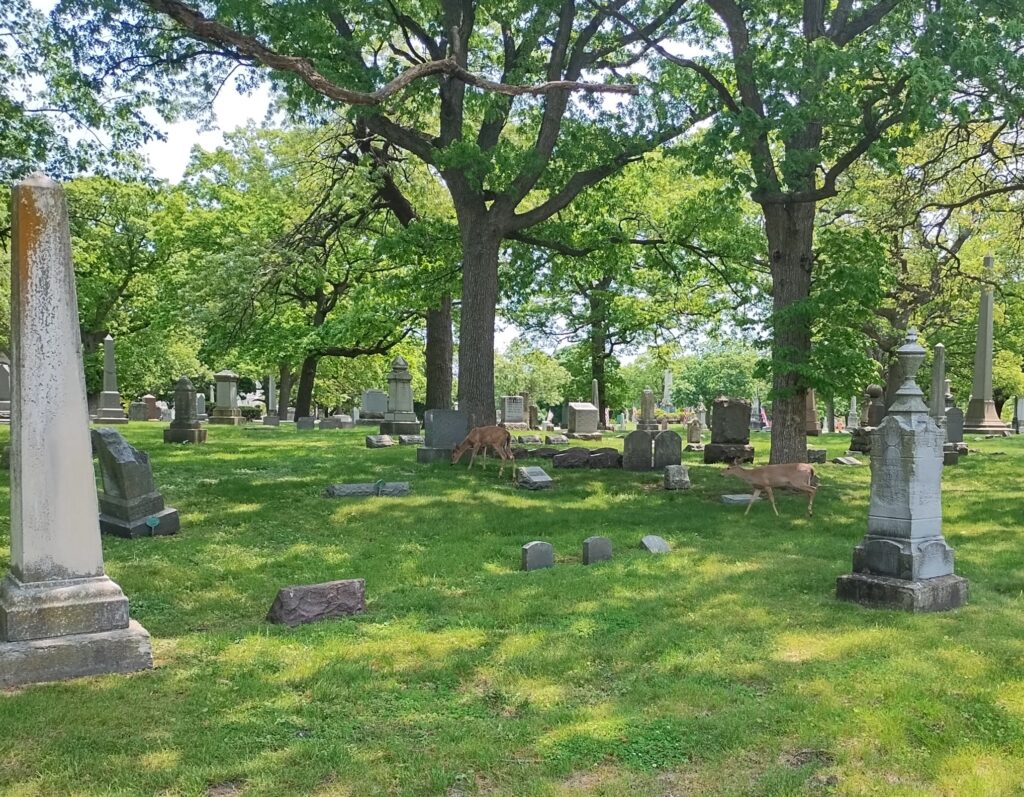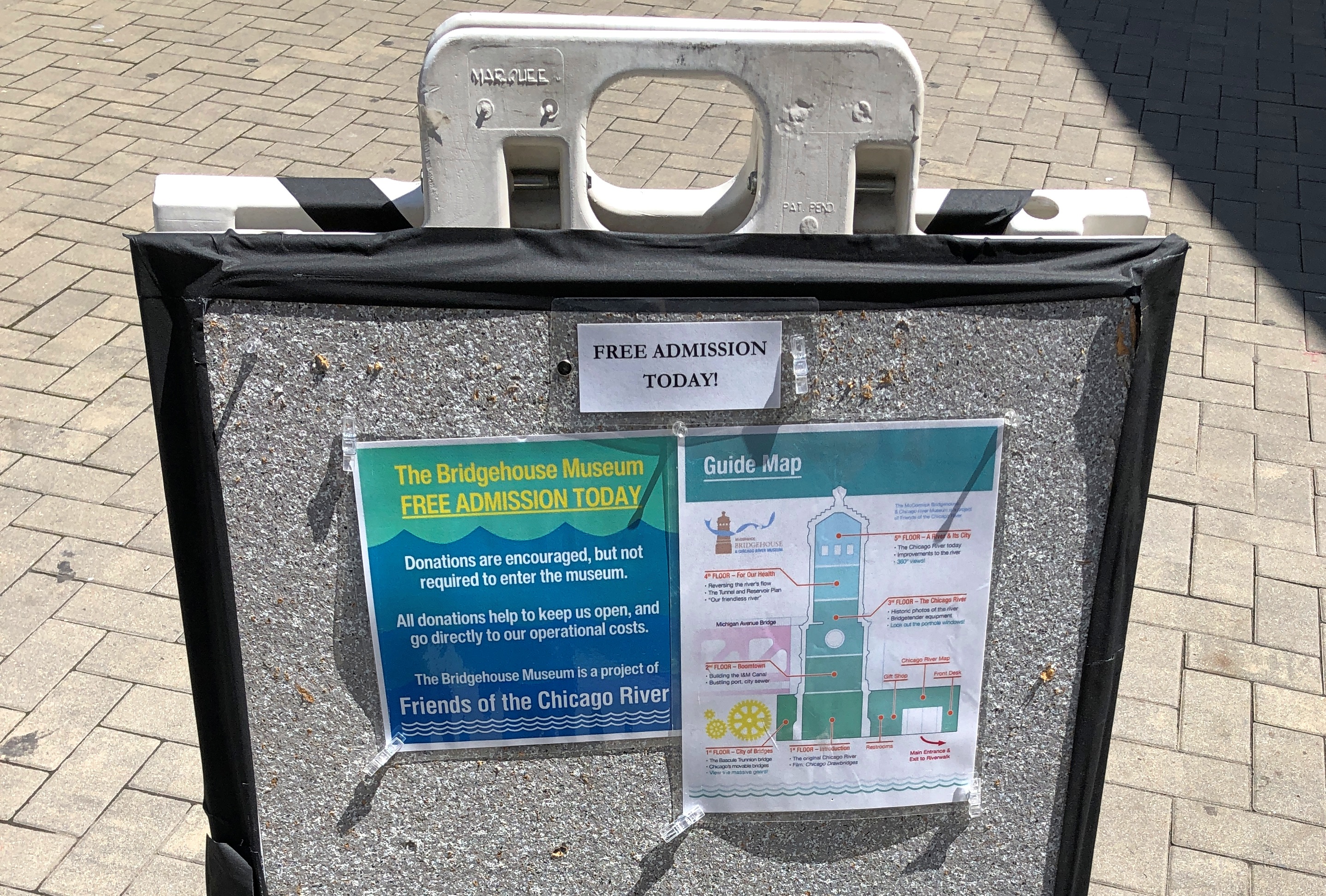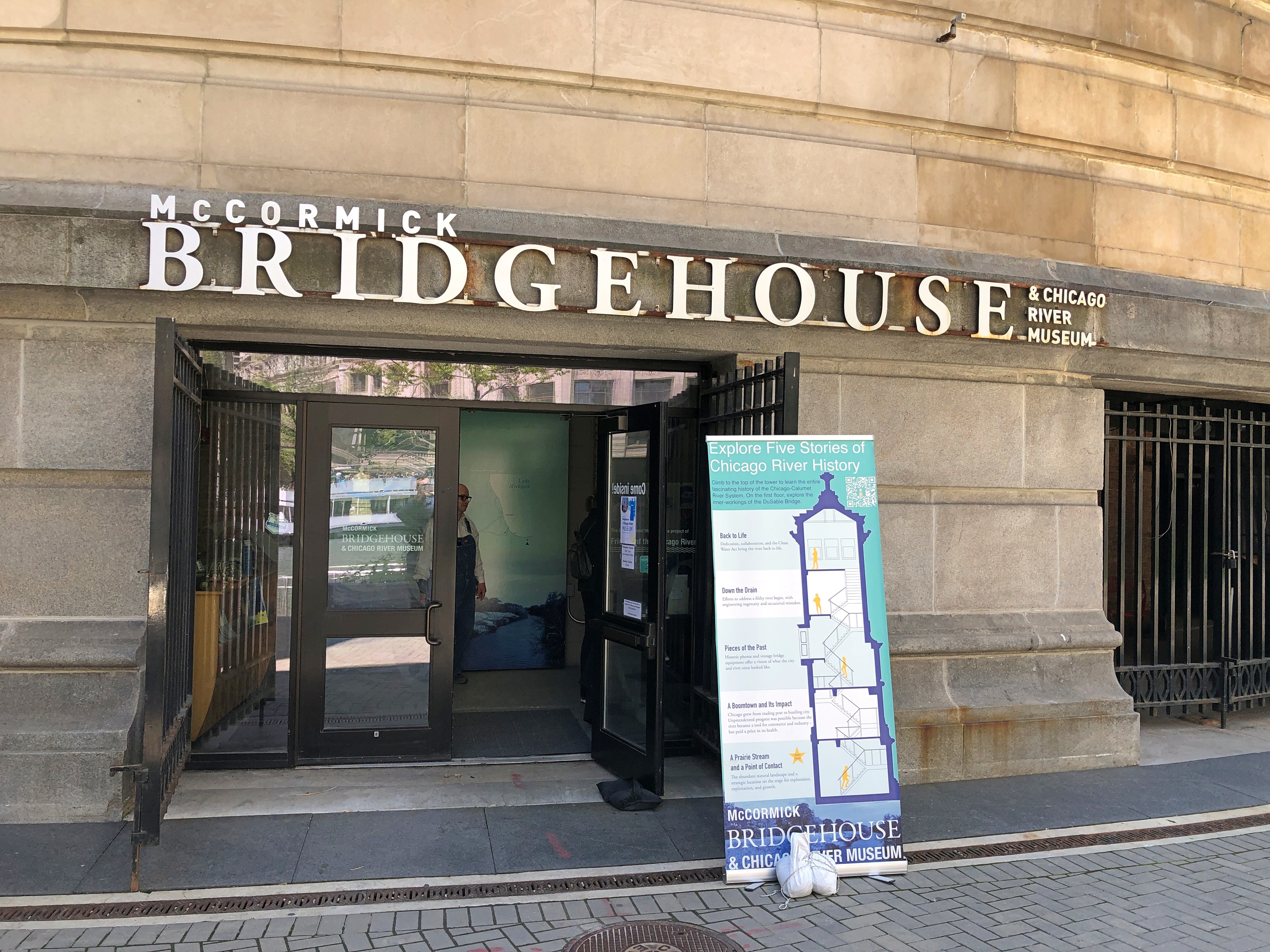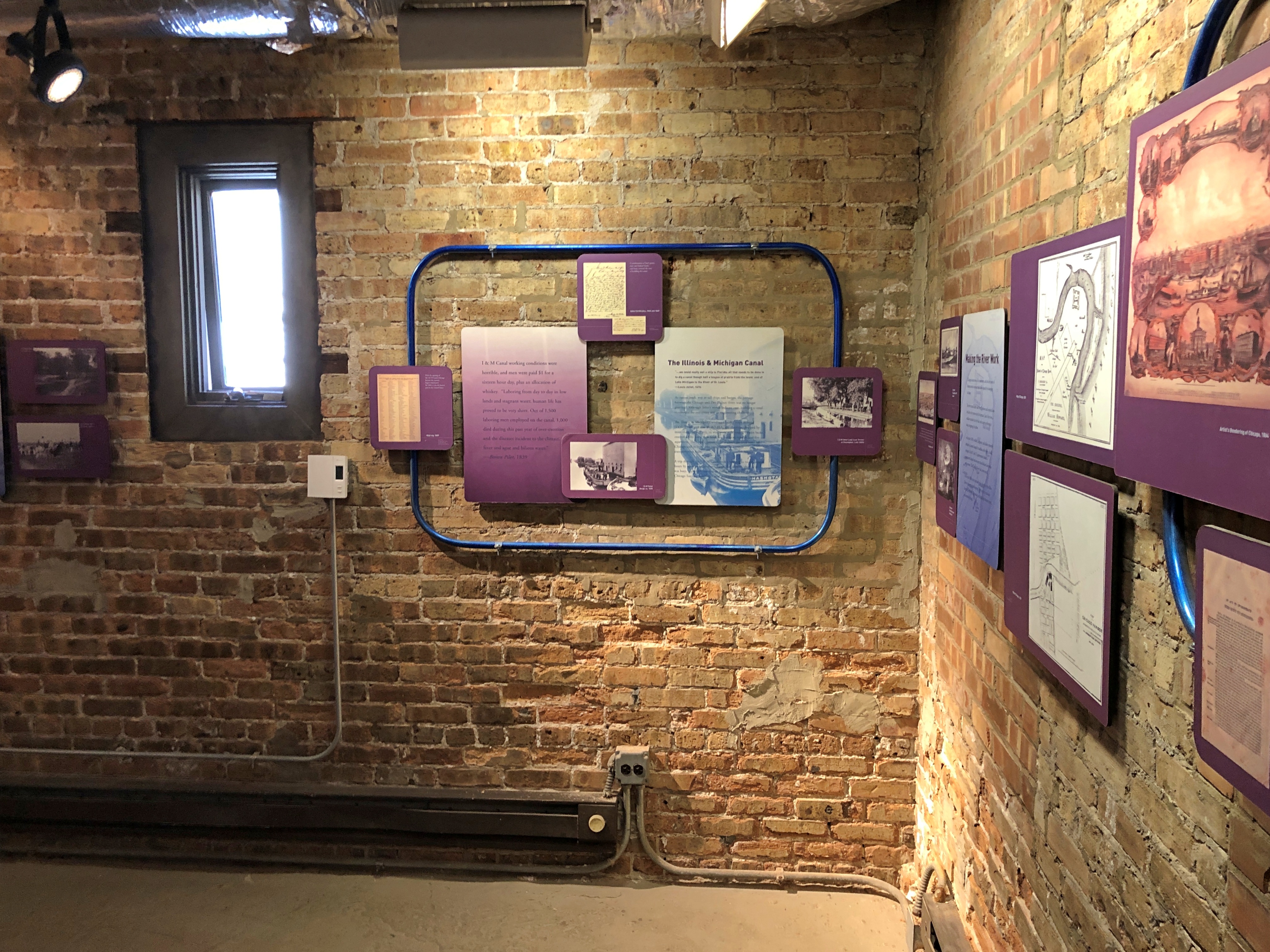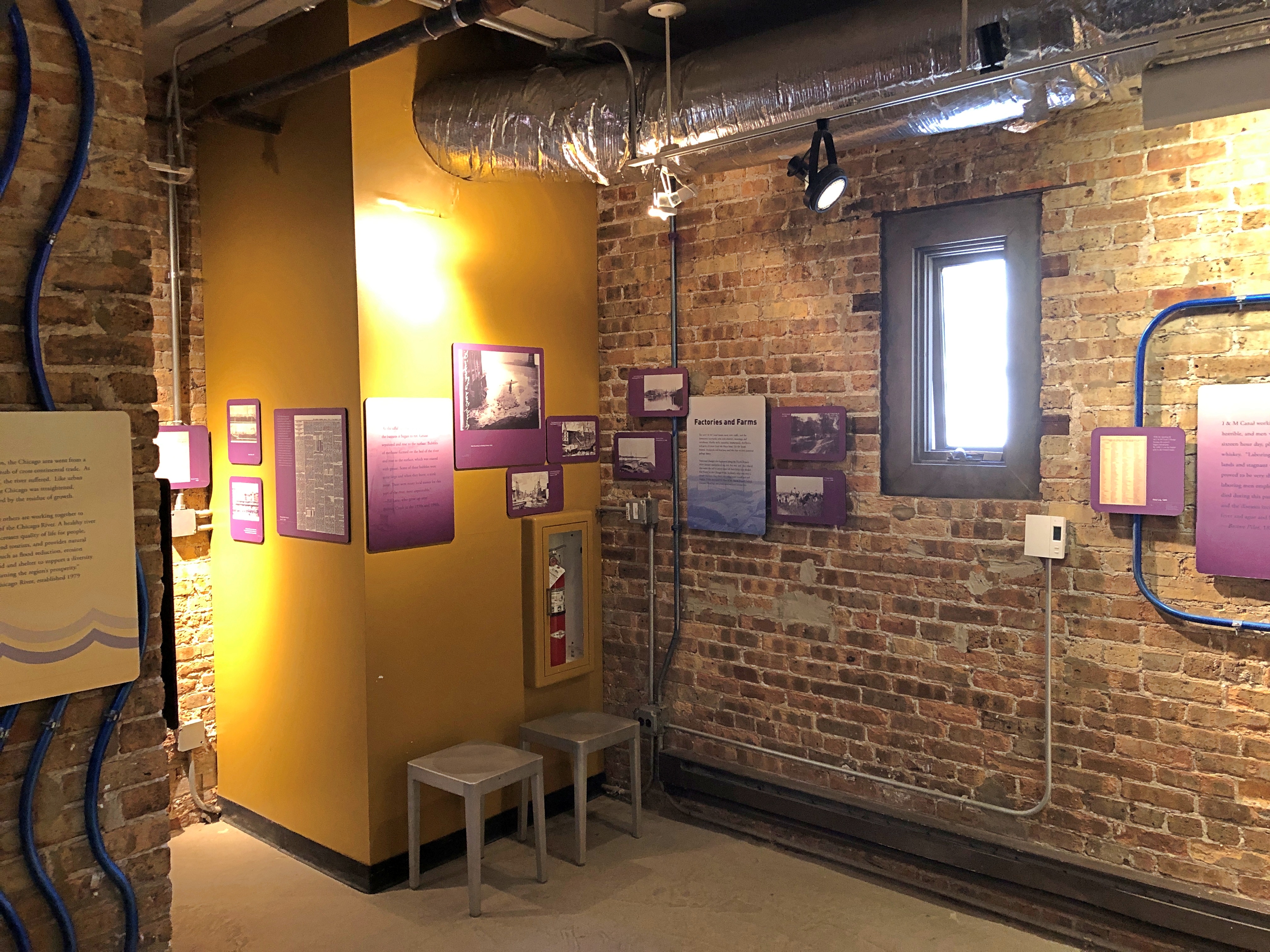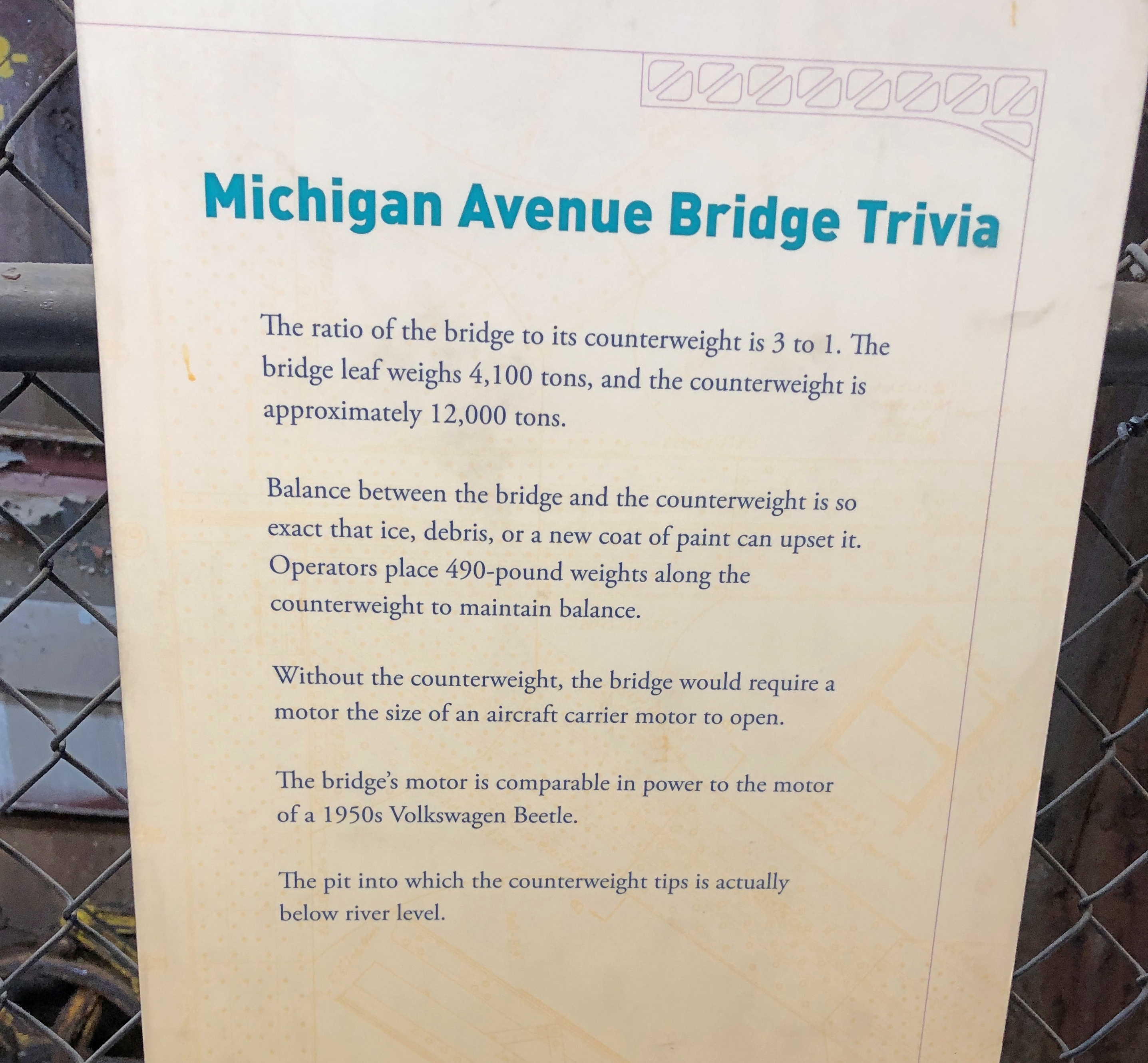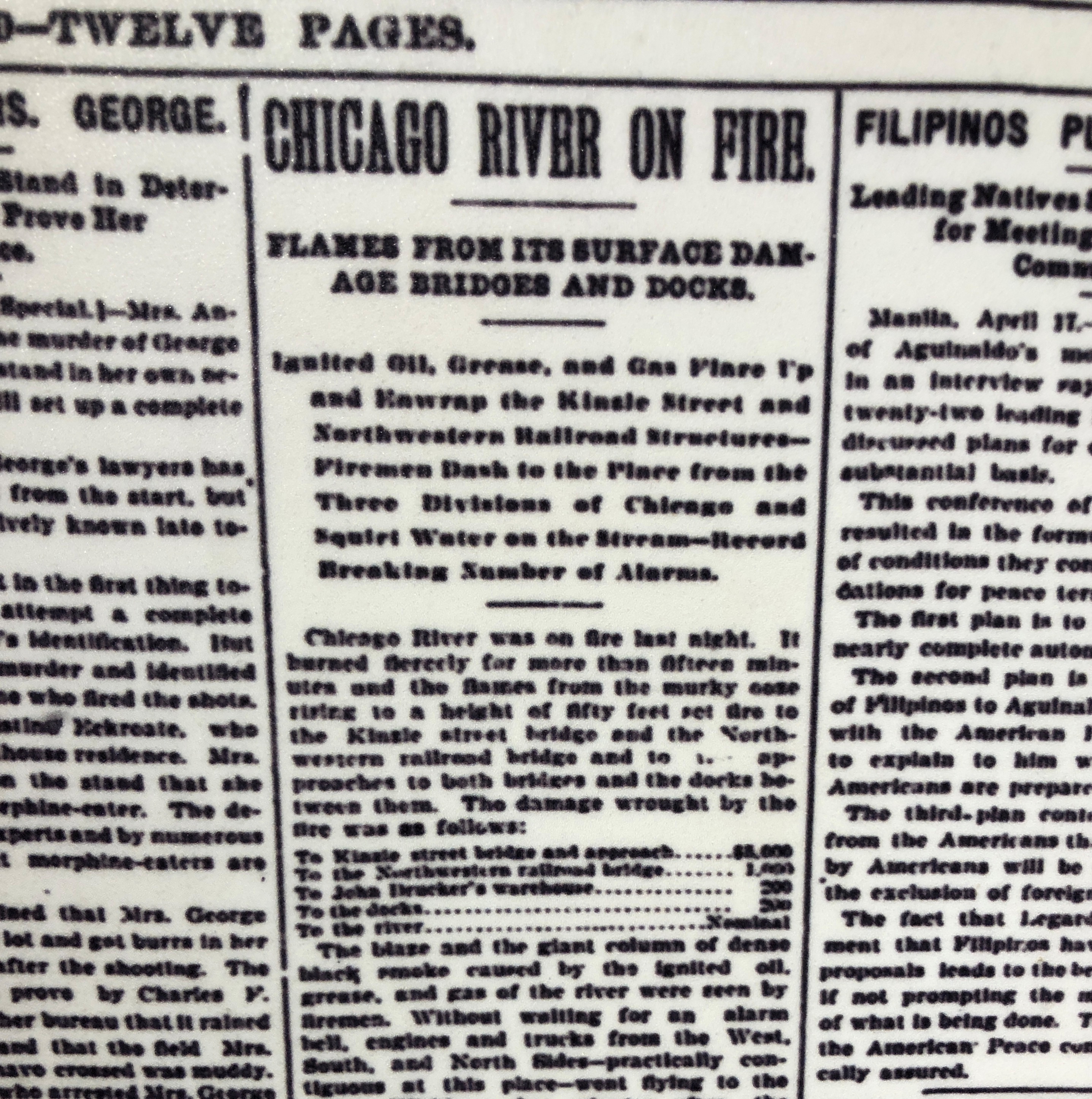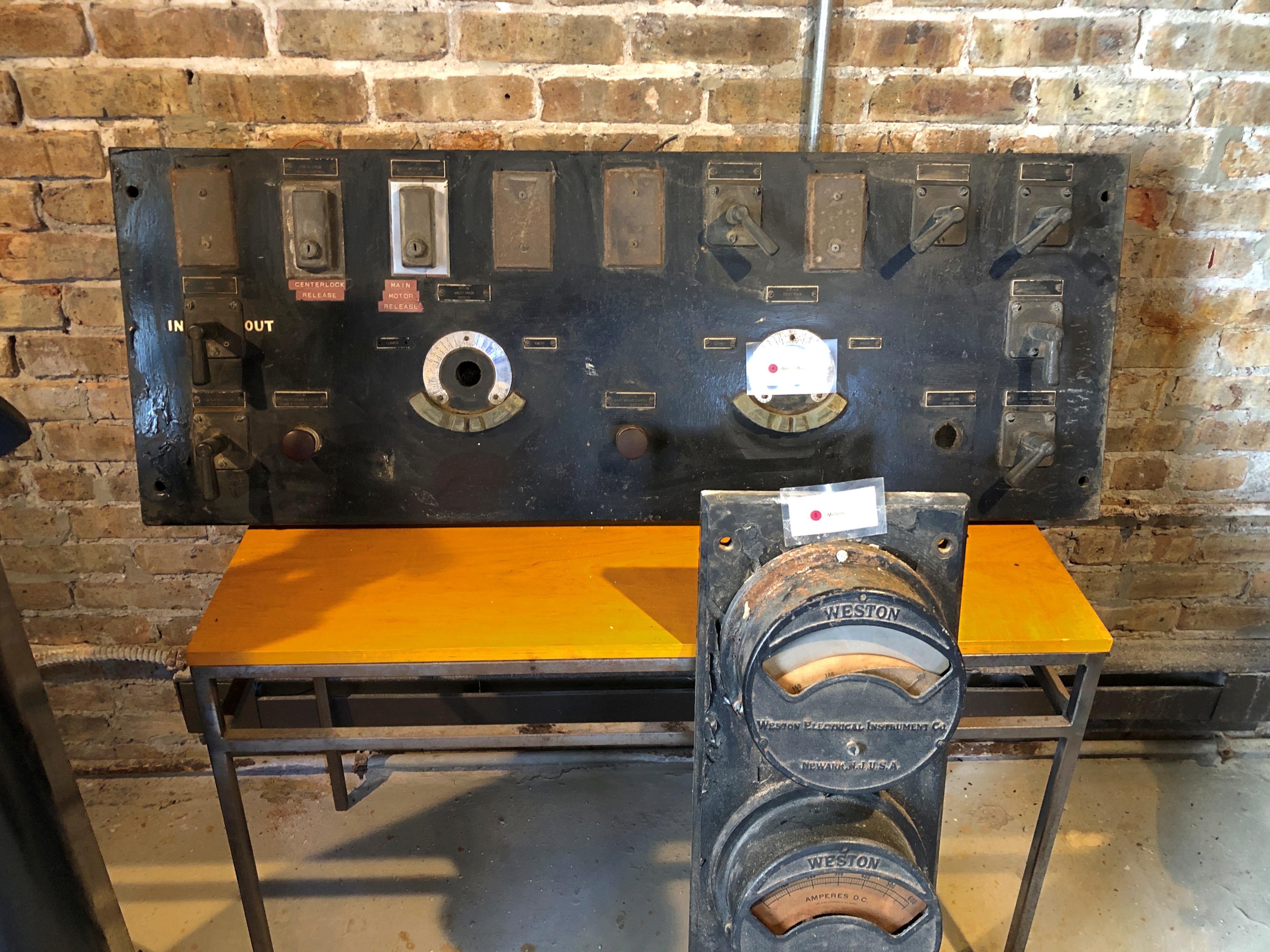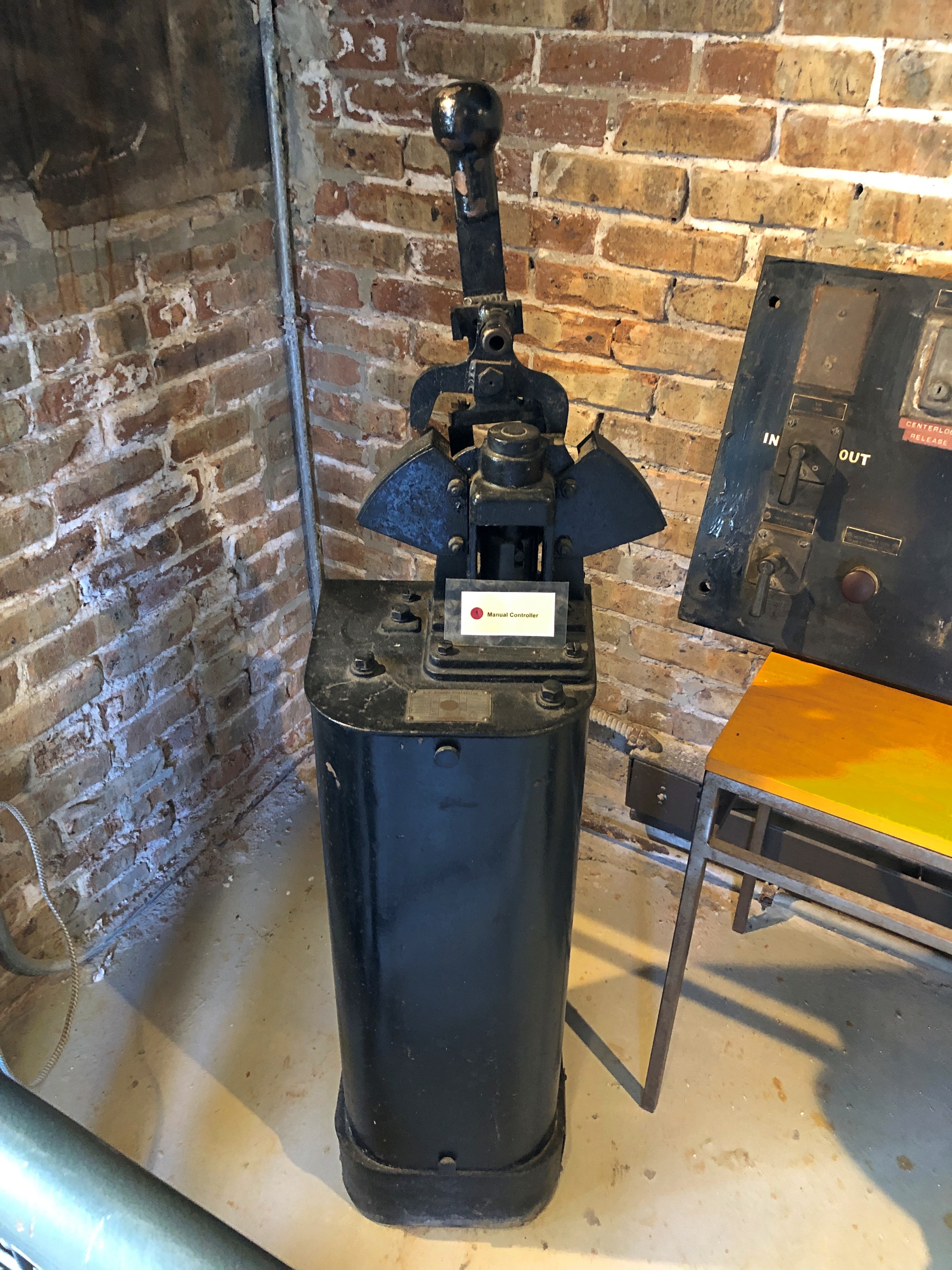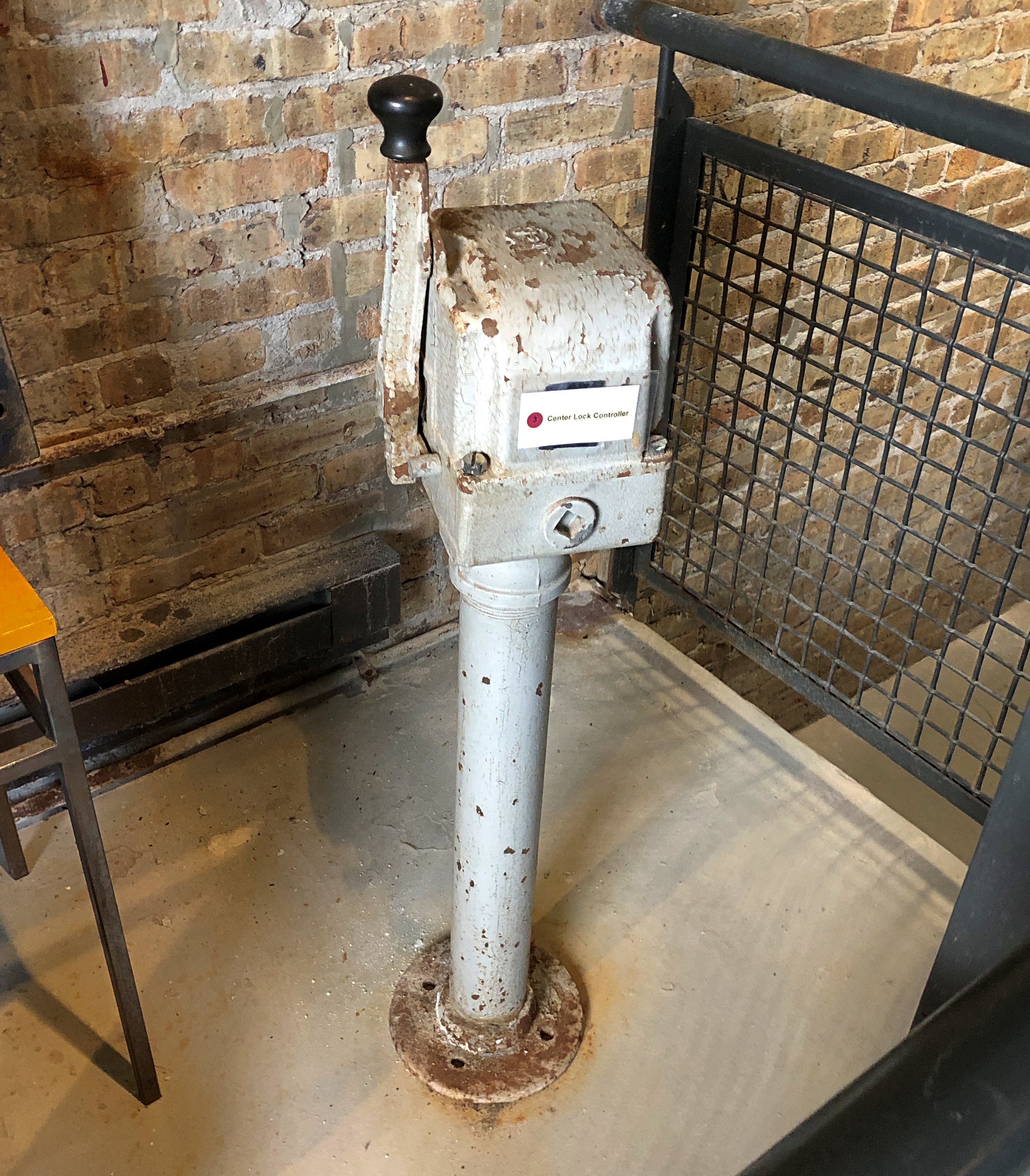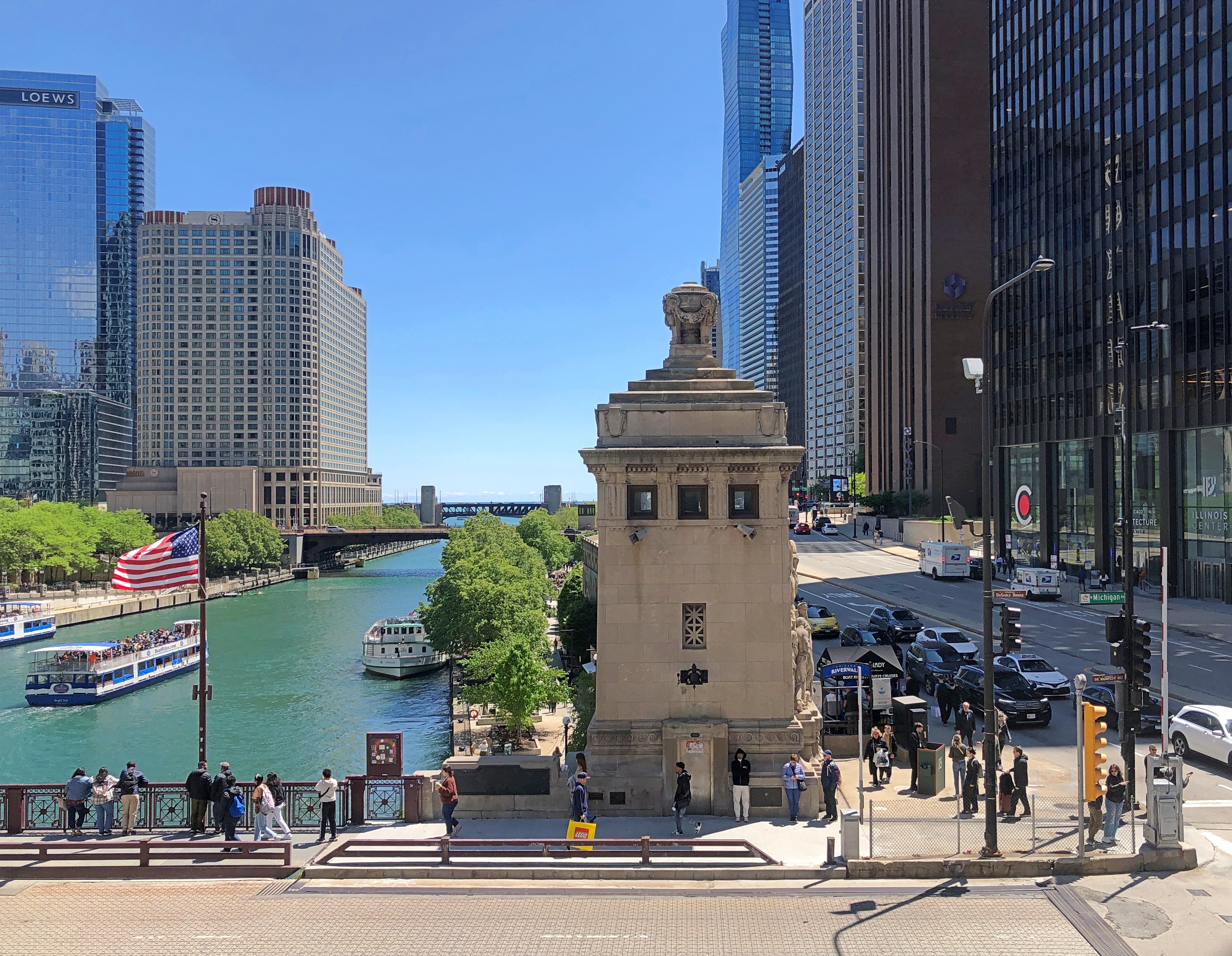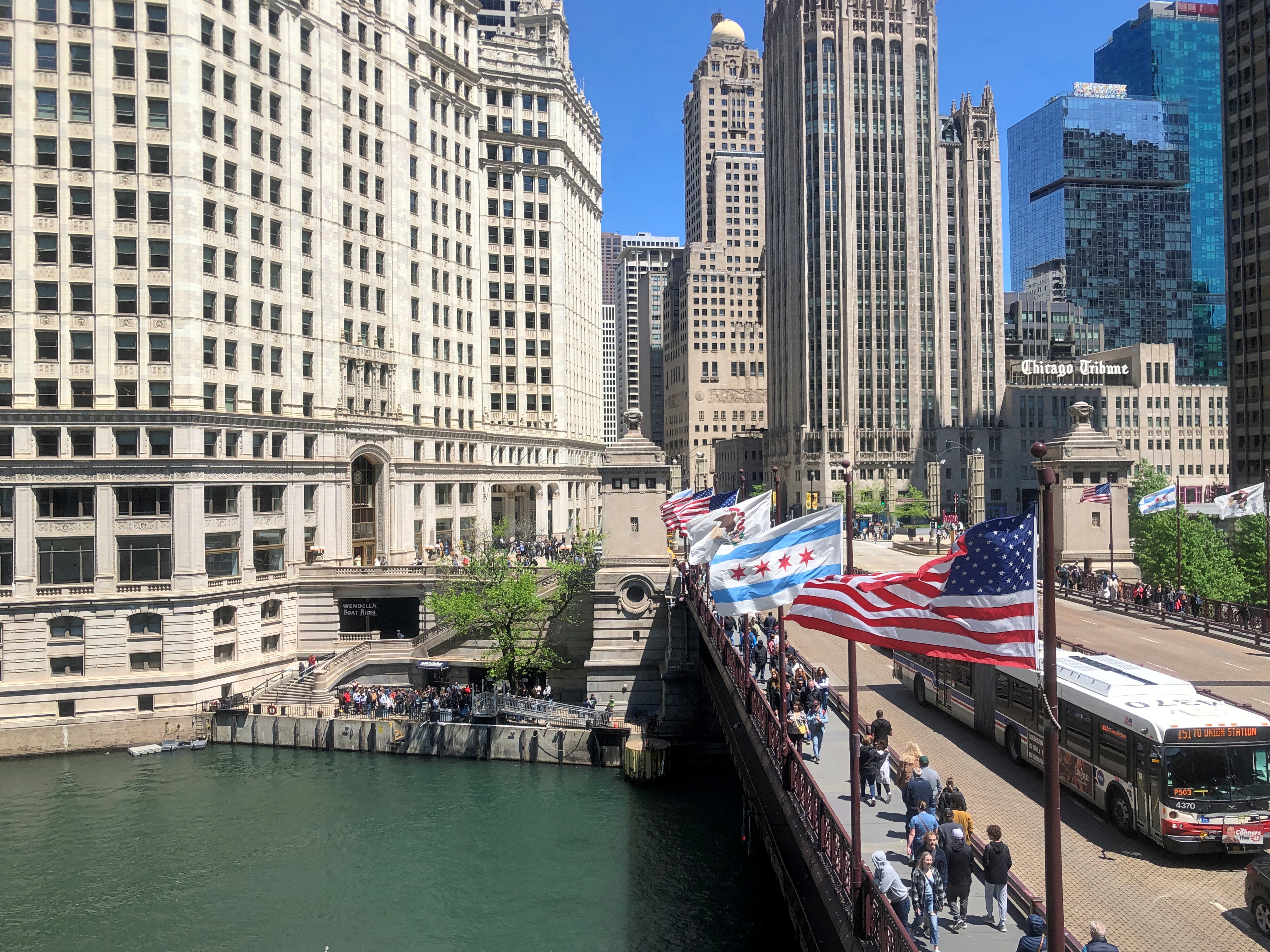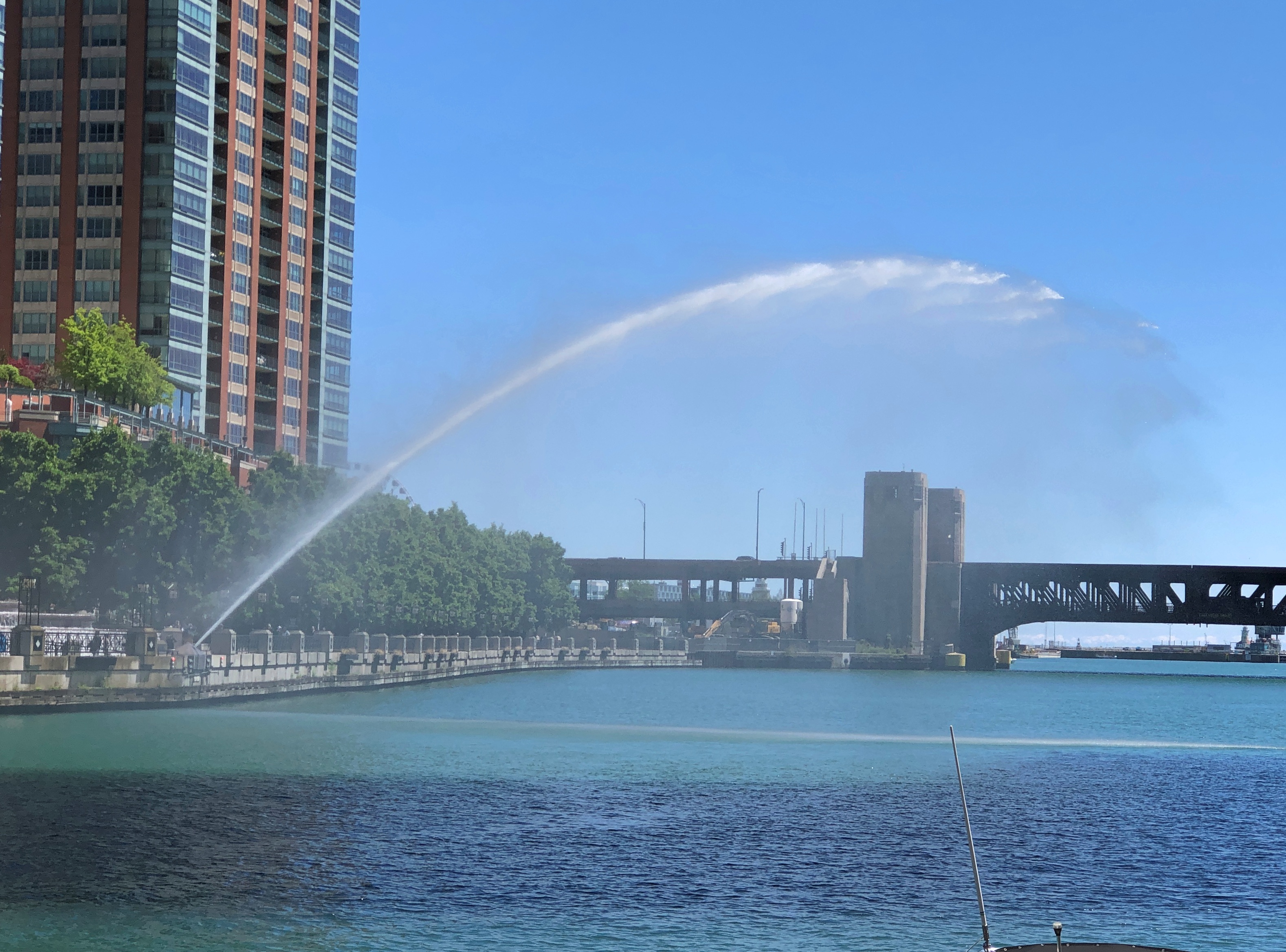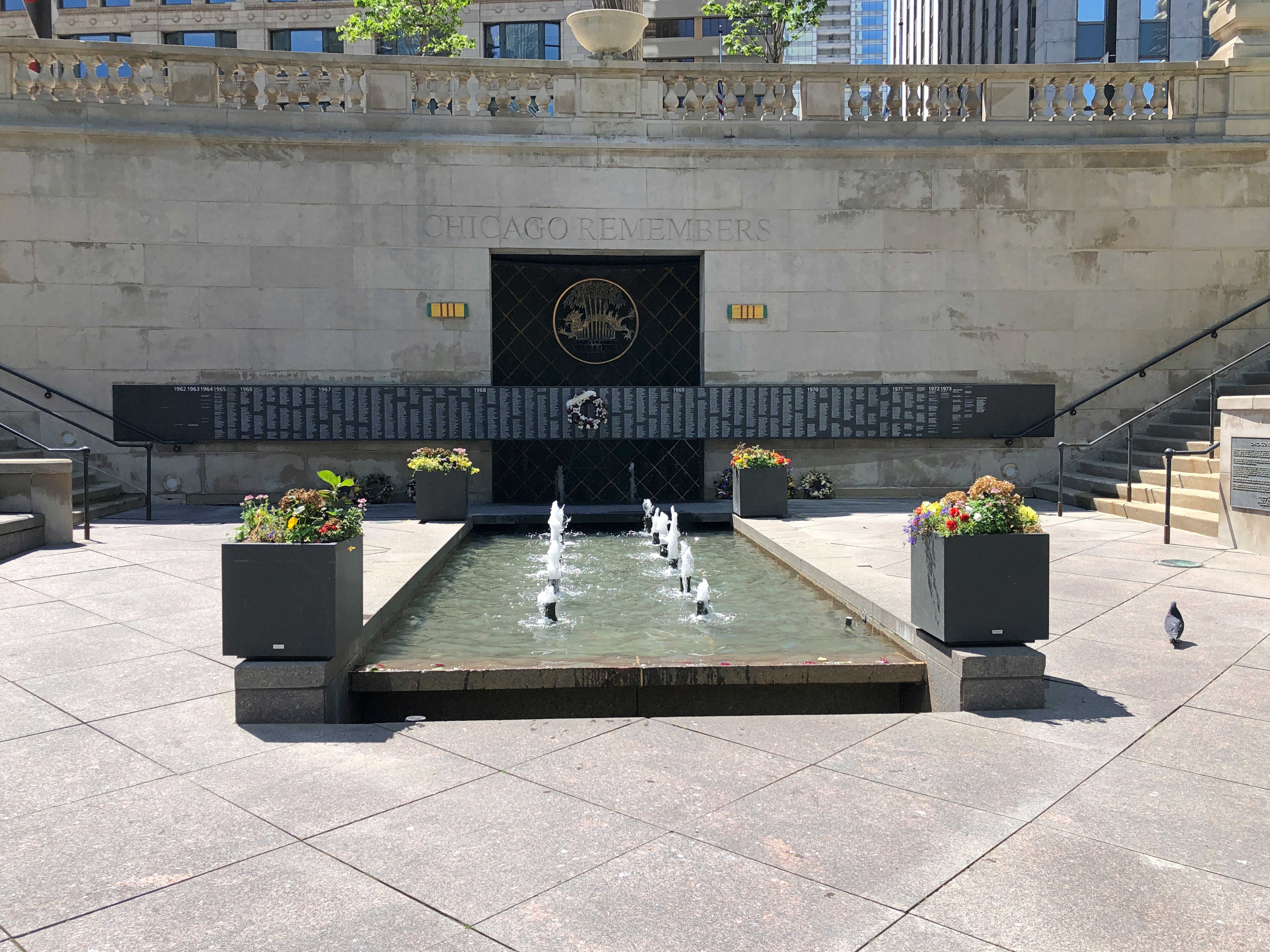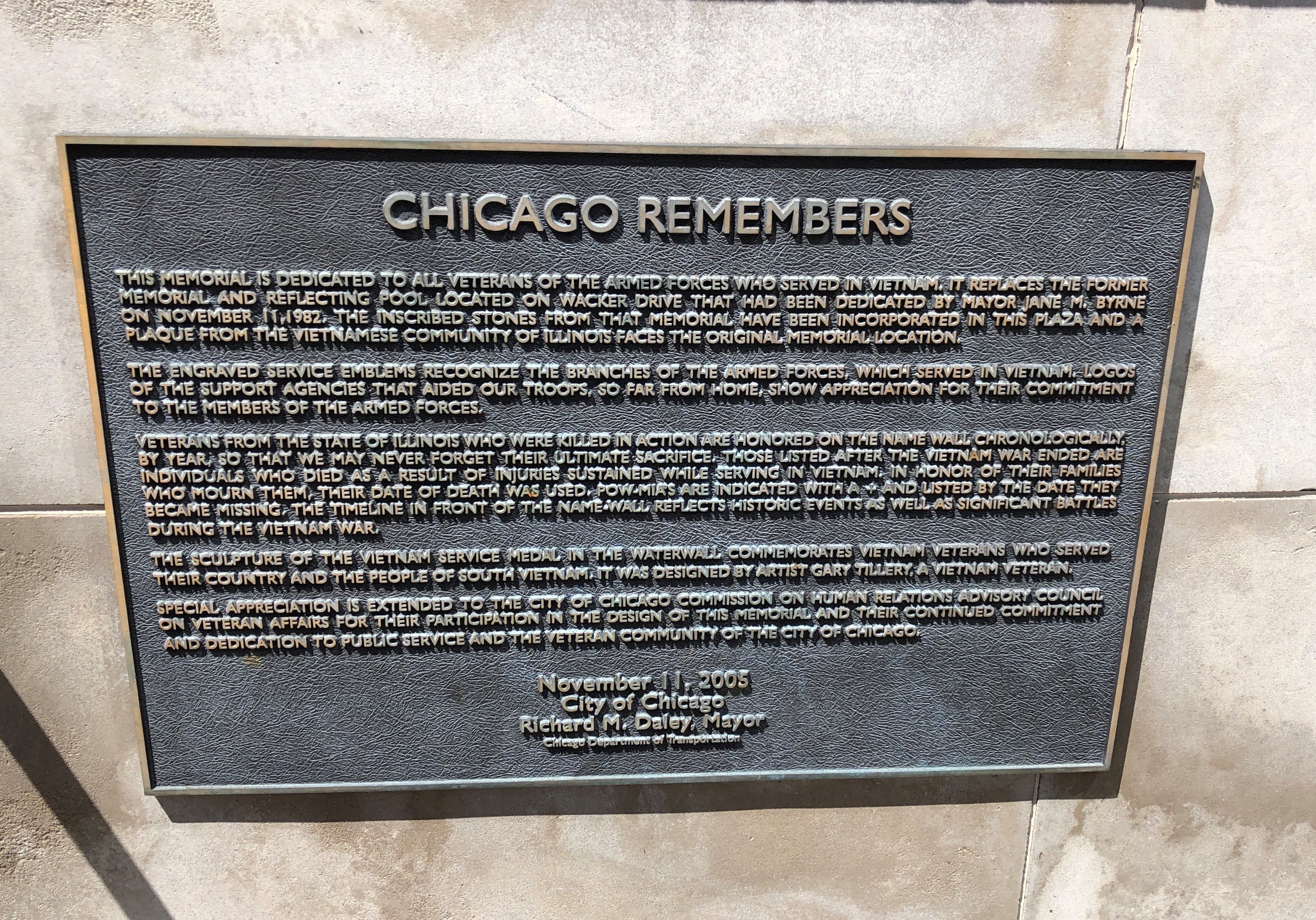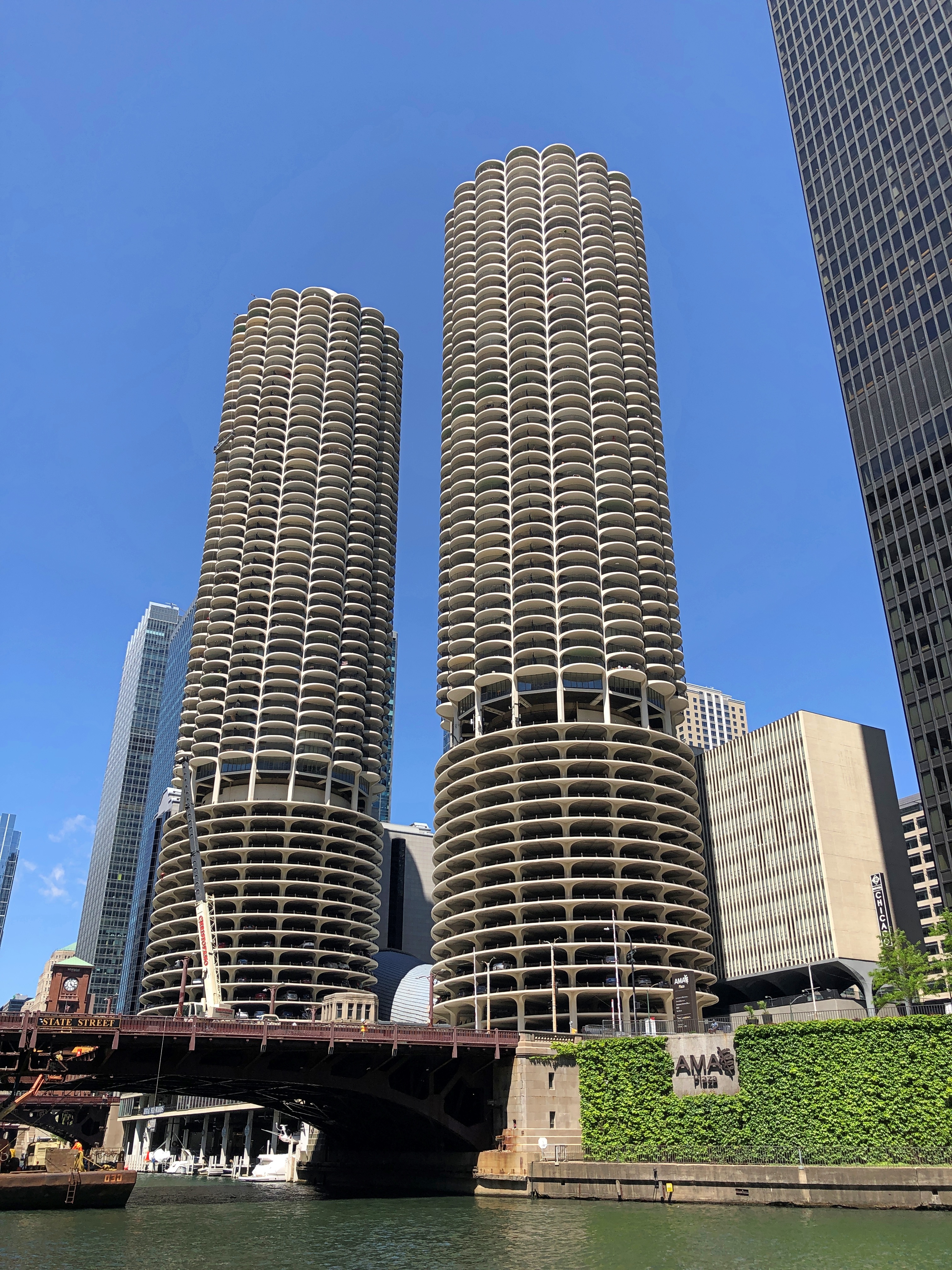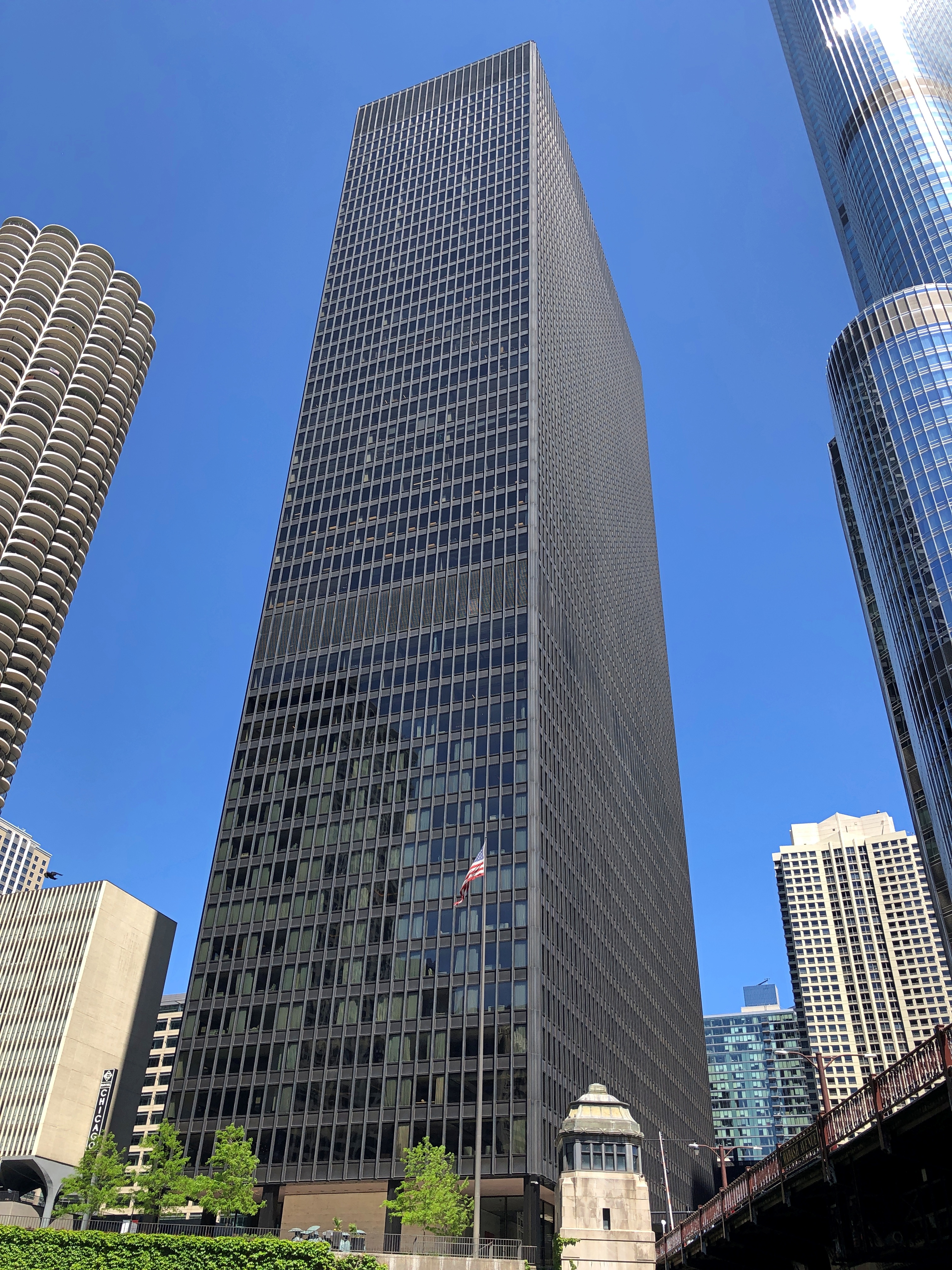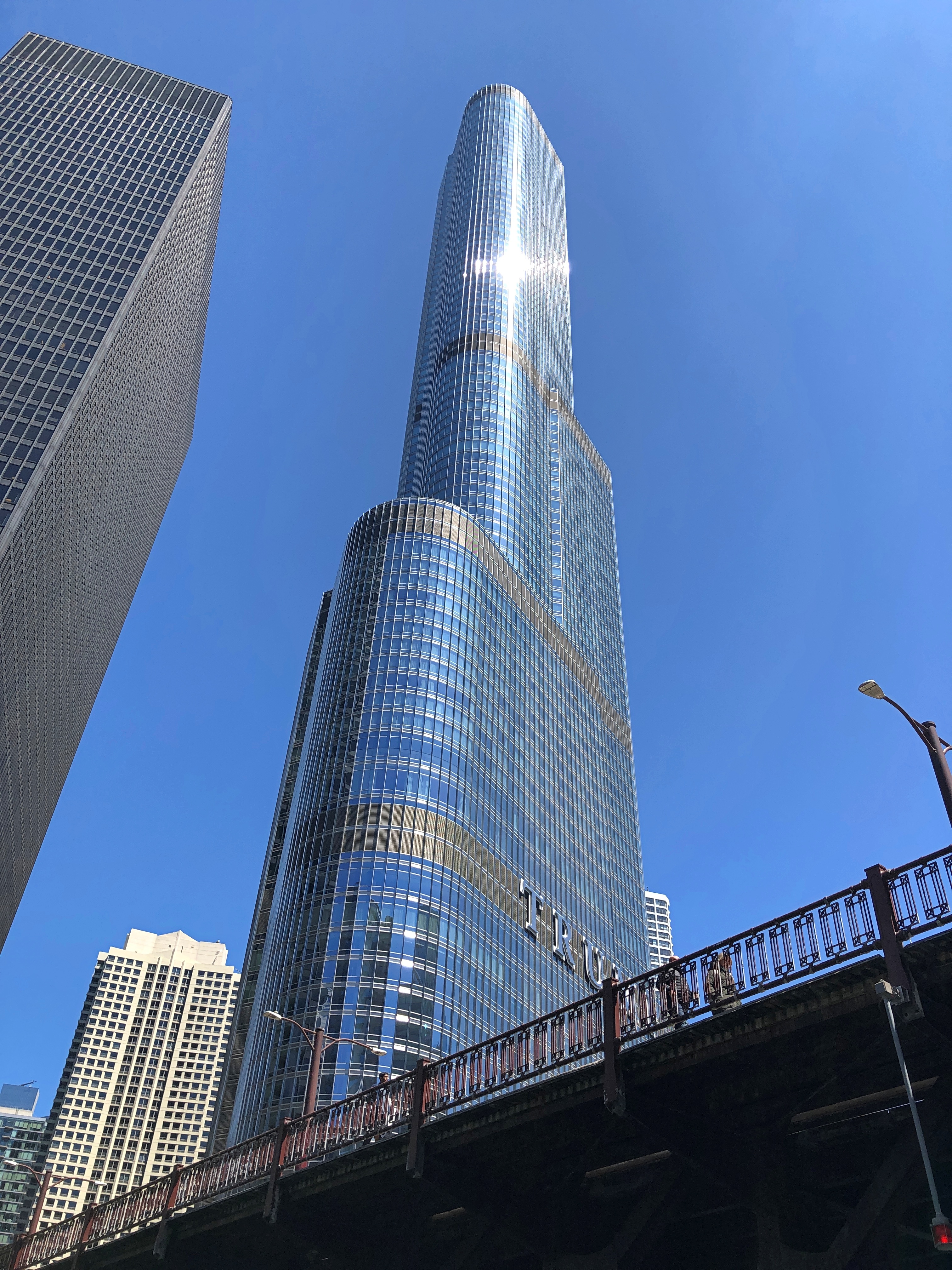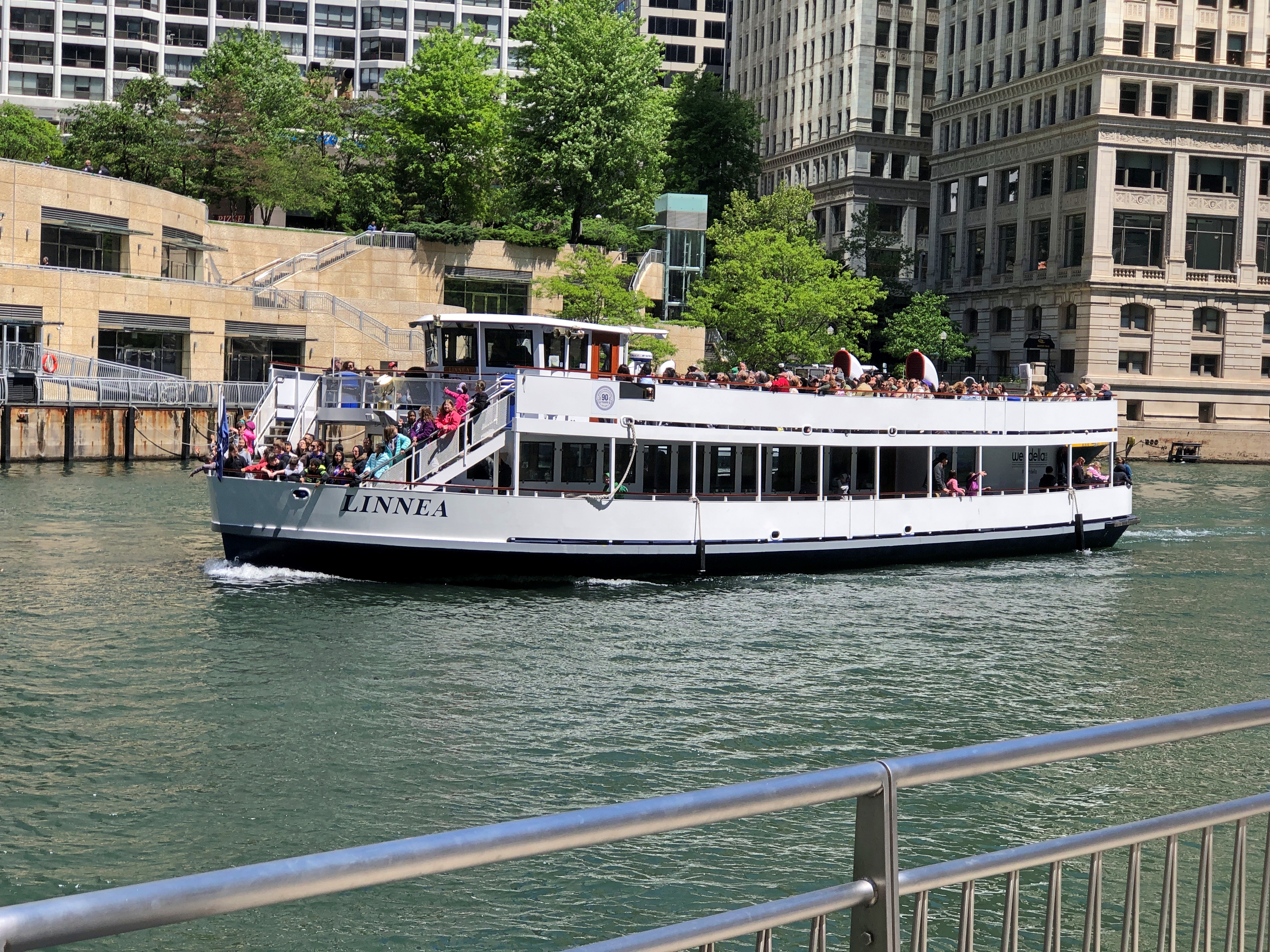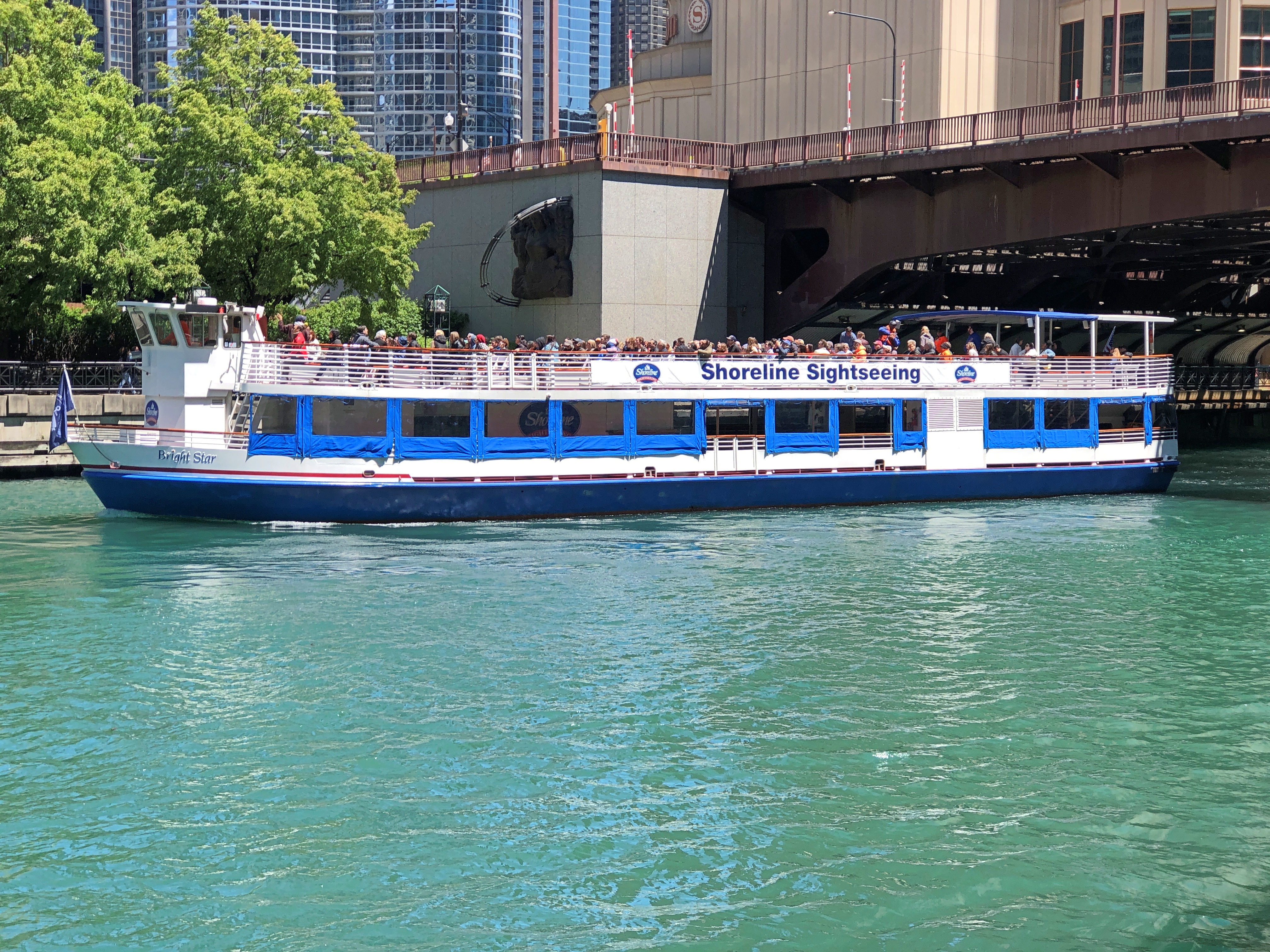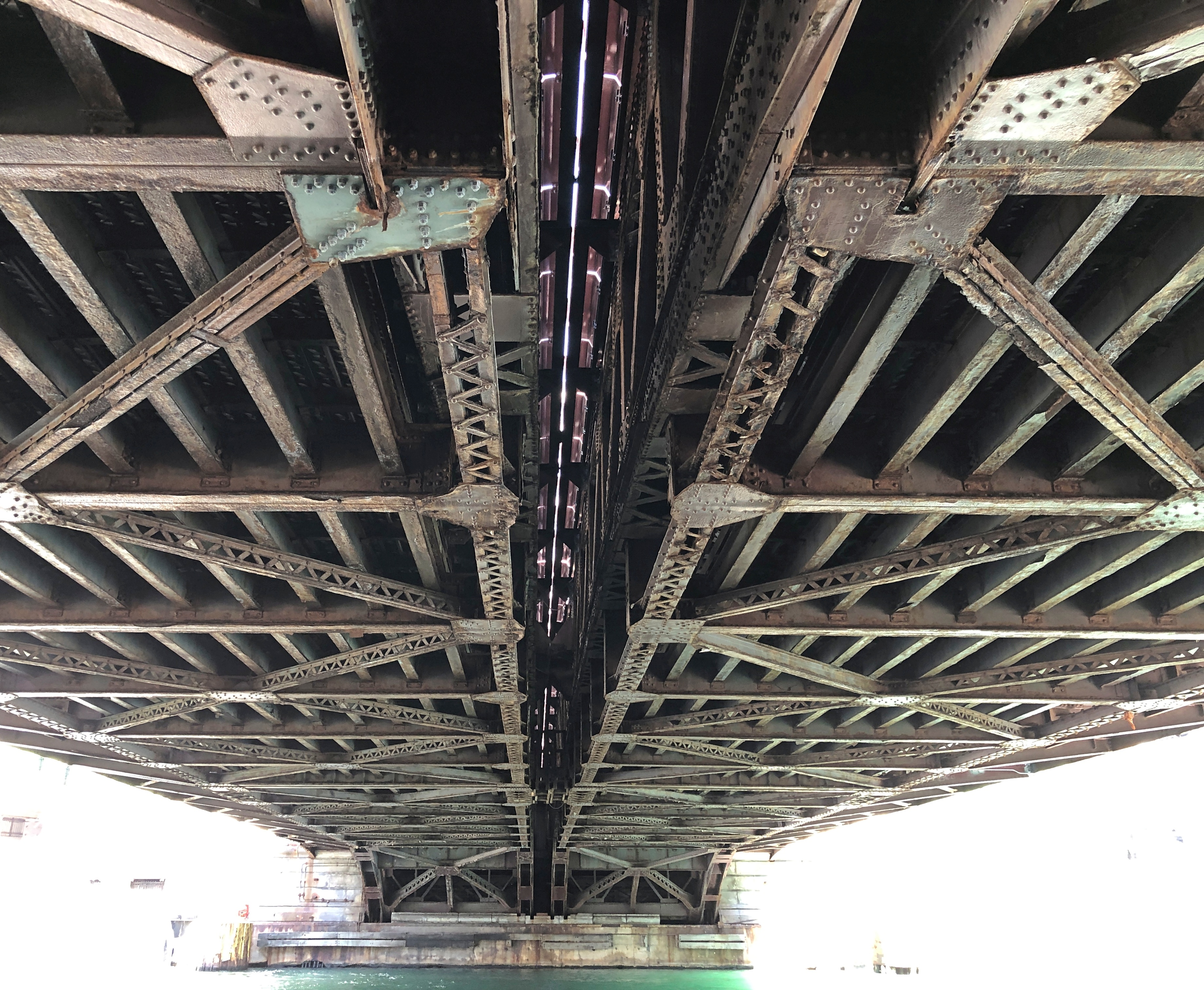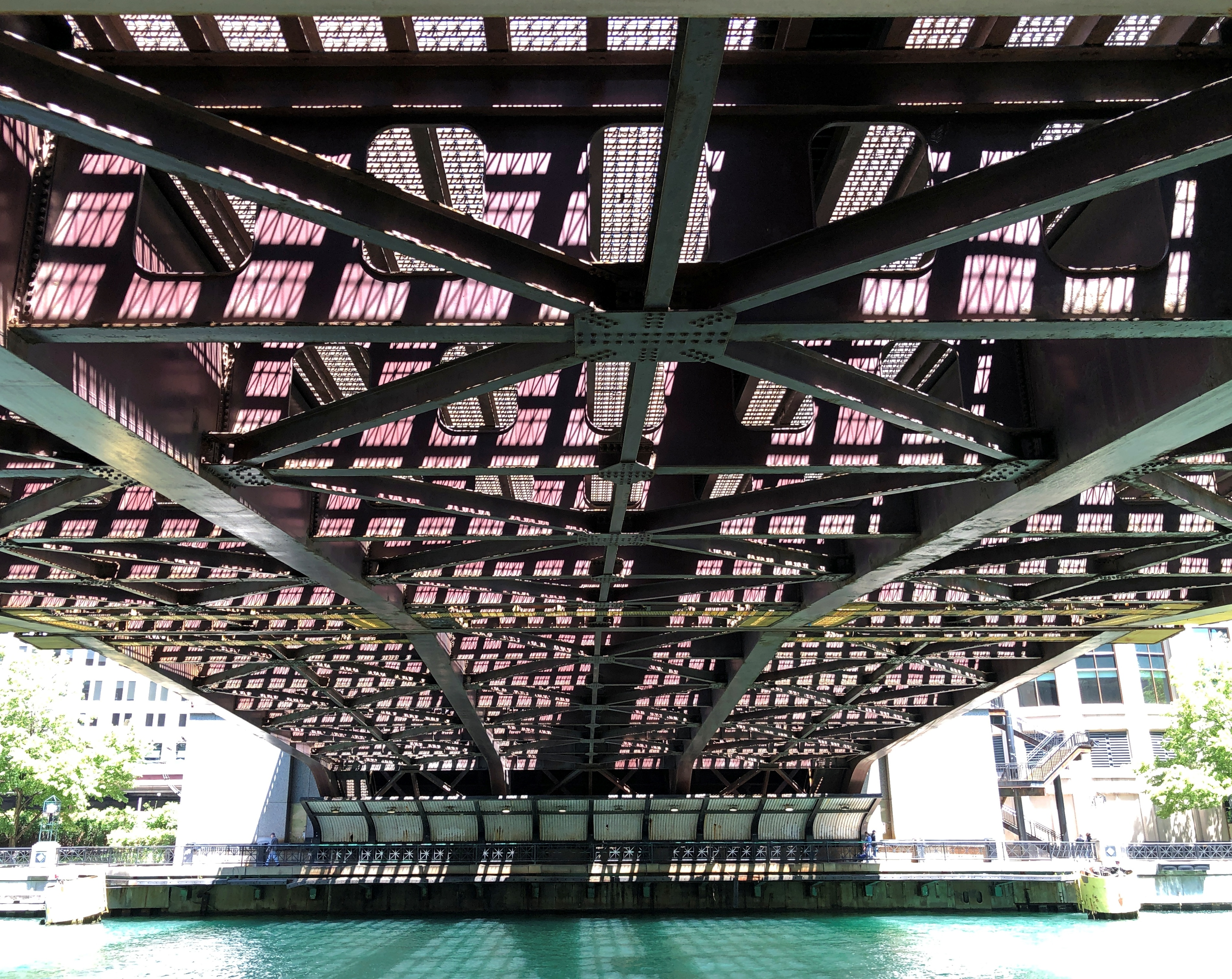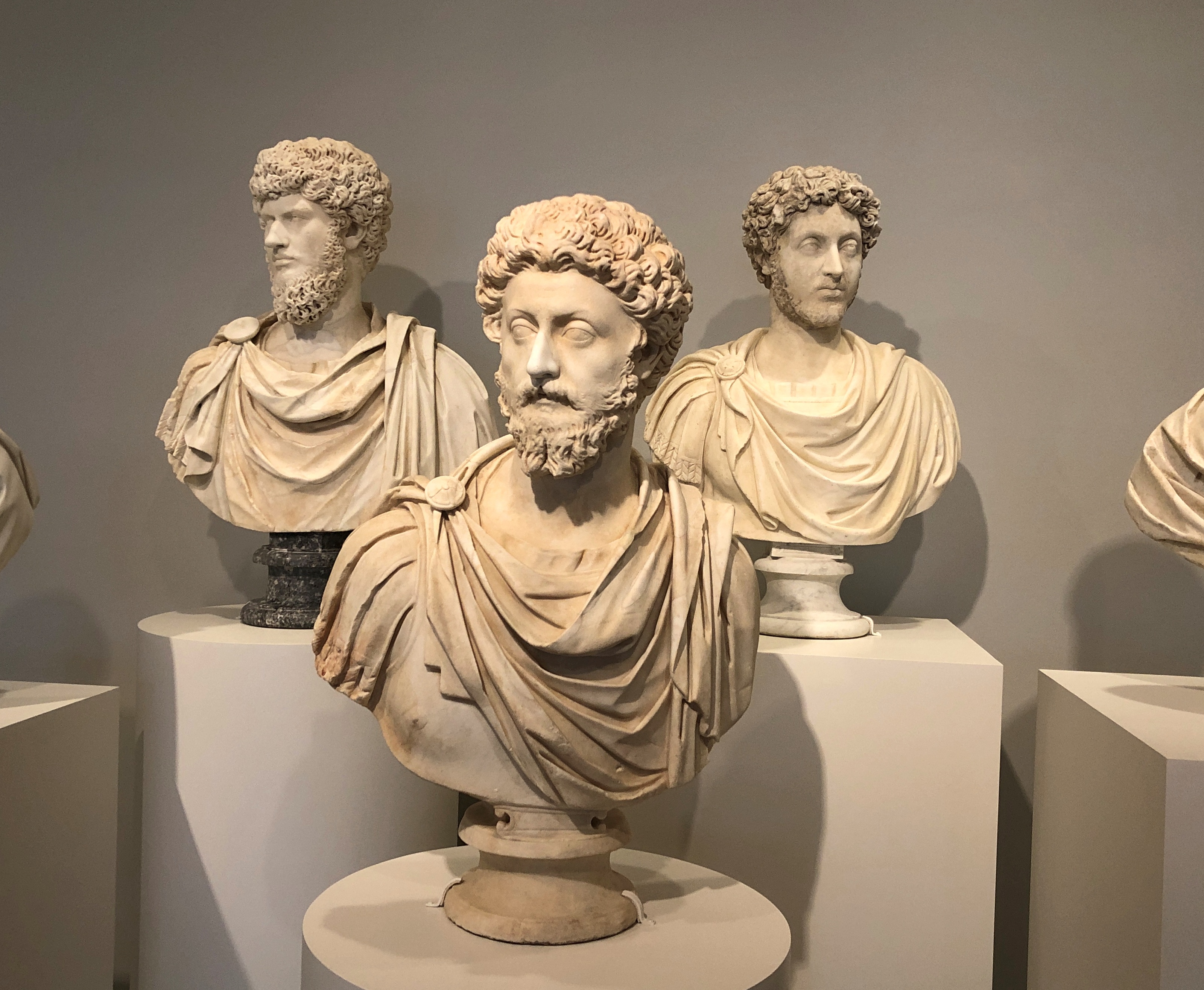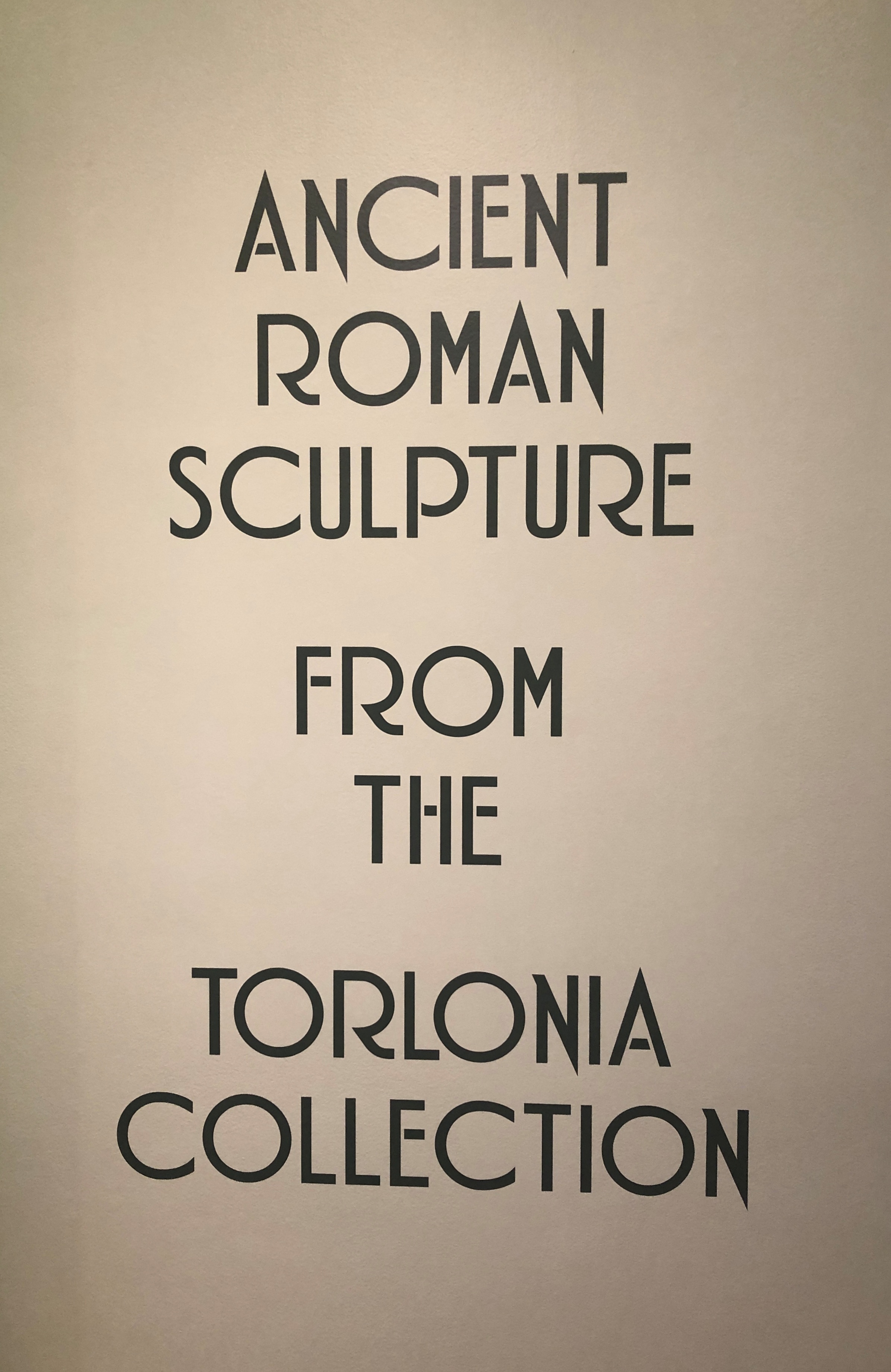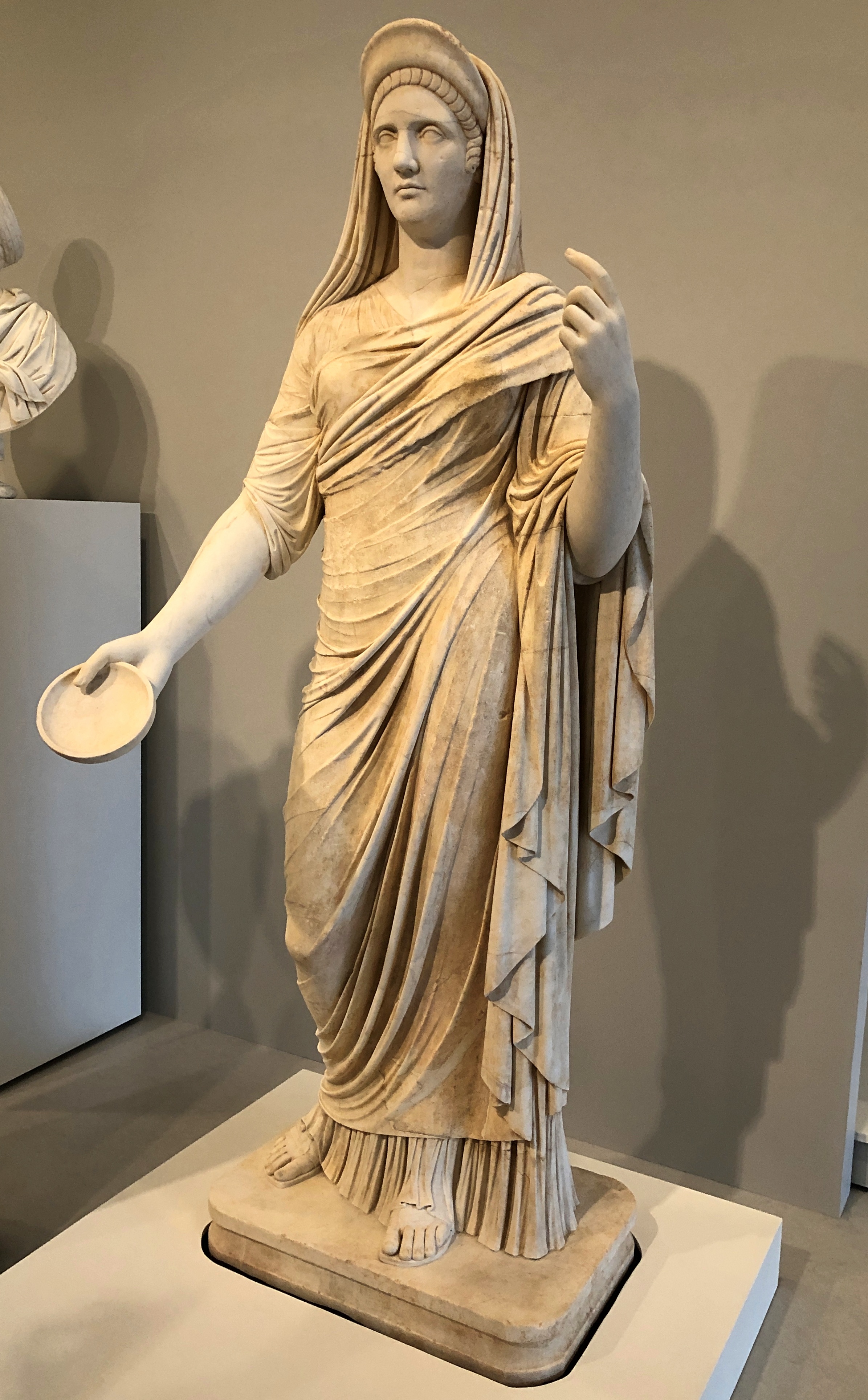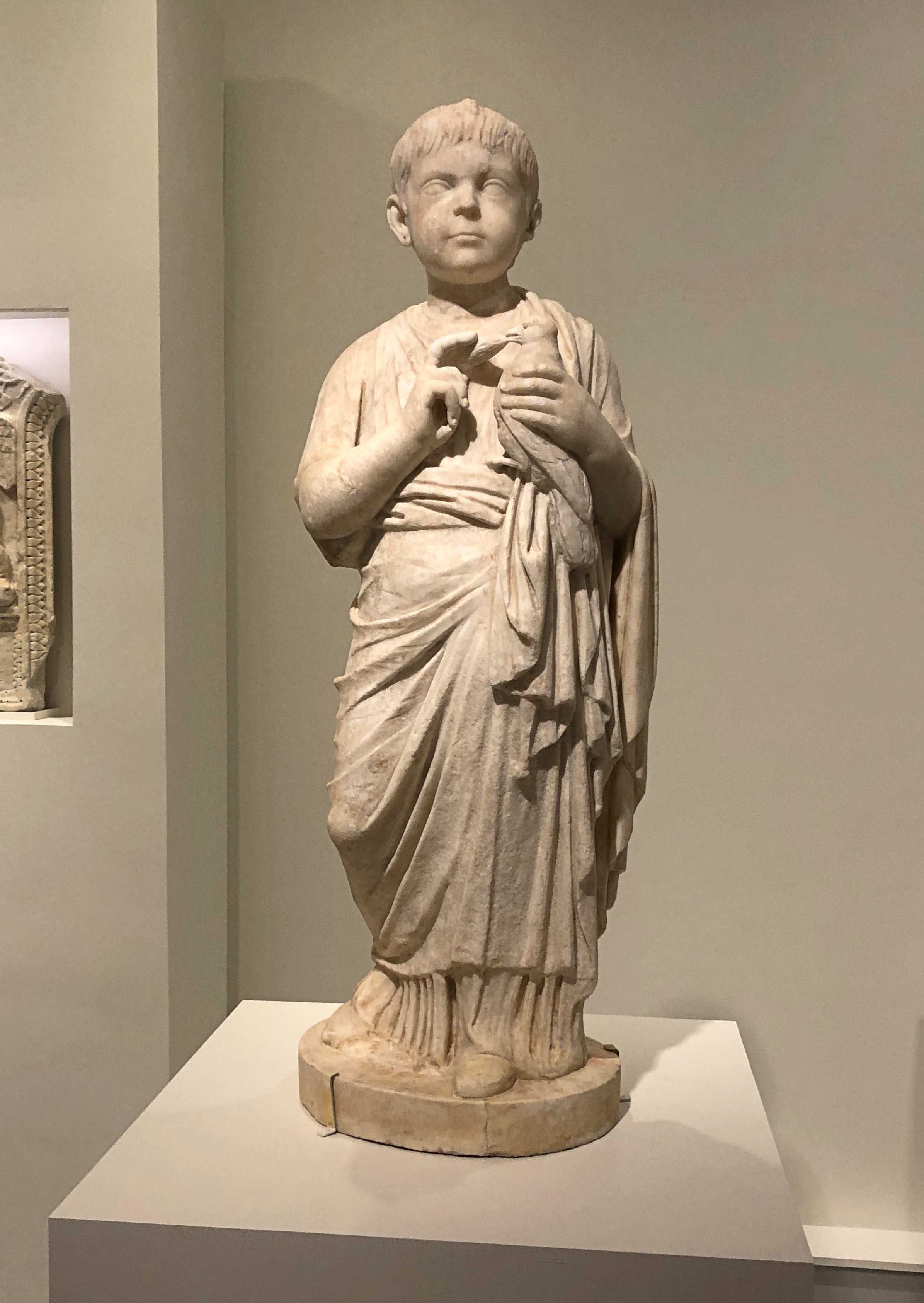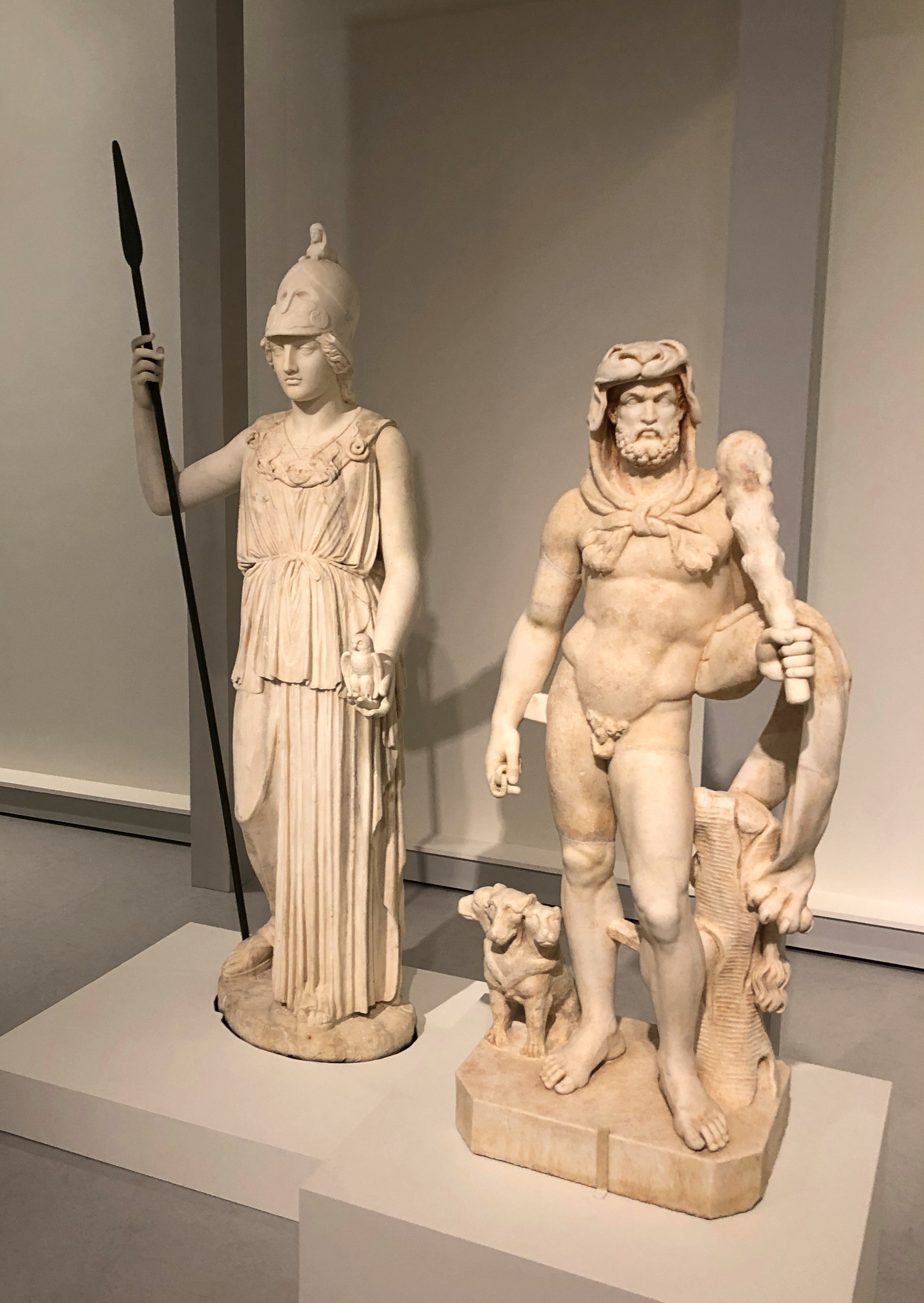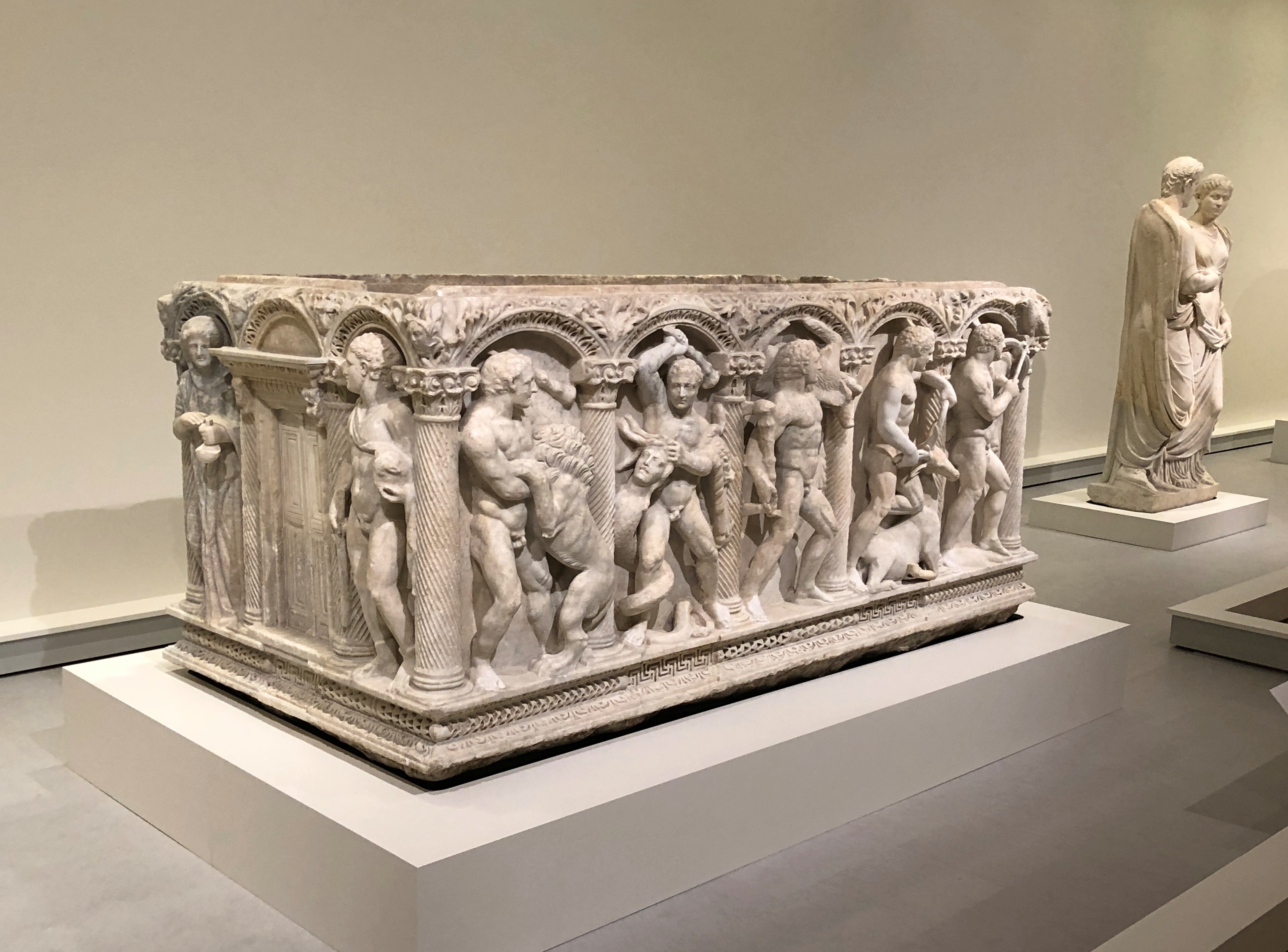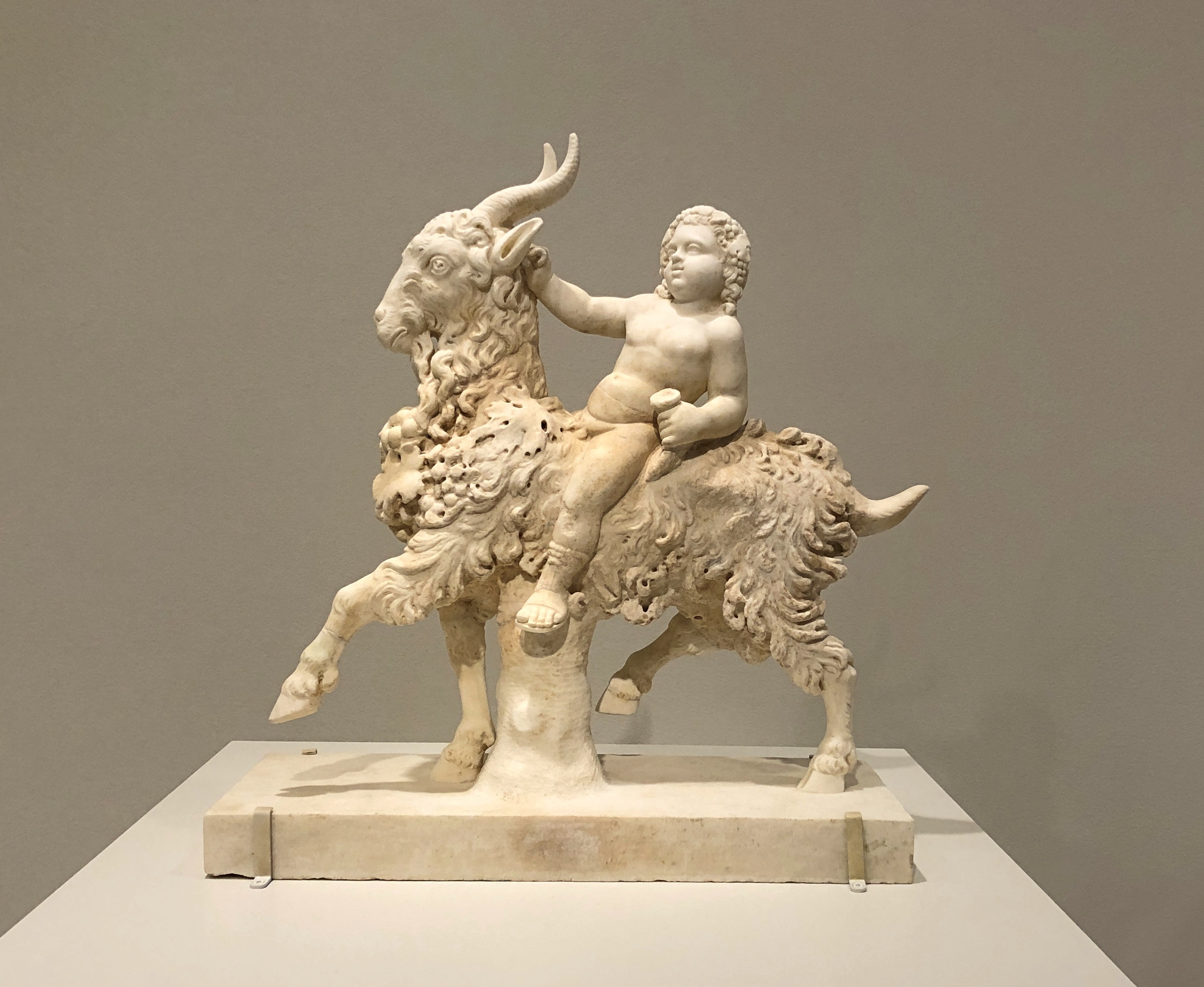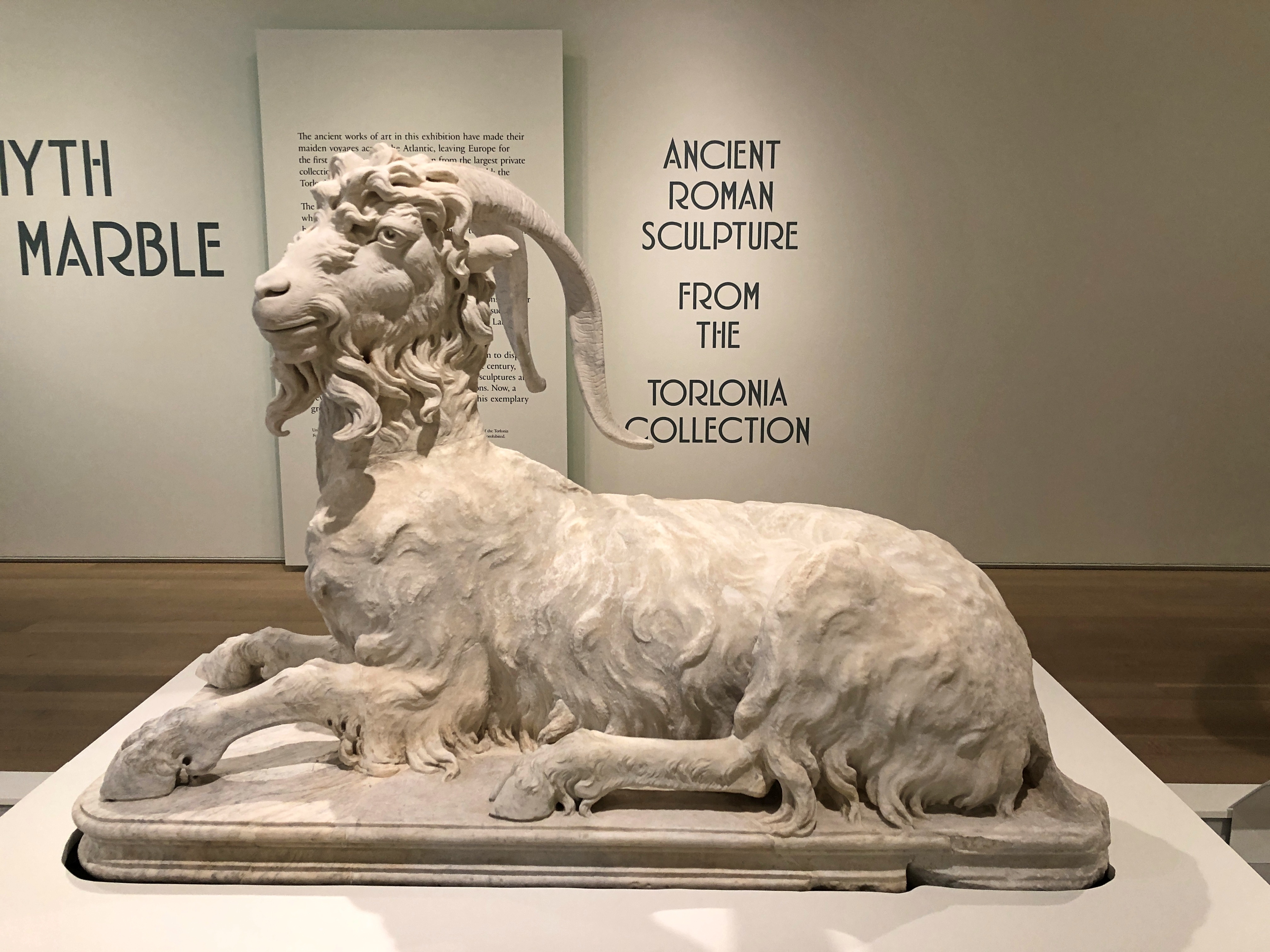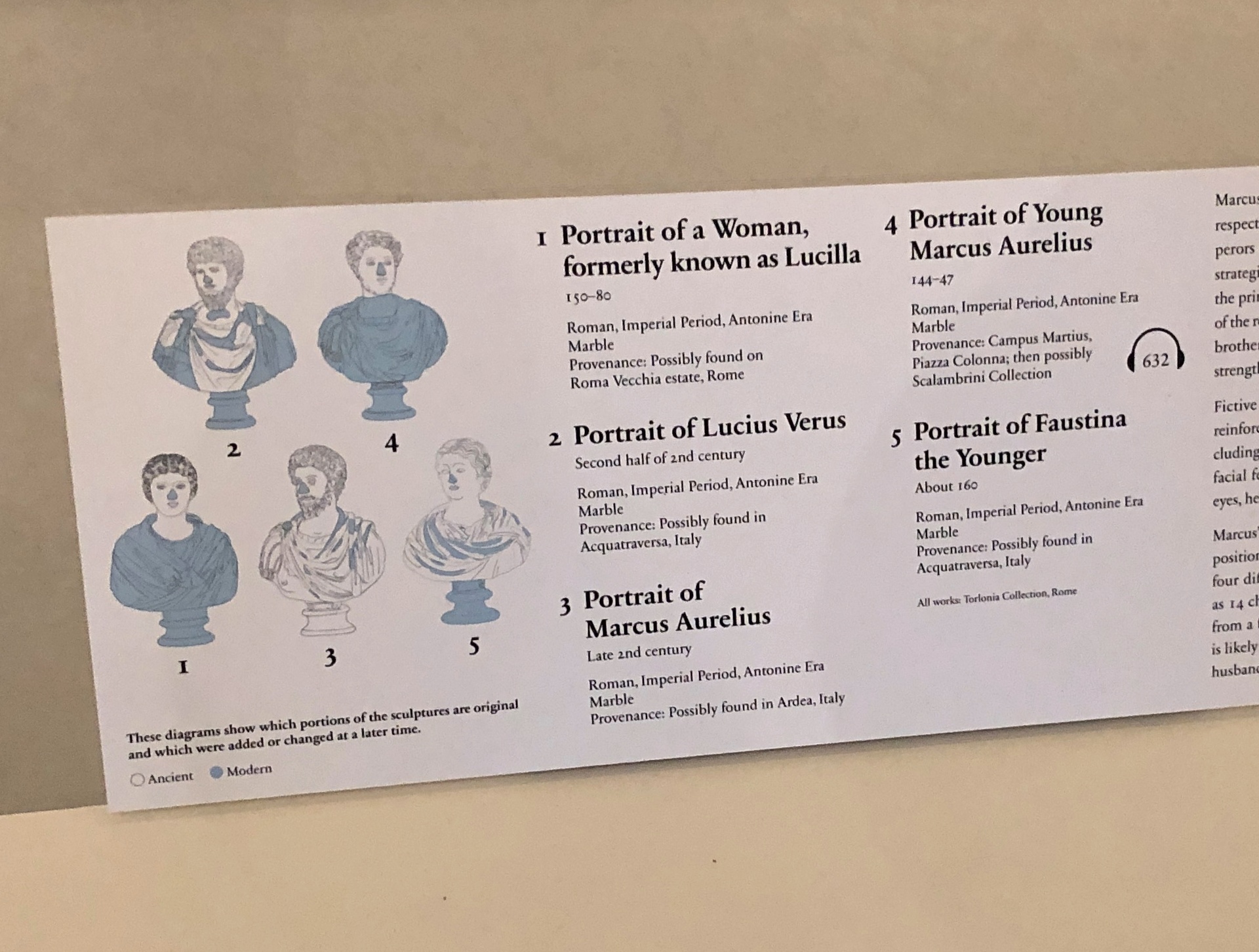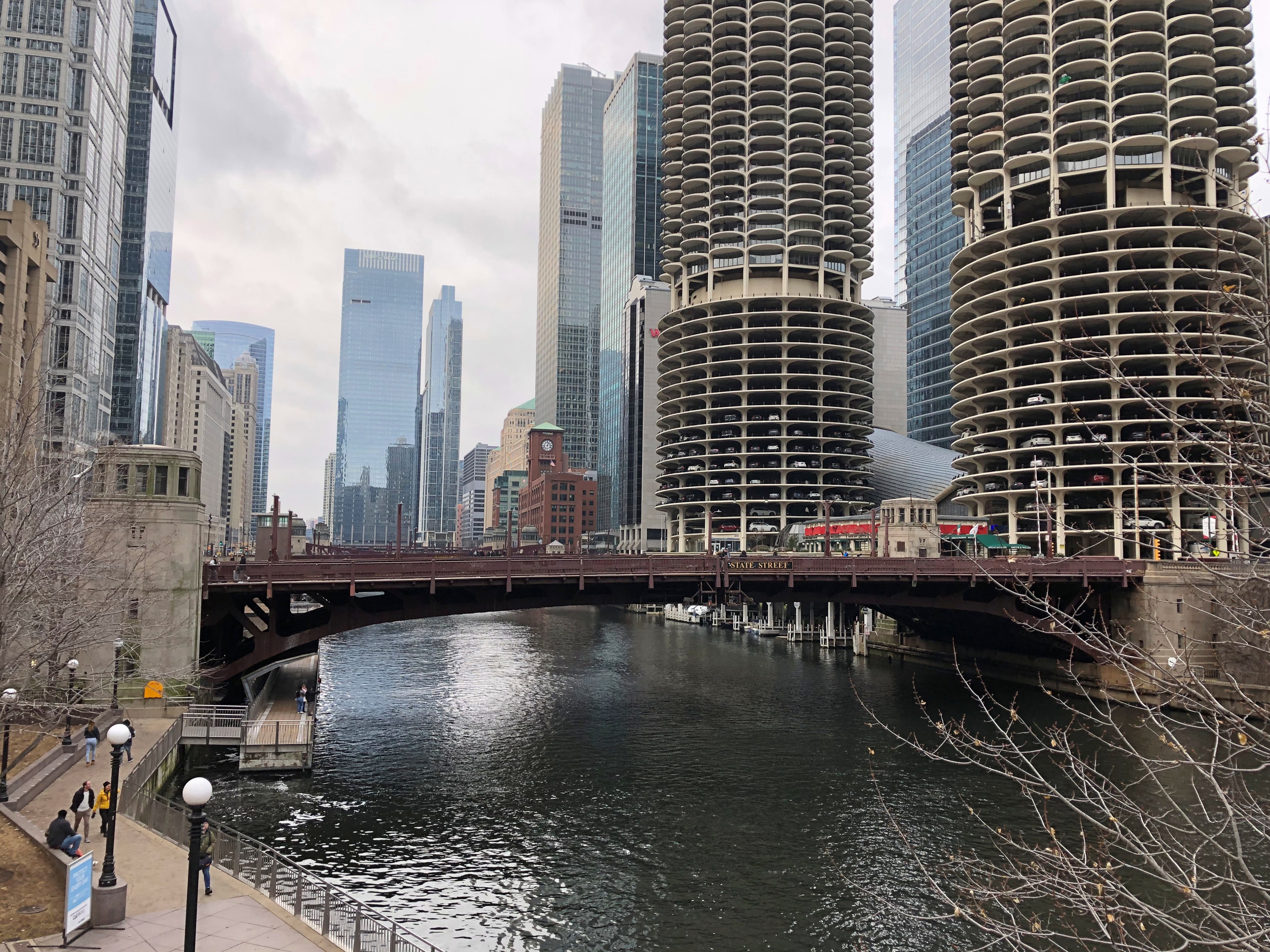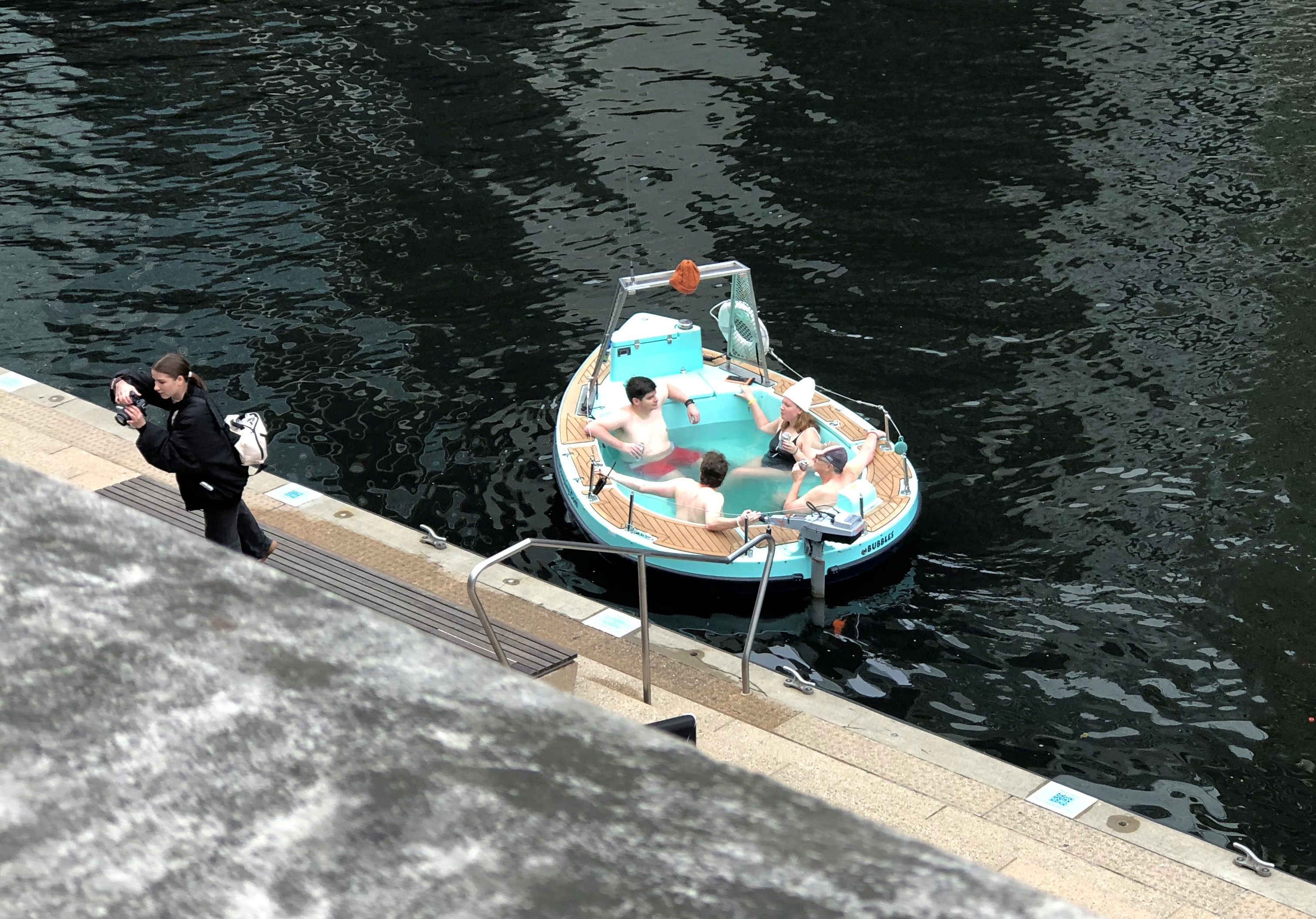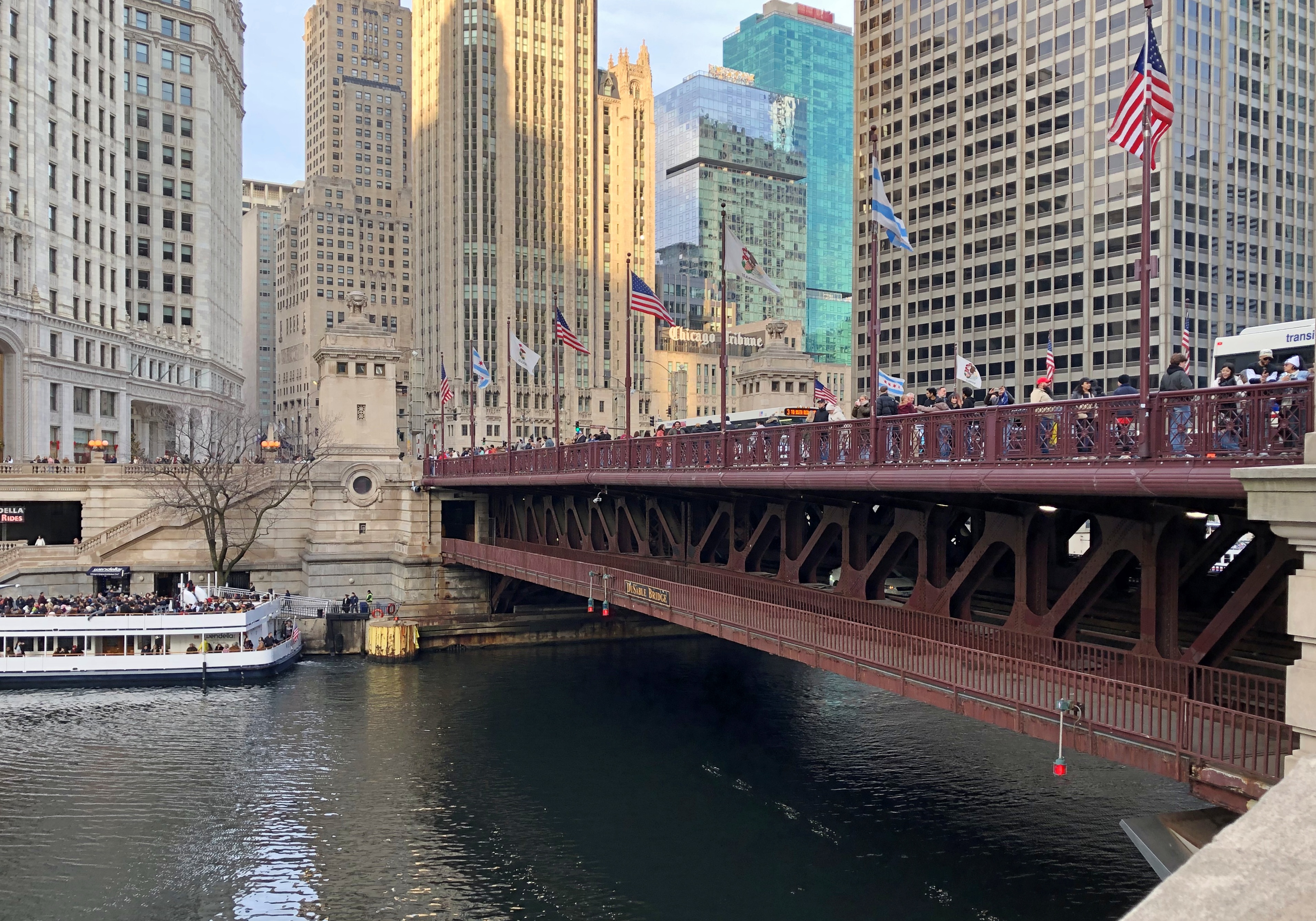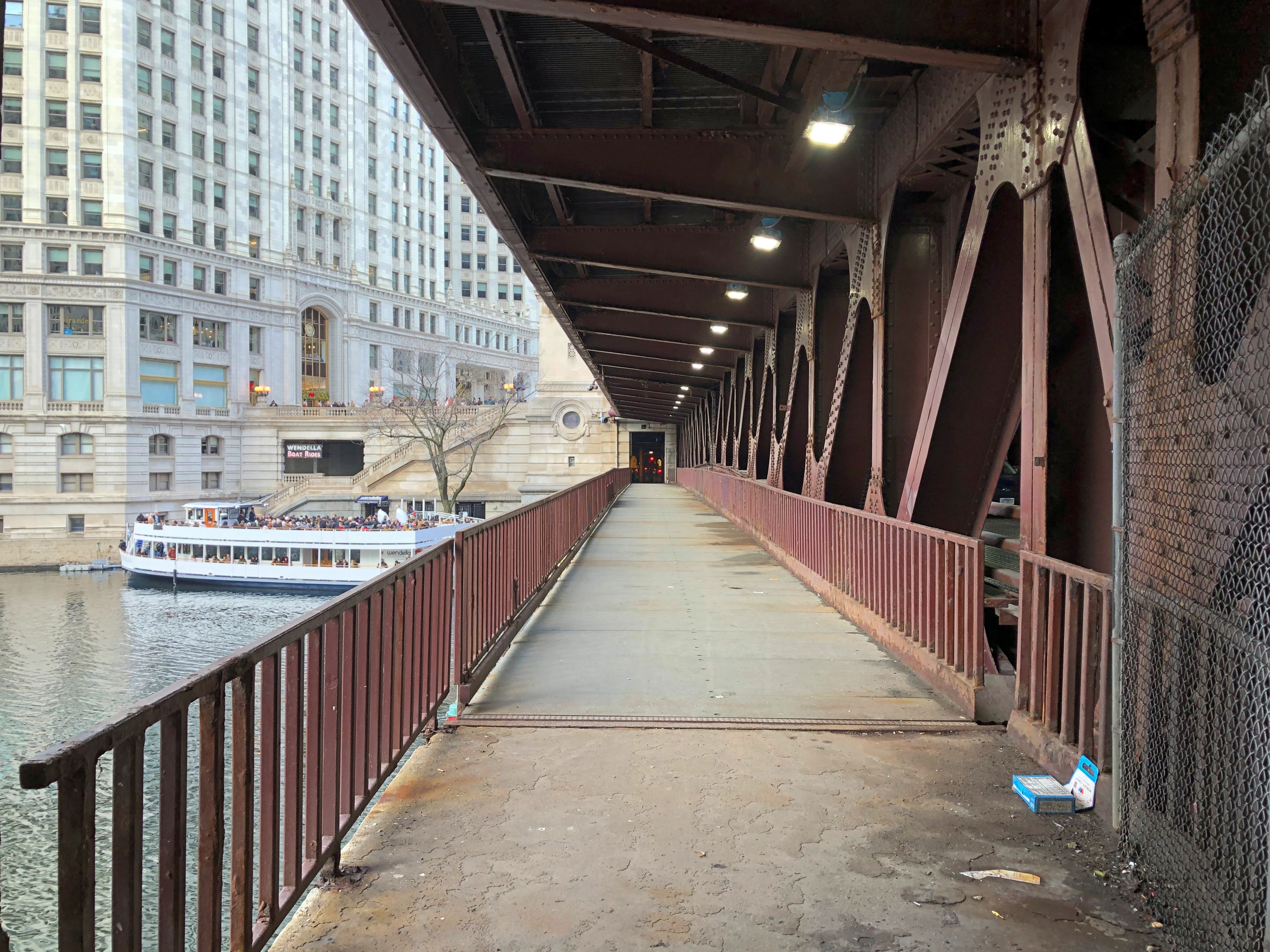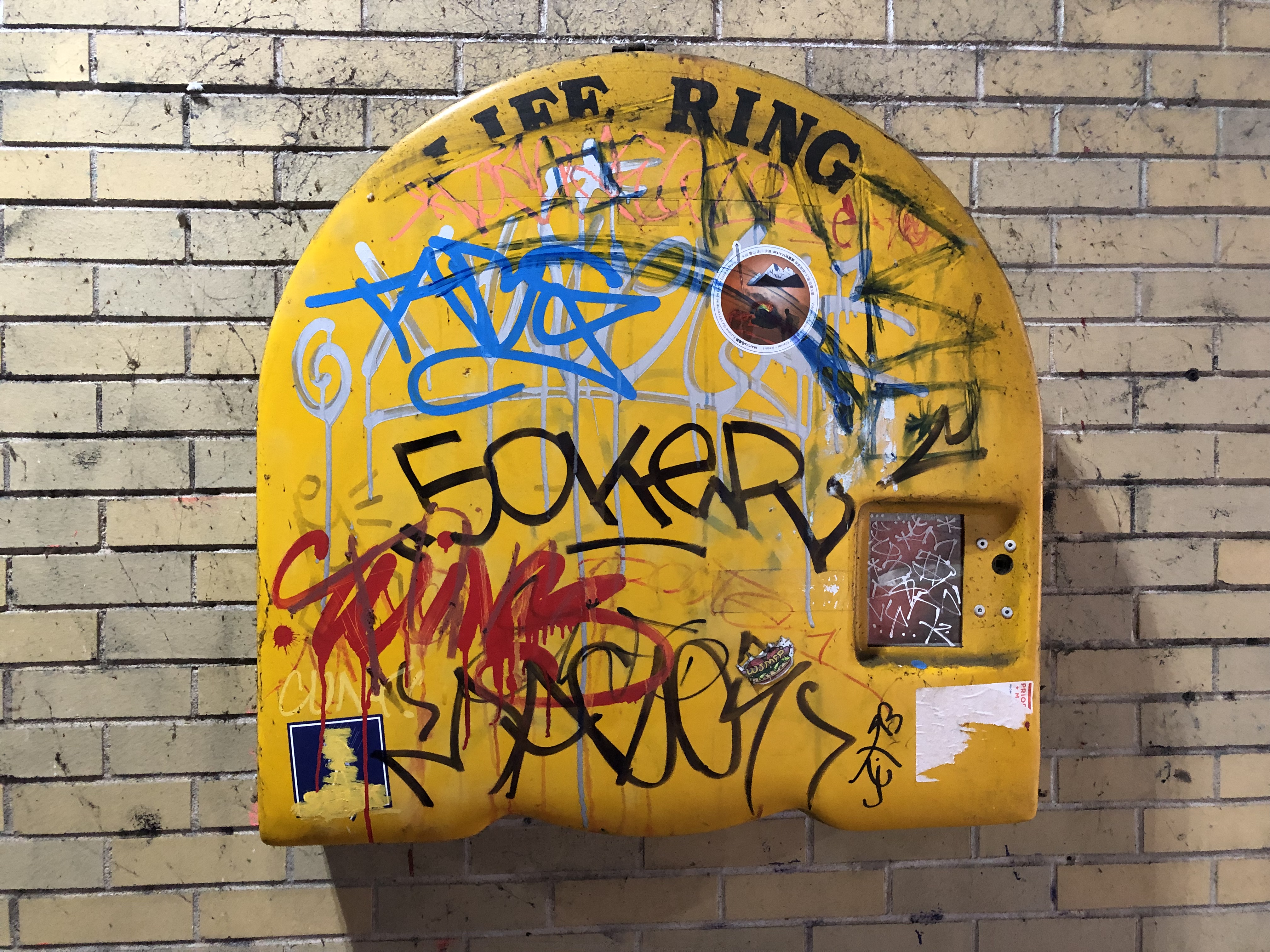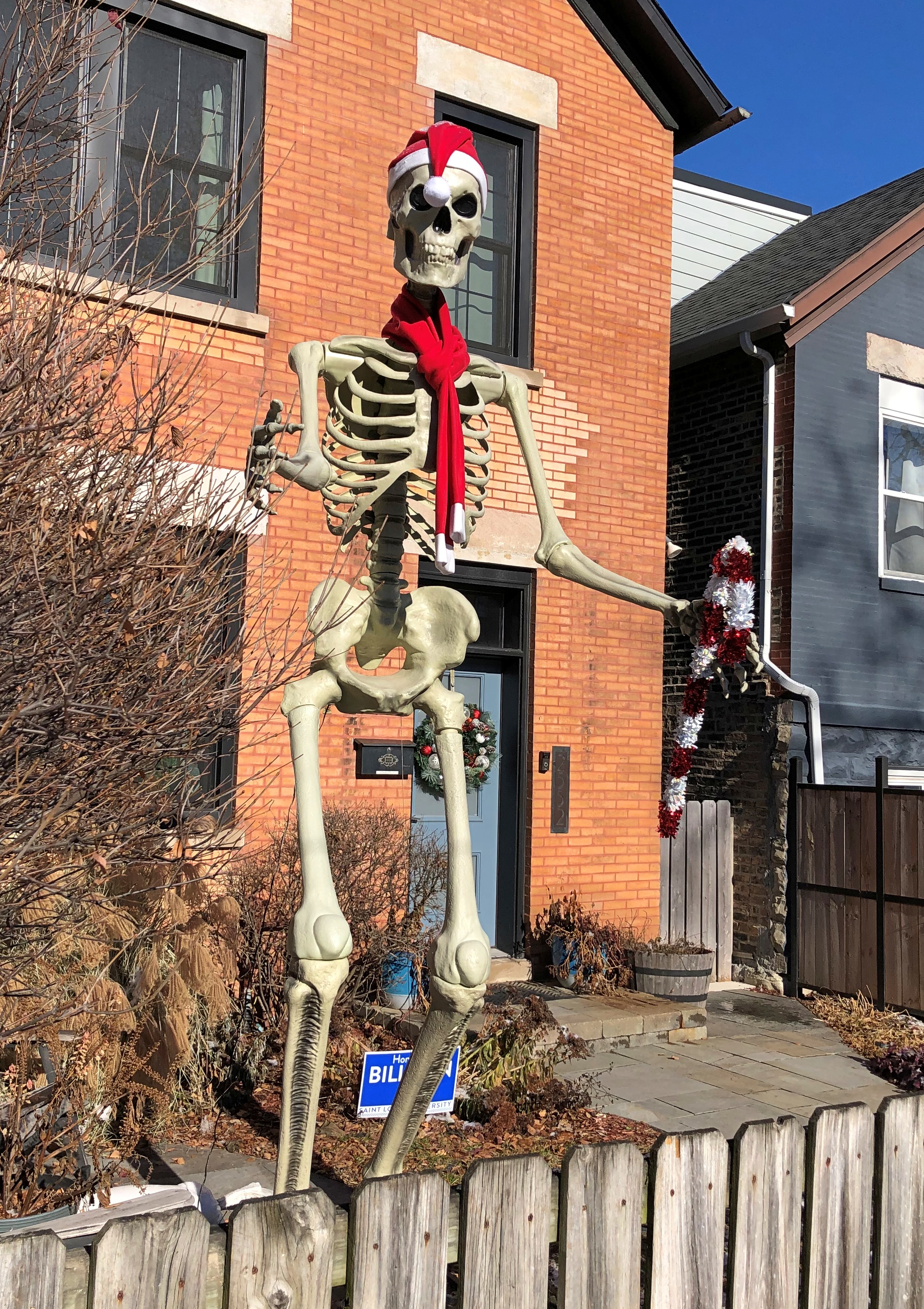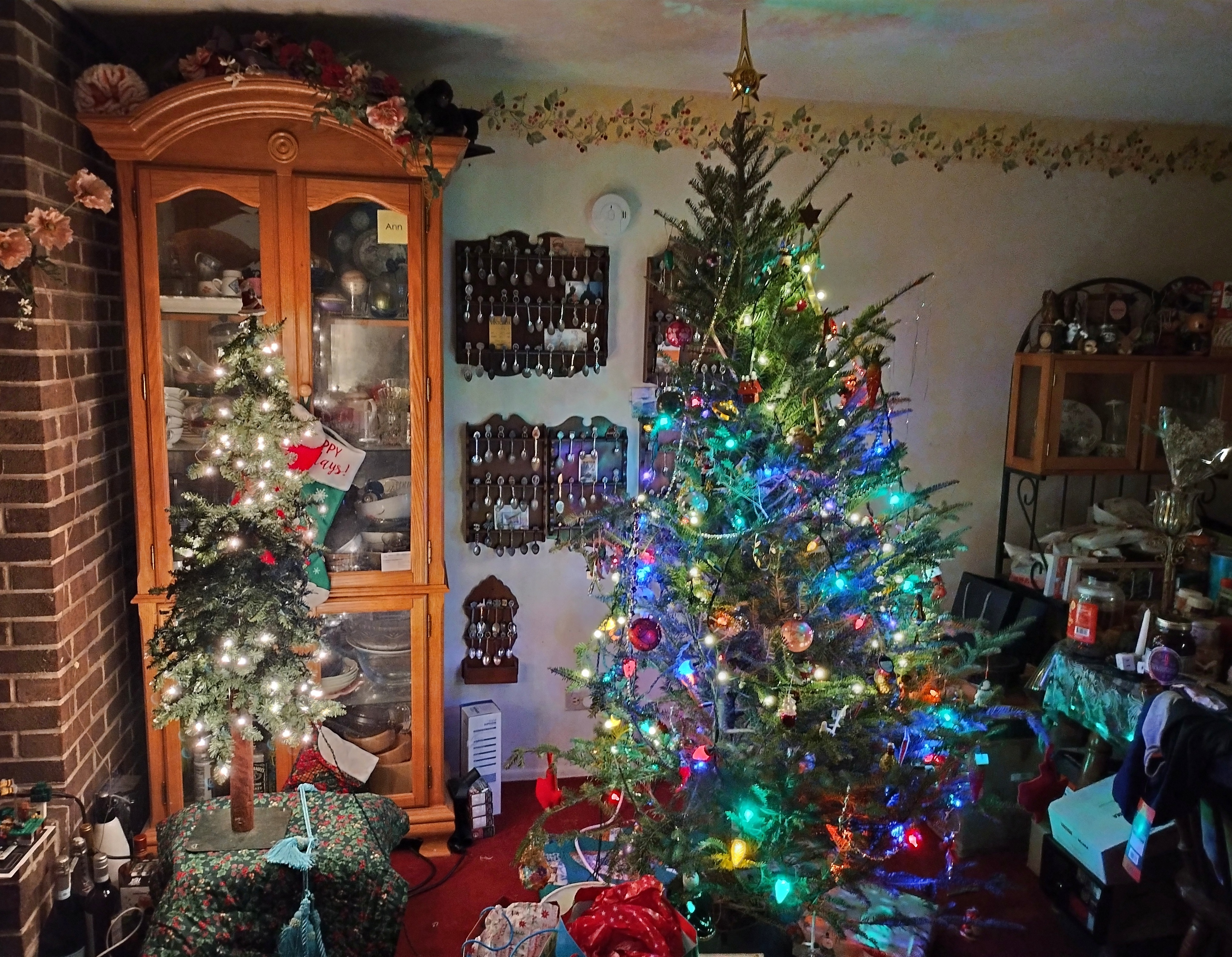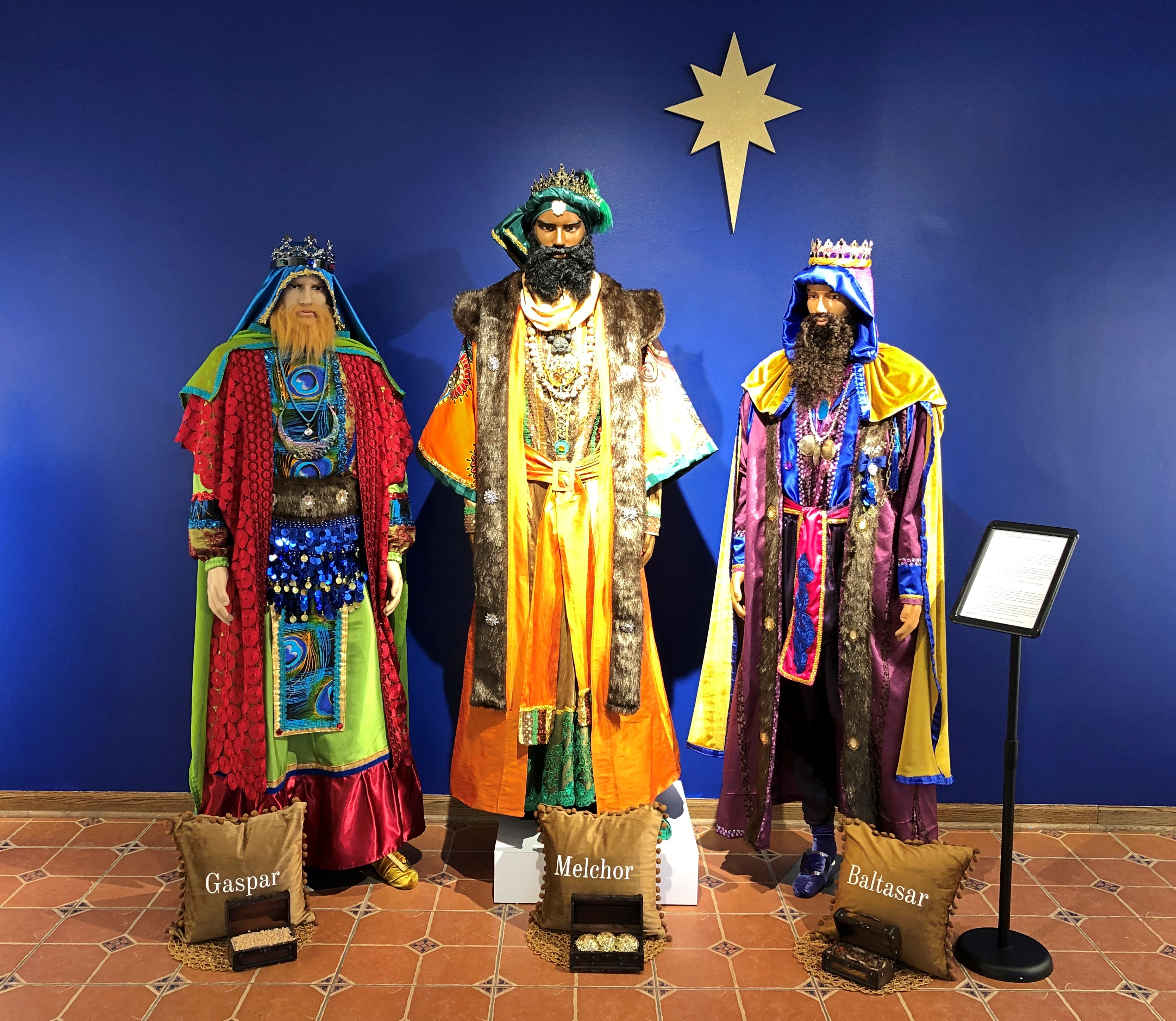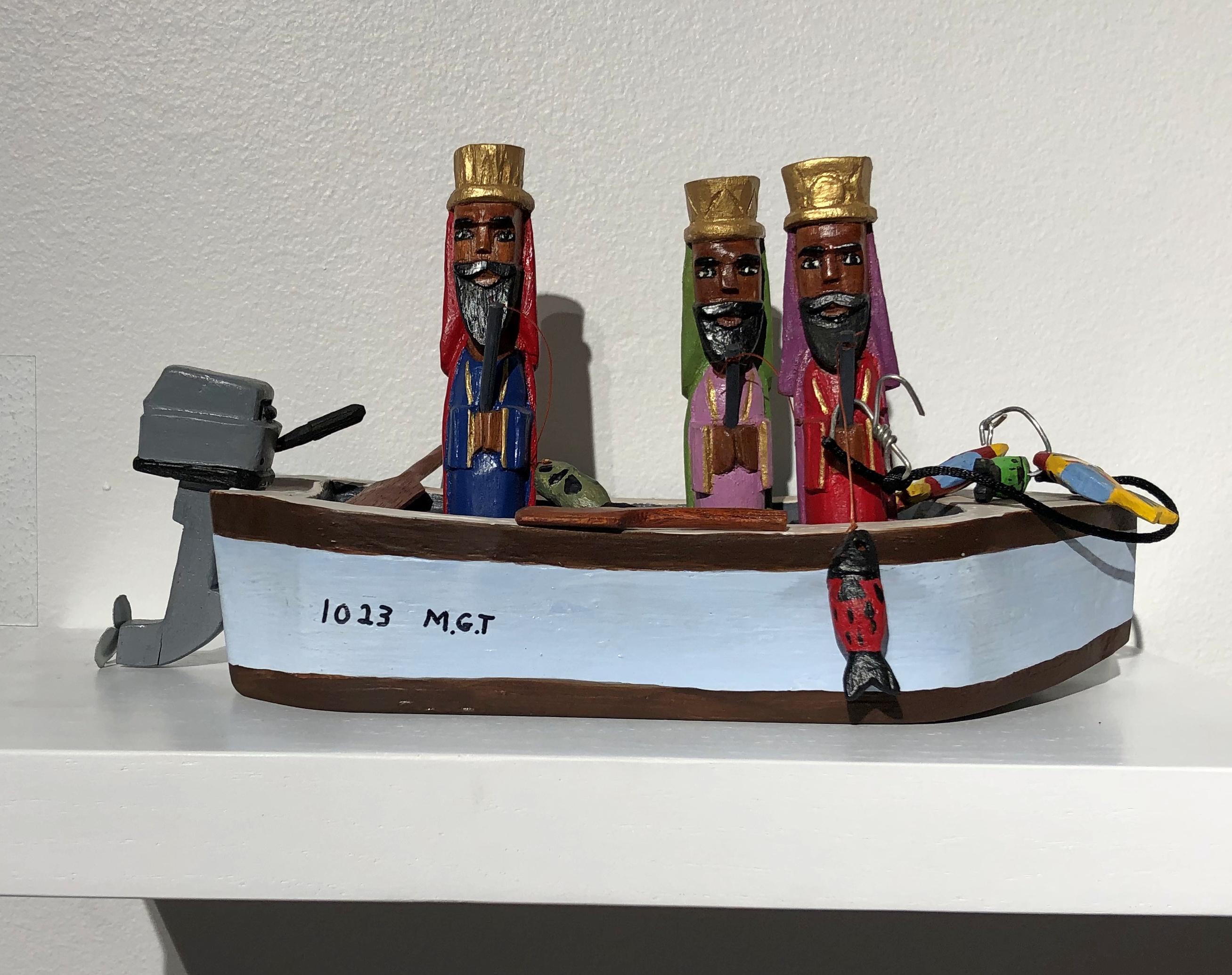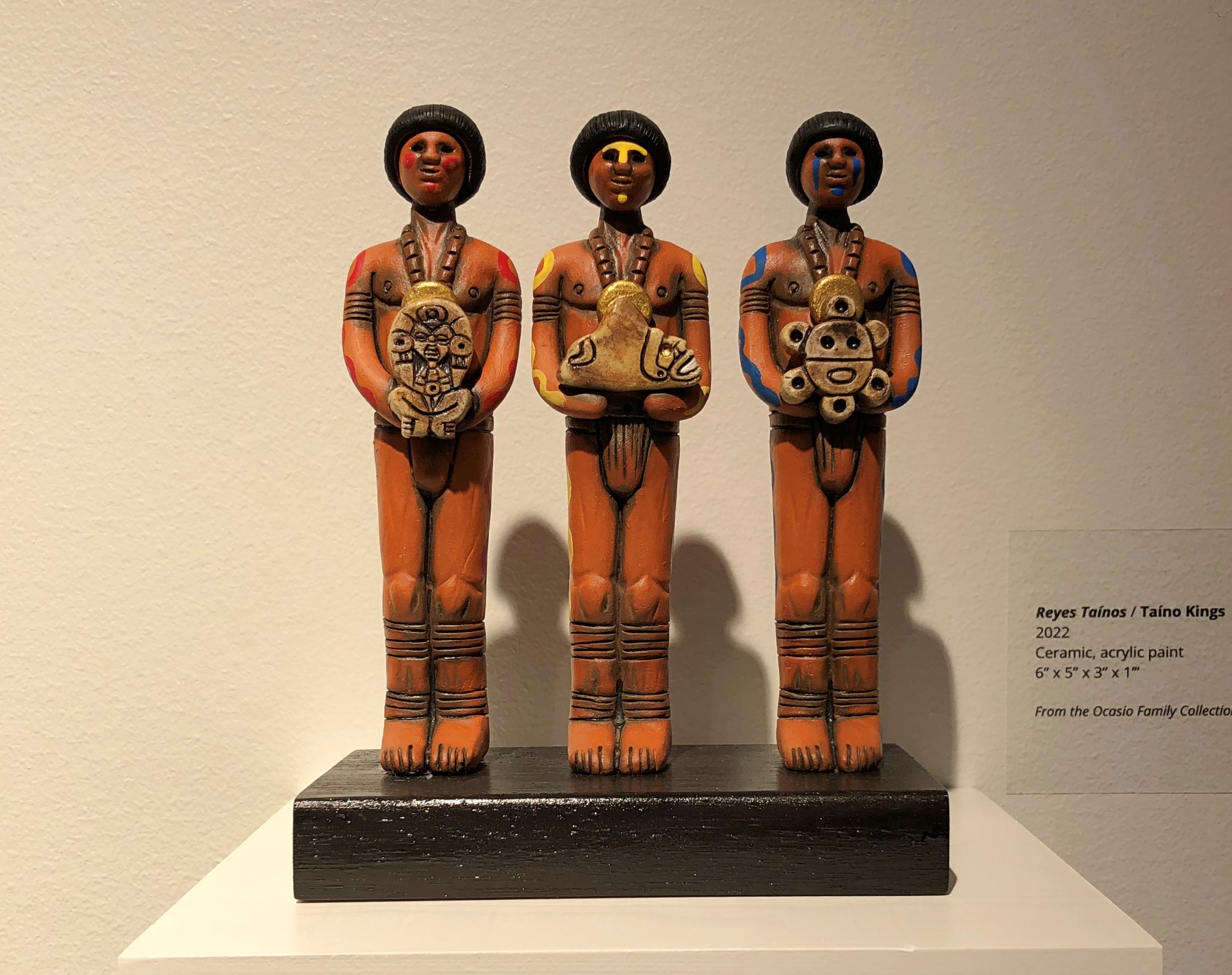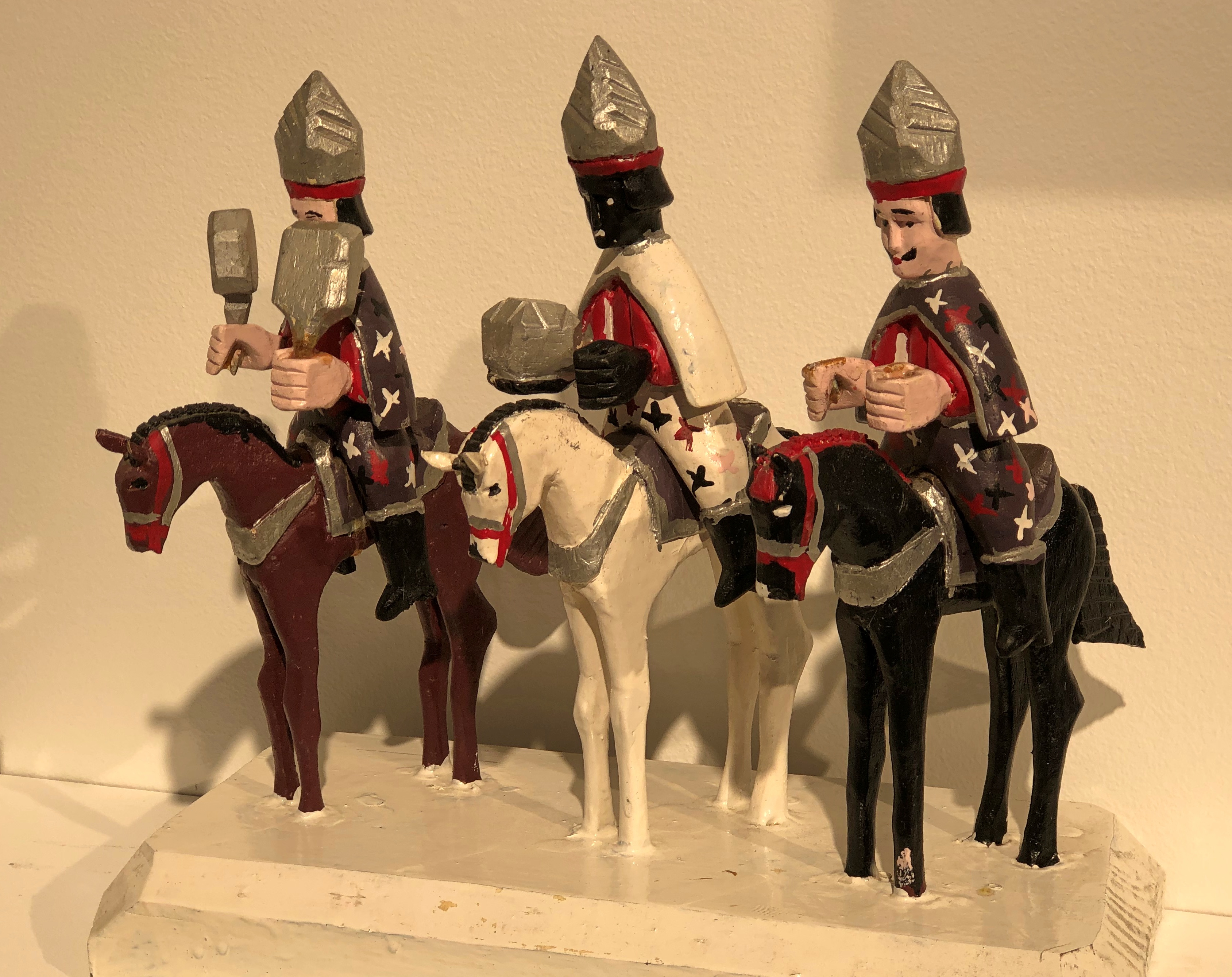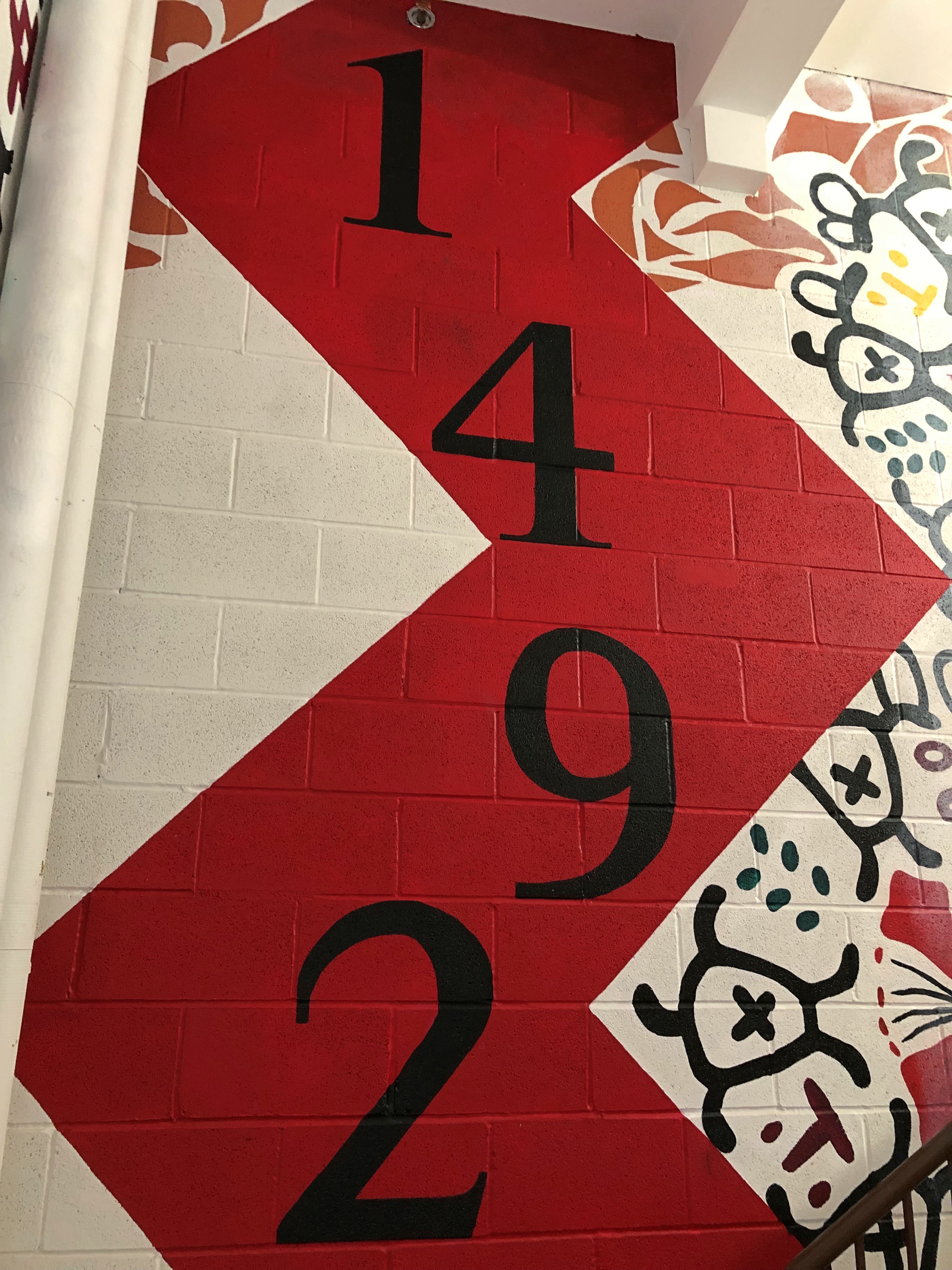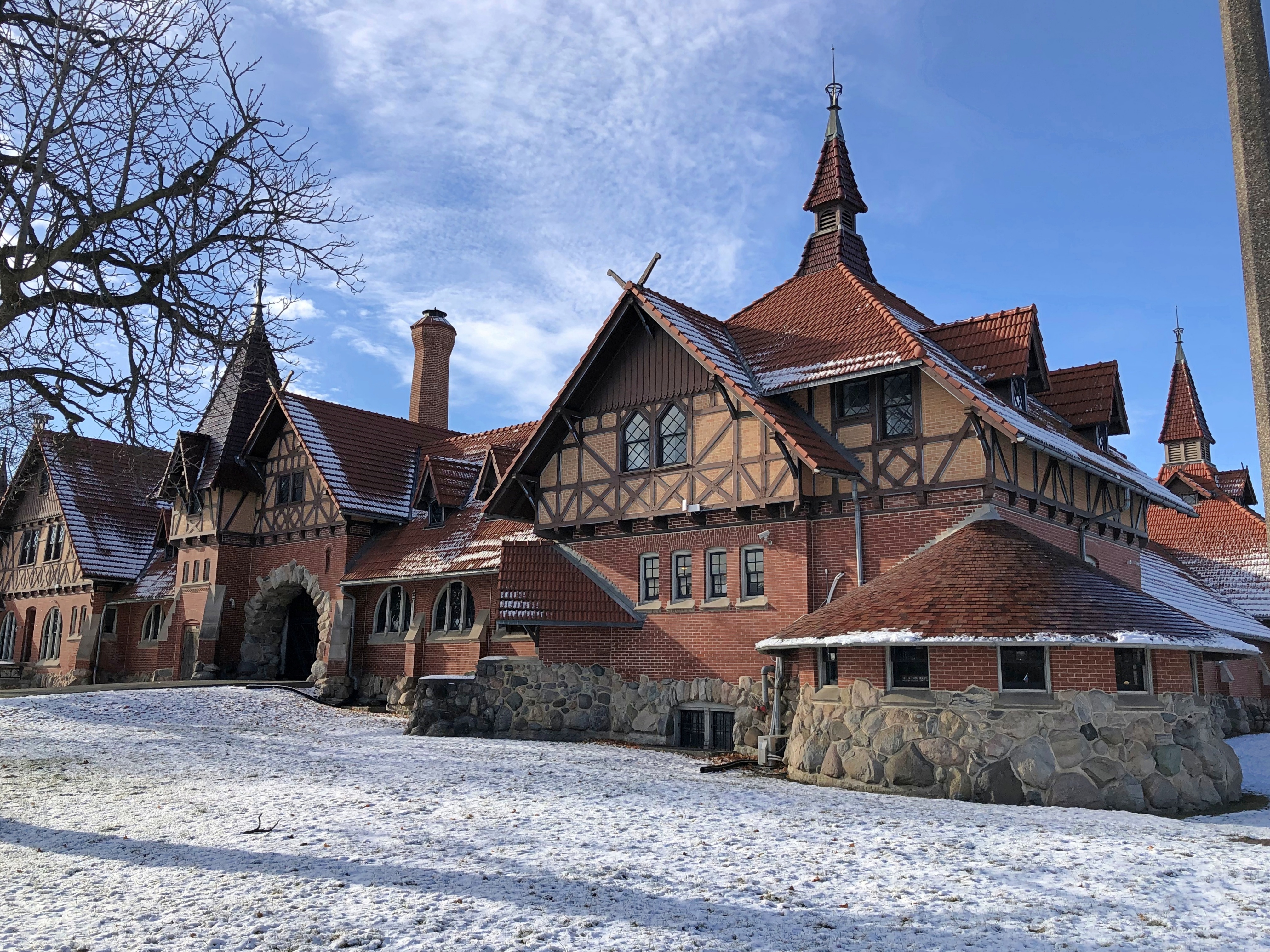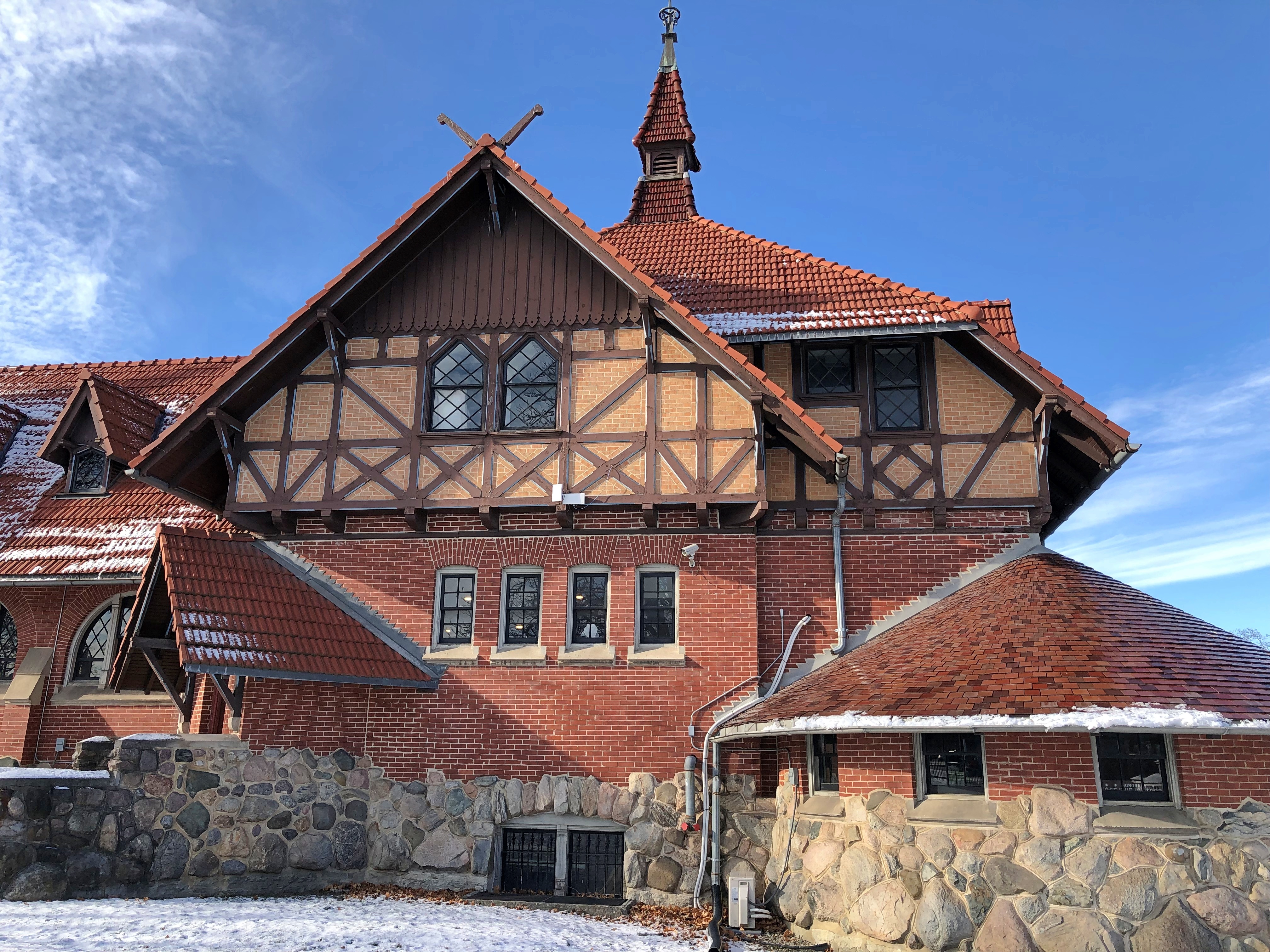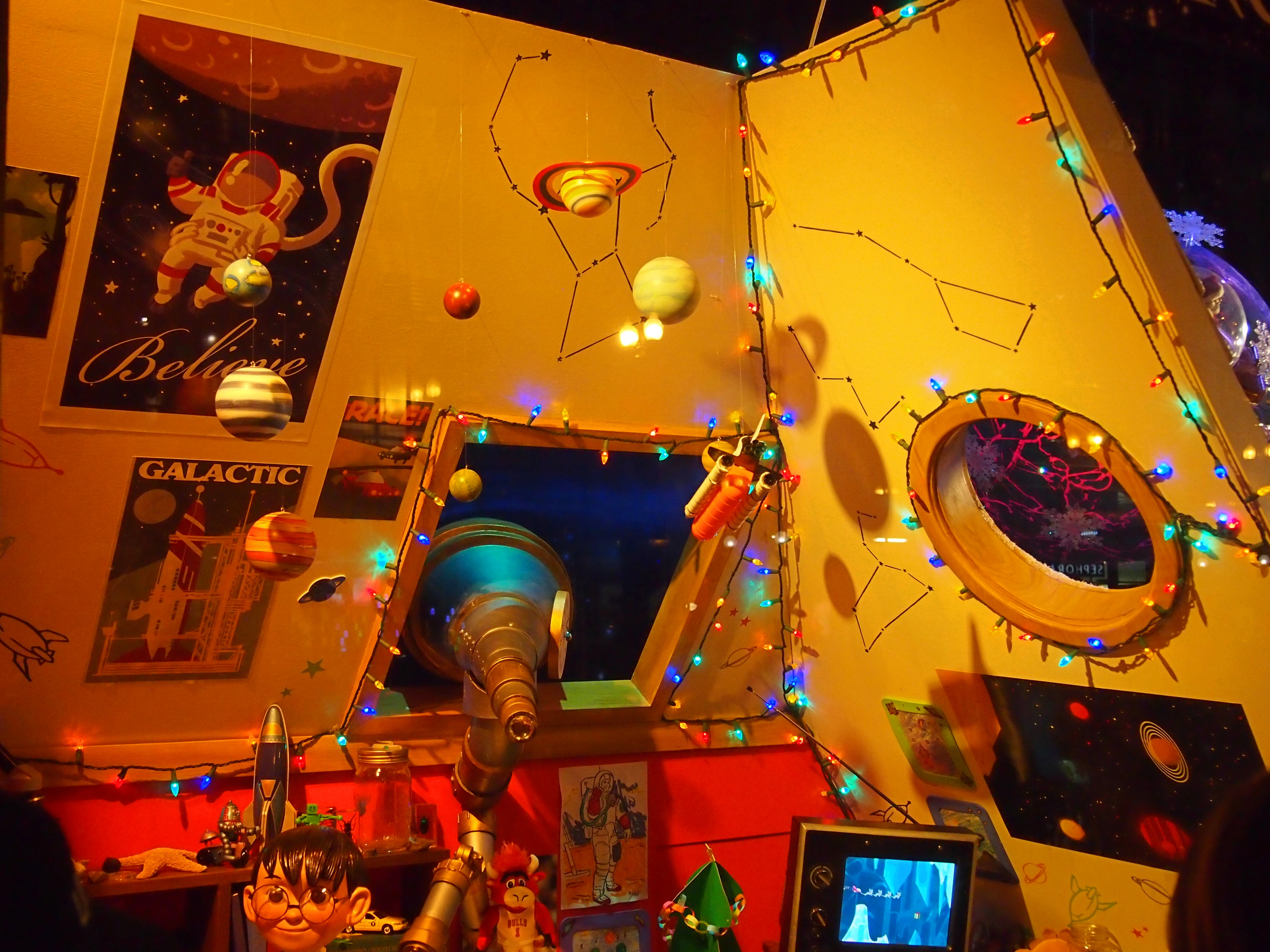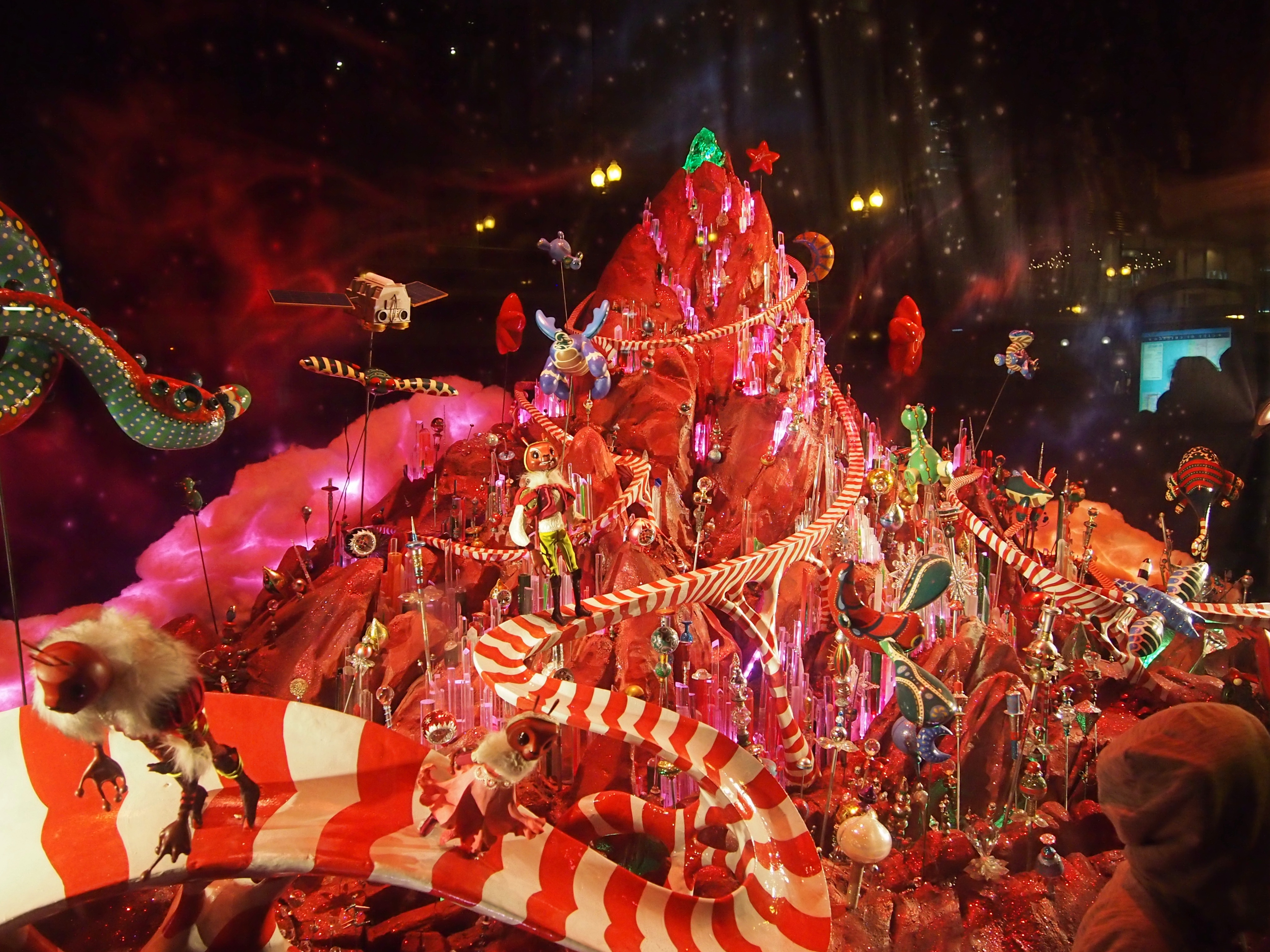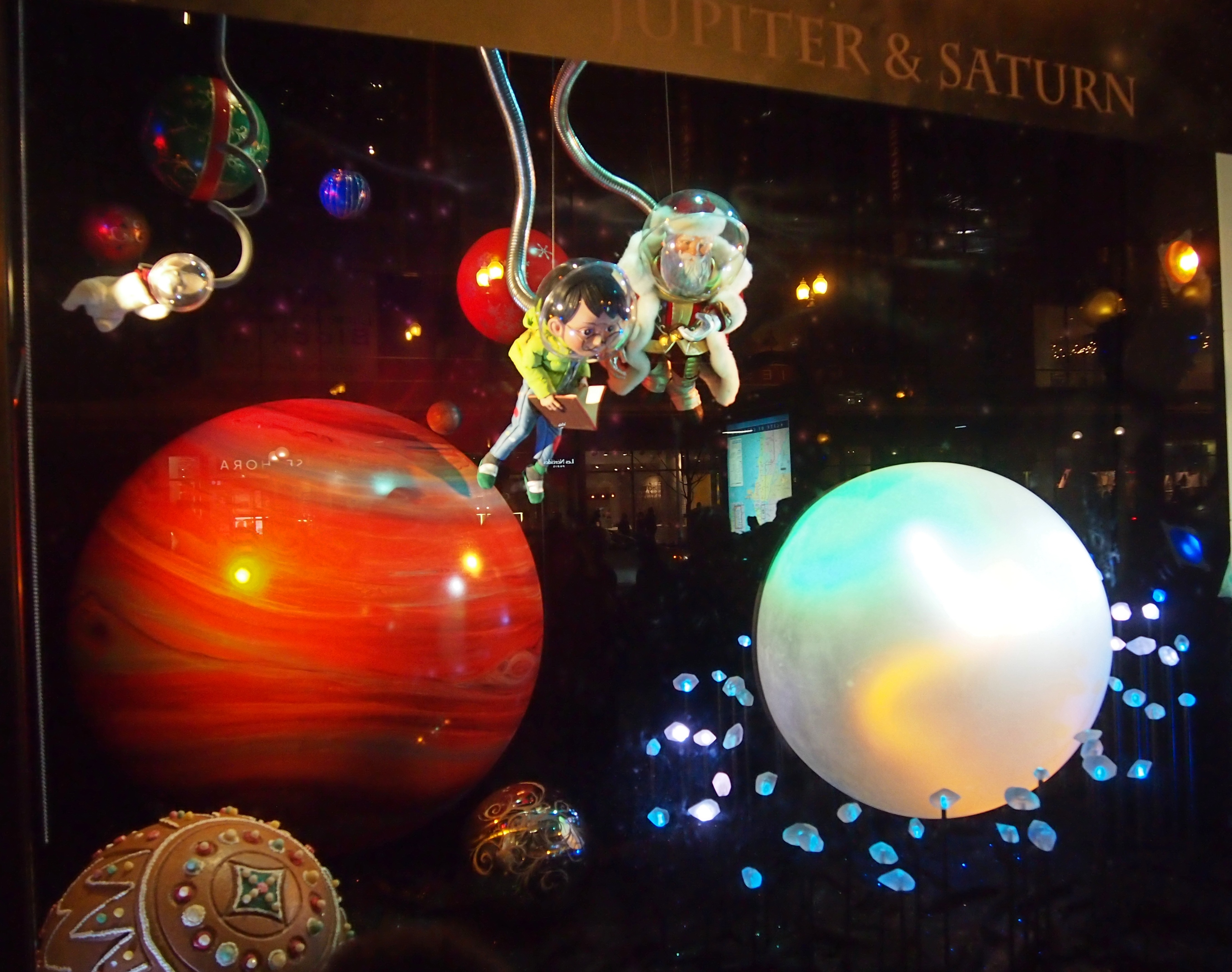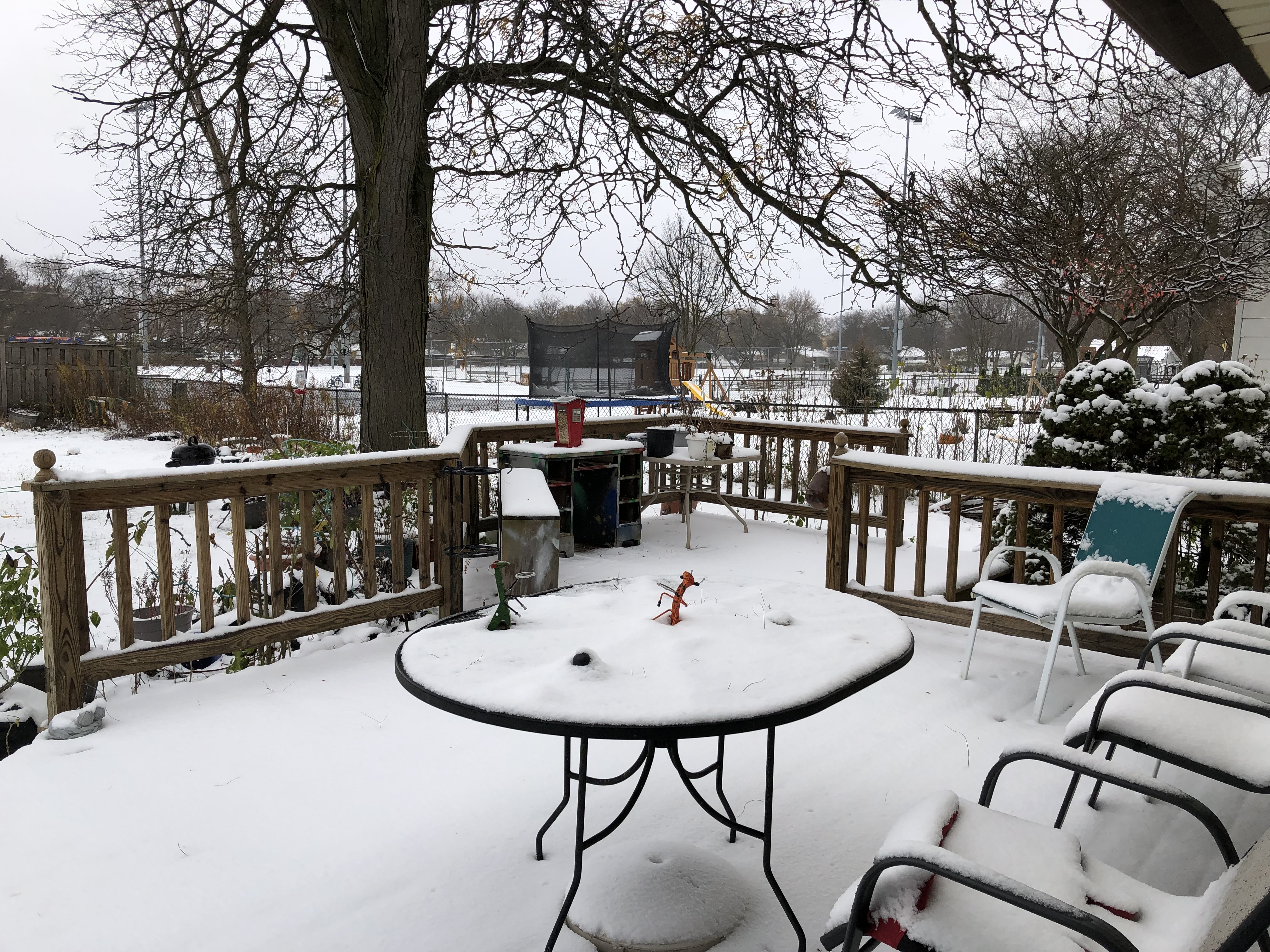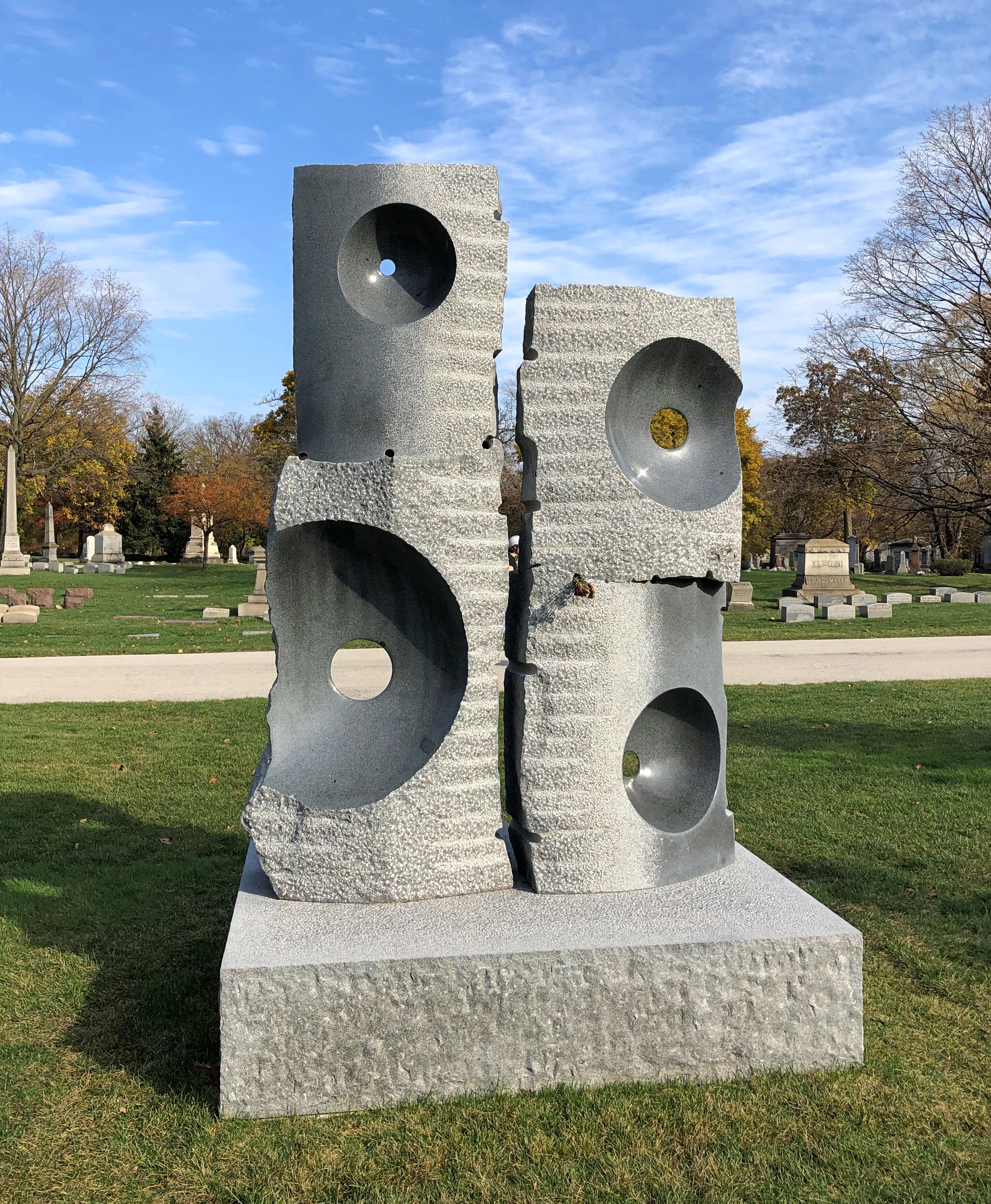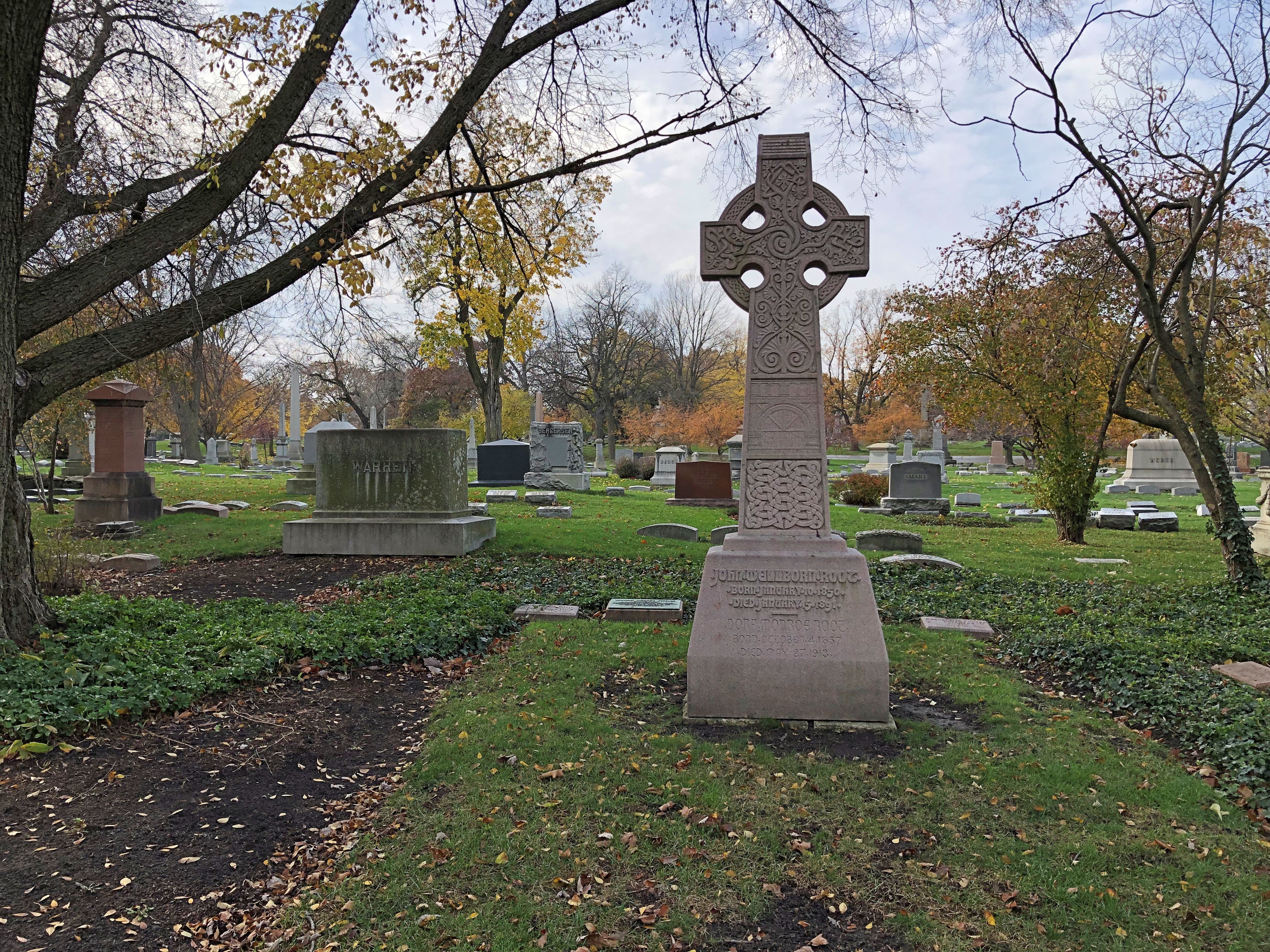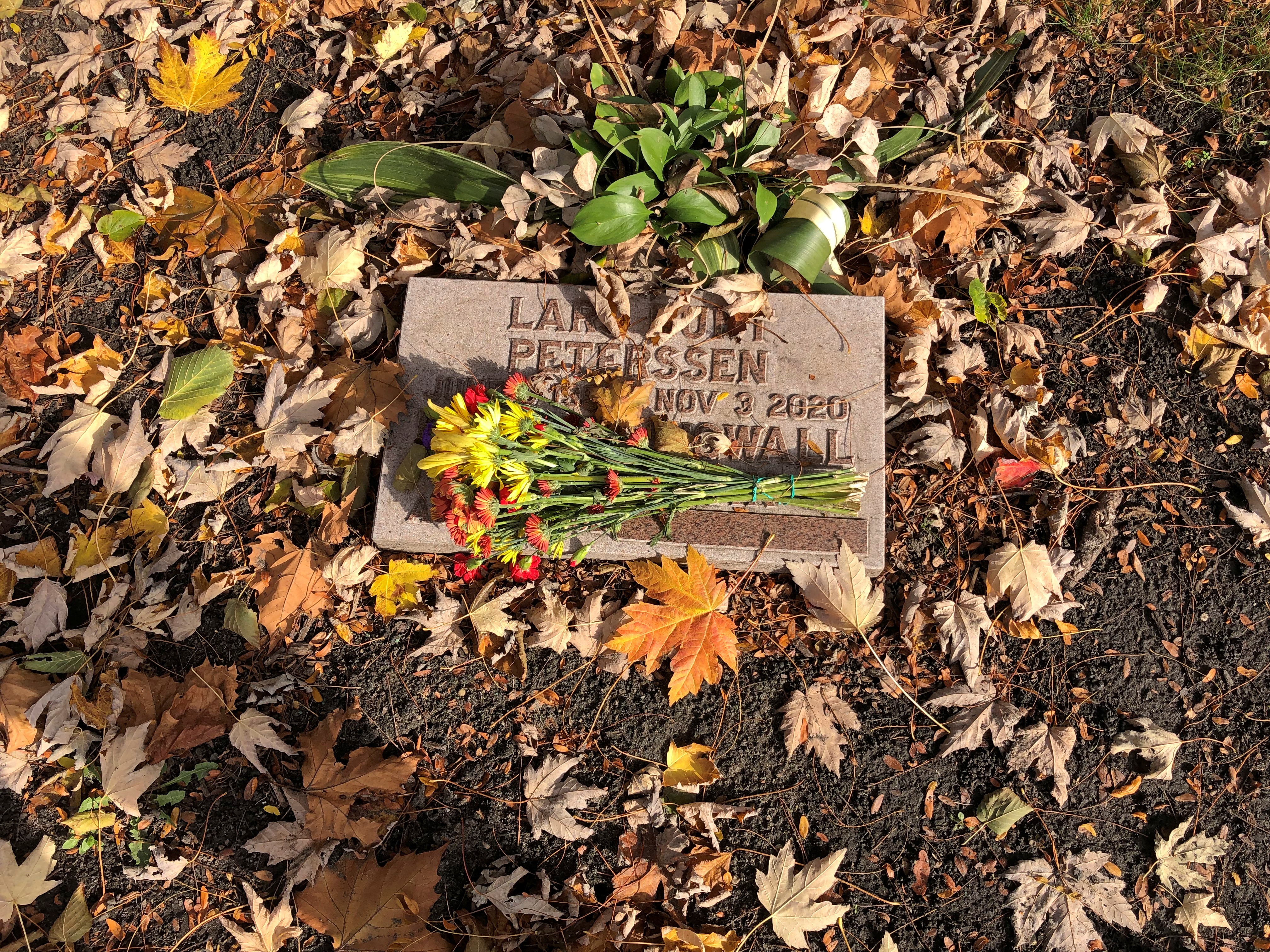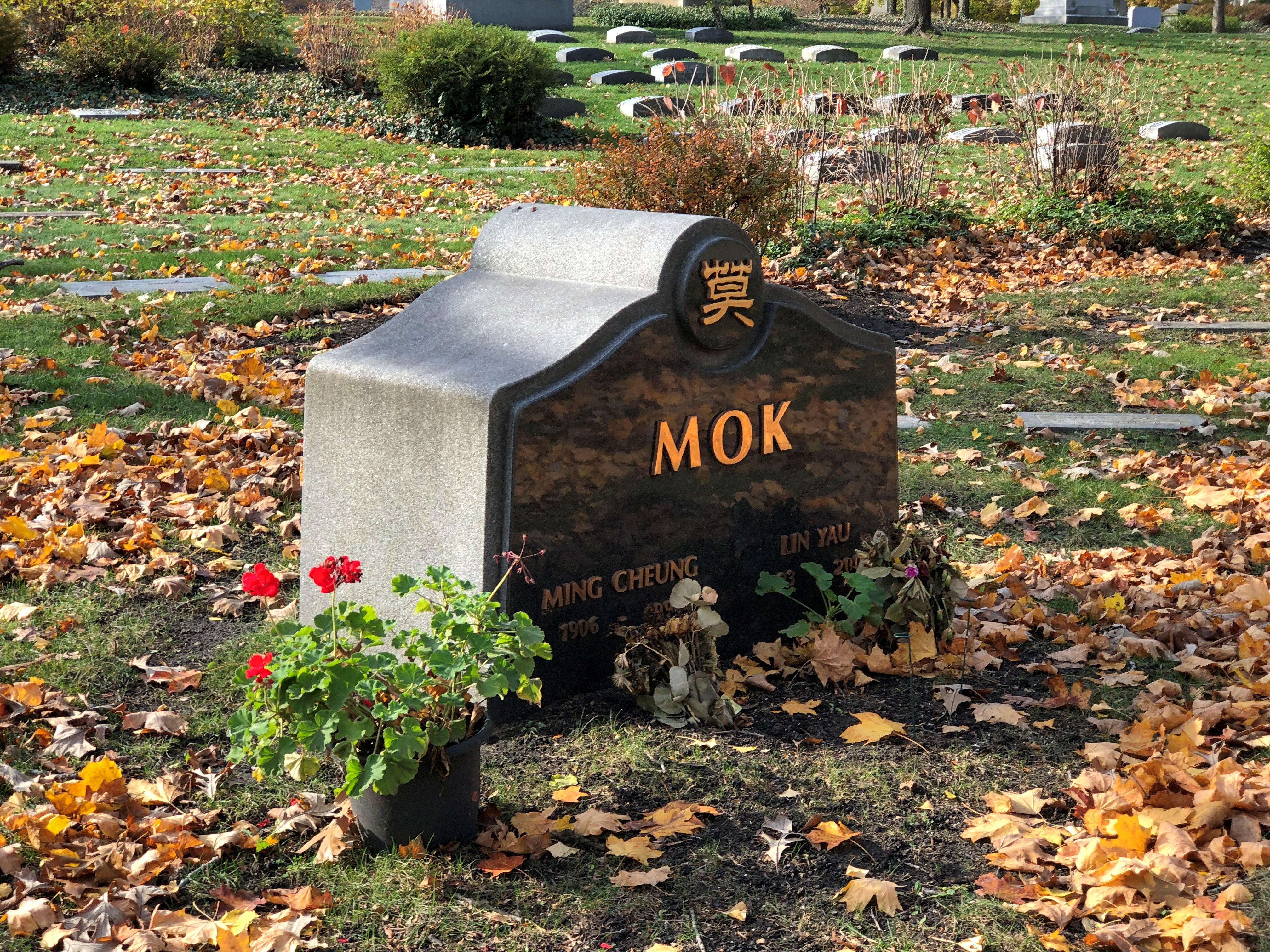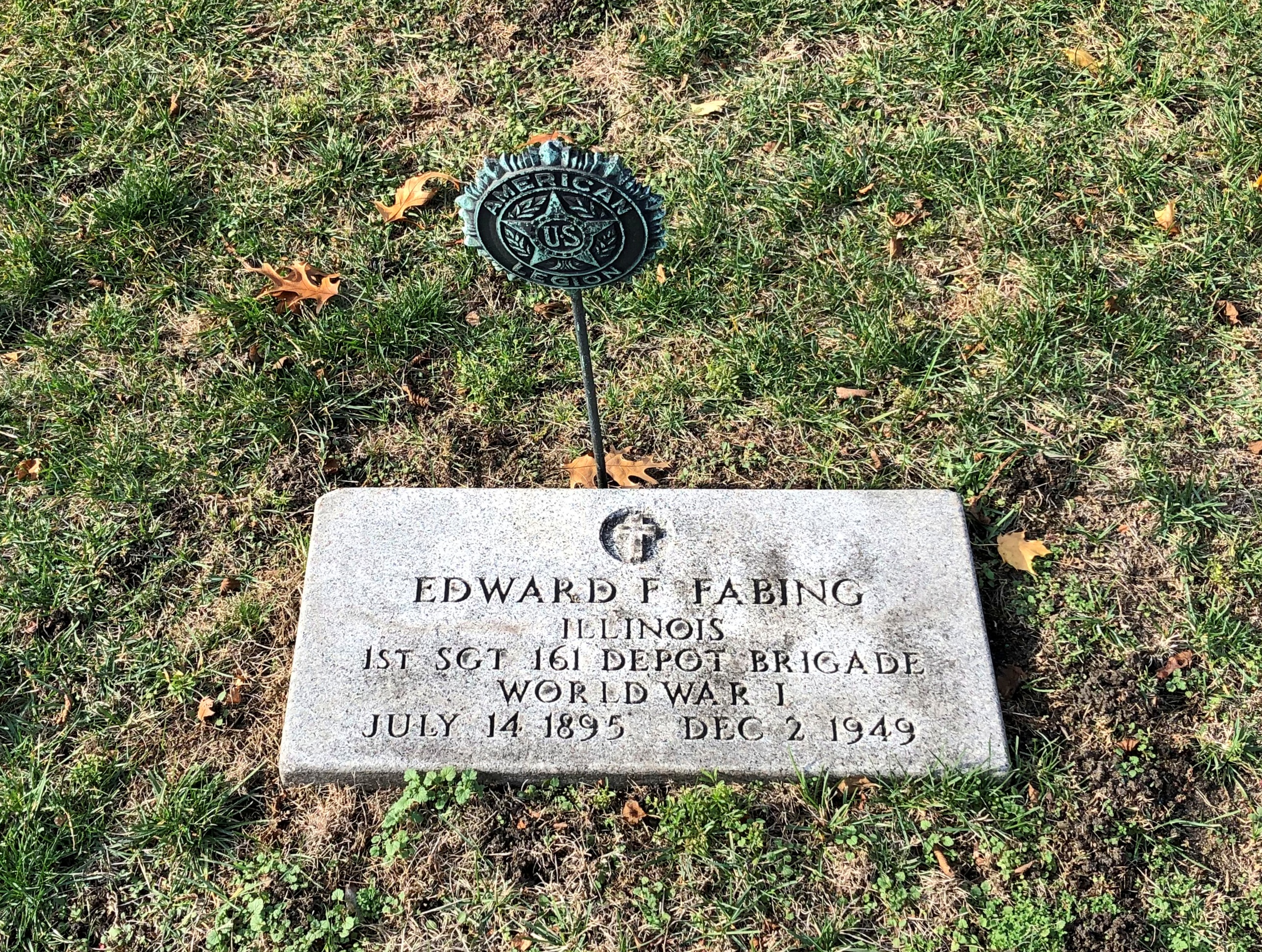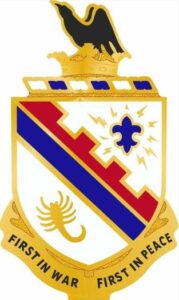Something I didn’t expect to see Sunday before last at Rosehill Cemetery – which is surrounded by the densely populated North Side of Chicago – were deer. But there they were, peacefully munching on grass, living the unusual life of urban deer on the cemetery’s 350 acres. By acreage, Rosehill happens to be the largest in the city.
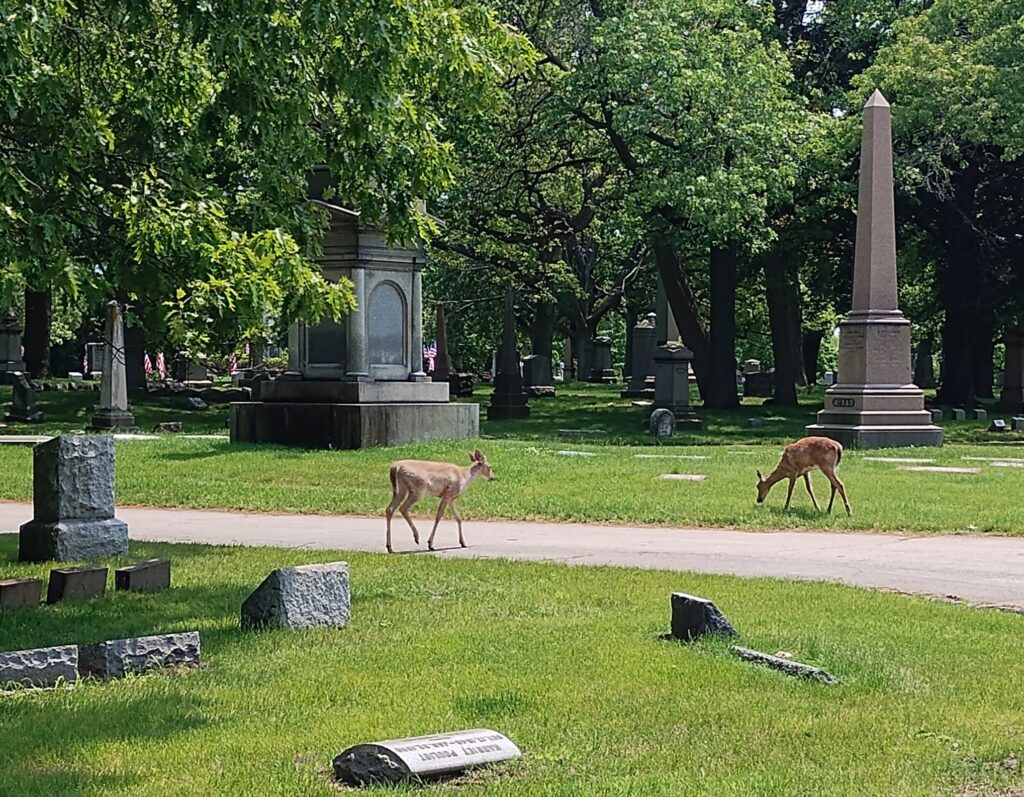
I dropped Yuriko off at her cake class in Humboldt Park that morning and headed north to visit the cemetery. It was a fine, warm day. I couldn’t remember the last time I’d been there, but I knew it had been too long, since Rosehill is one of the great metro Chicago cemeteries, in the same league as Graceland, Bohemian National, Mount Carmel, Oak Woods and Forest Home.
Of all those, Rosehill has the grandest entrance. Once upon a time, trains brought caskets to a station nearby, and hearses would take their funereal loads through the limestone gate, designed by William Boyington (d. 1898), who is better known for the Chicago Water Tower. Just based on those two examples, seems like he was partial to crenellations.
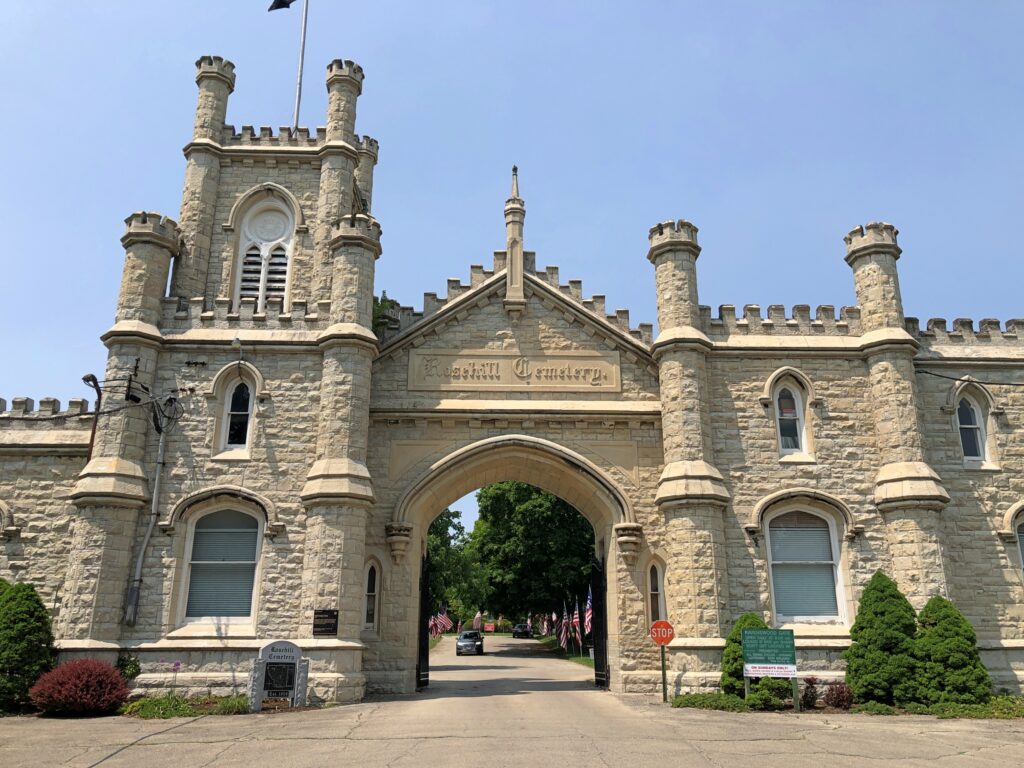
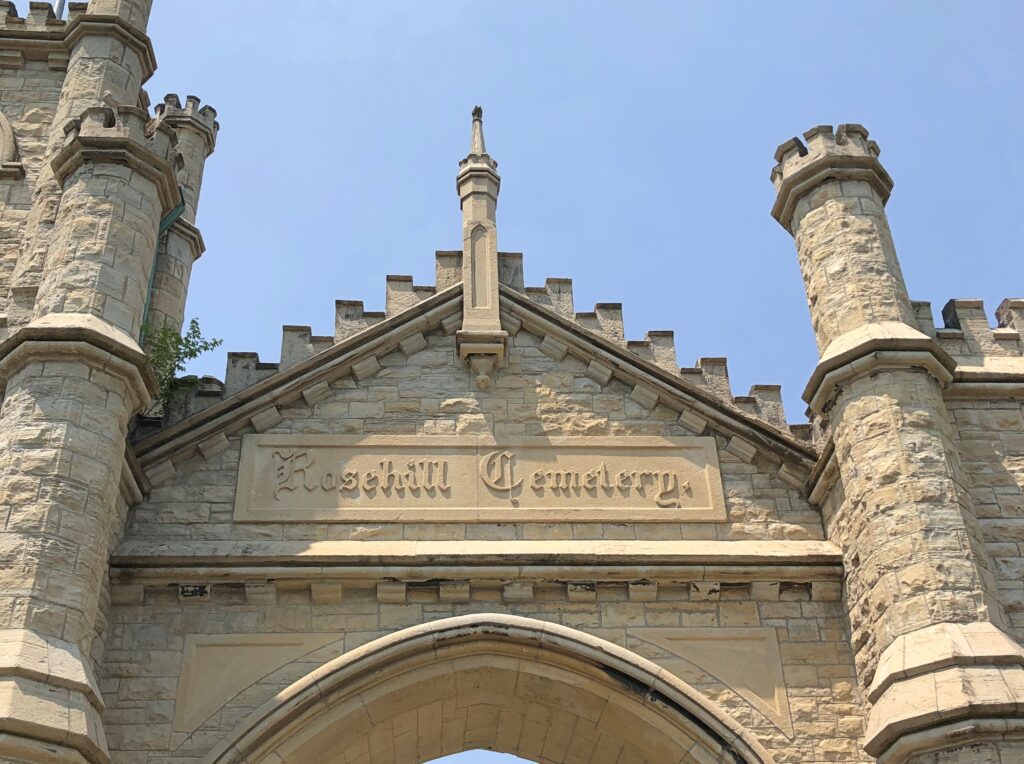
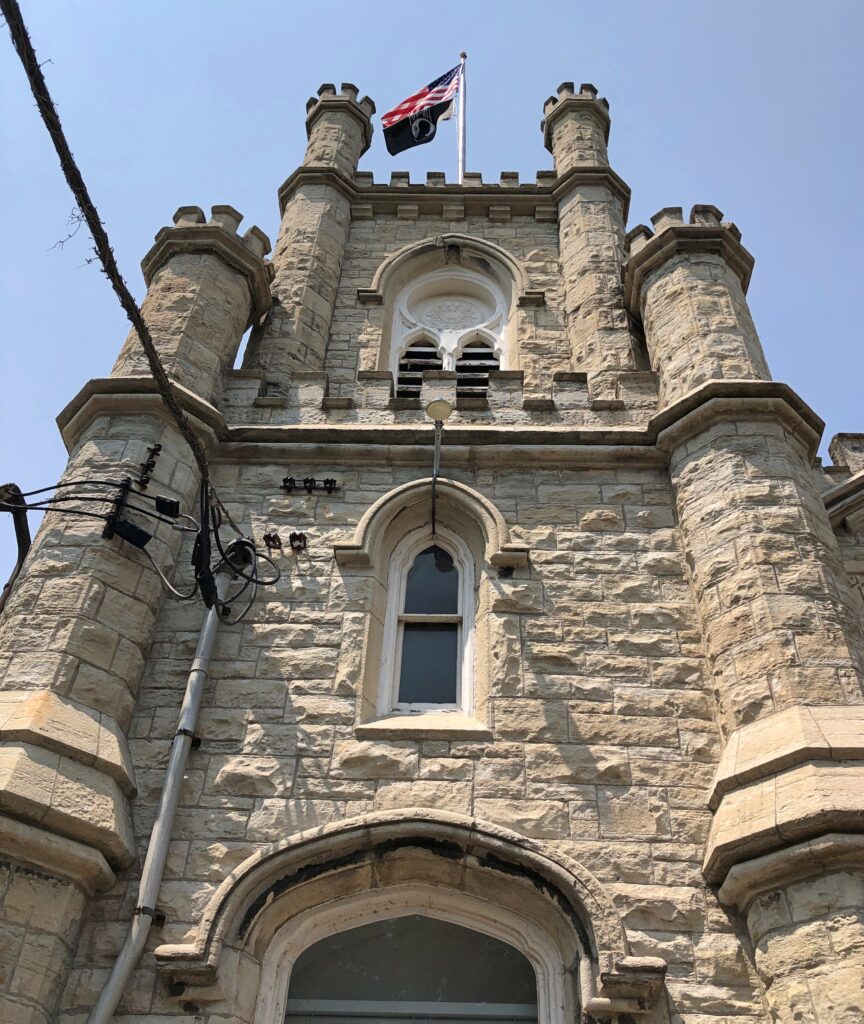
Boyington is also buried in the cemetery, but I didn’t look for him. There was too much else amid the greenery to track down everyone notable. I did make a point of finding the mausoleum of Charles G. Dawes, 30th Vice President of the United States, who served during Coolidge’s full term from 1925 to ’29.
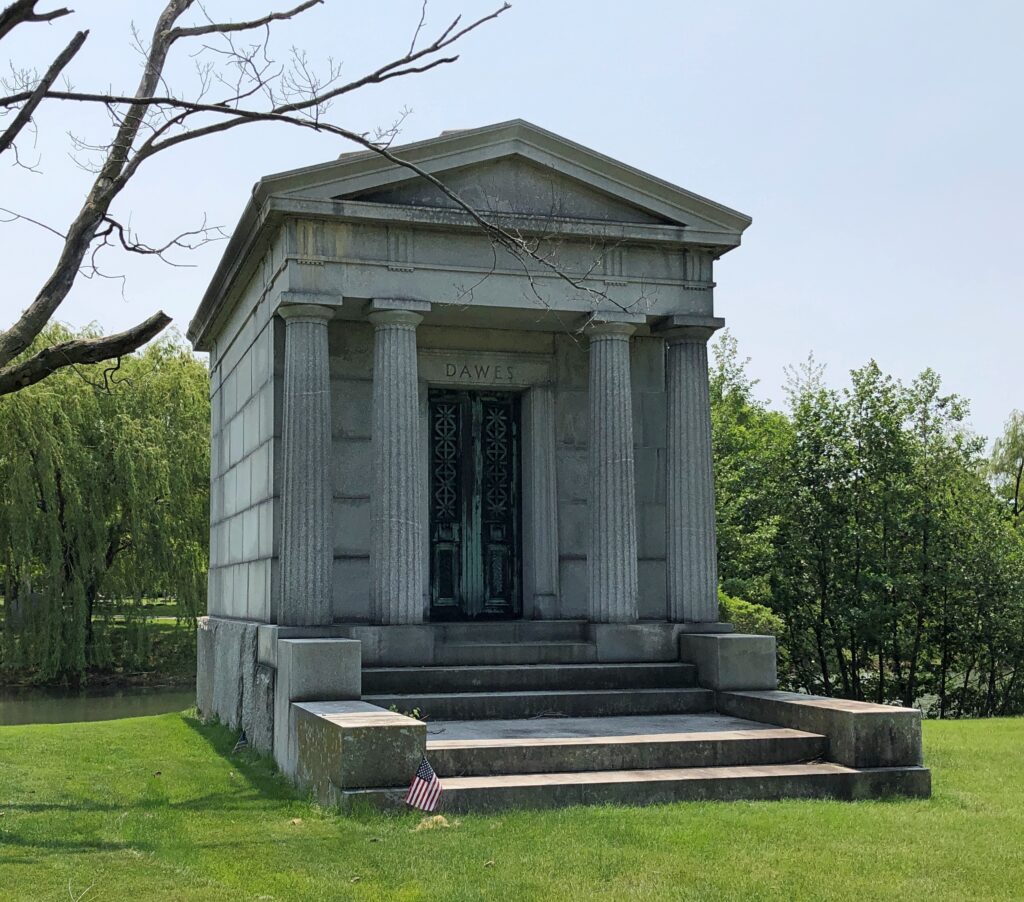
Rosehill doesn’t have a vast number of mausoleums, but there are some others.
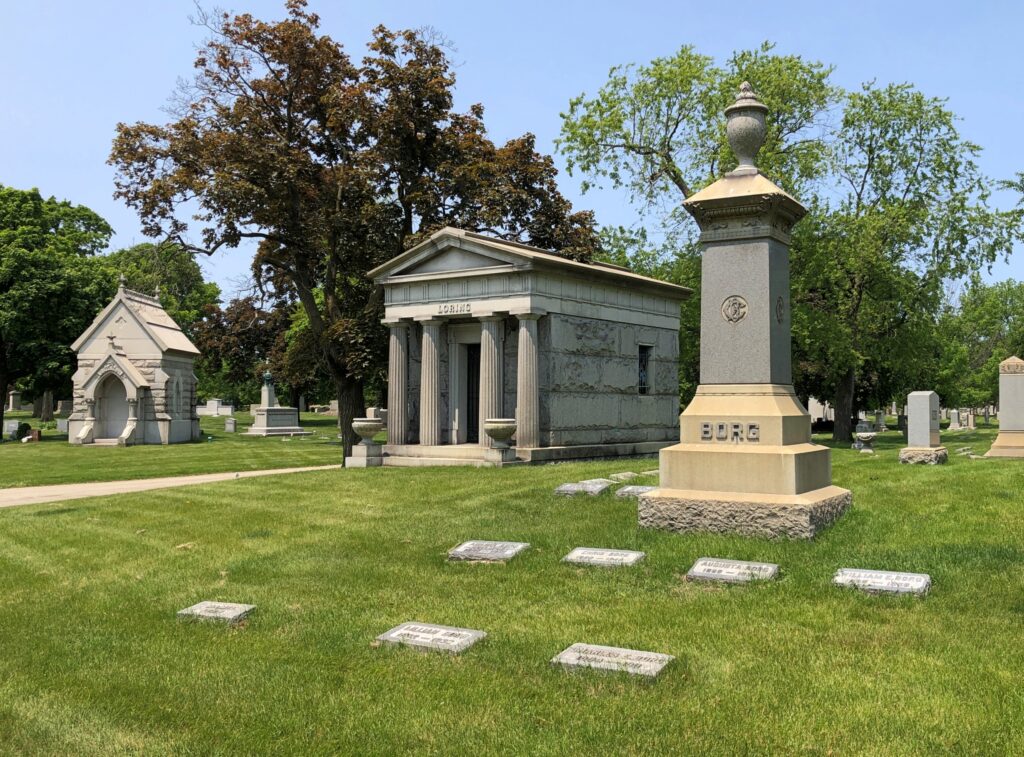
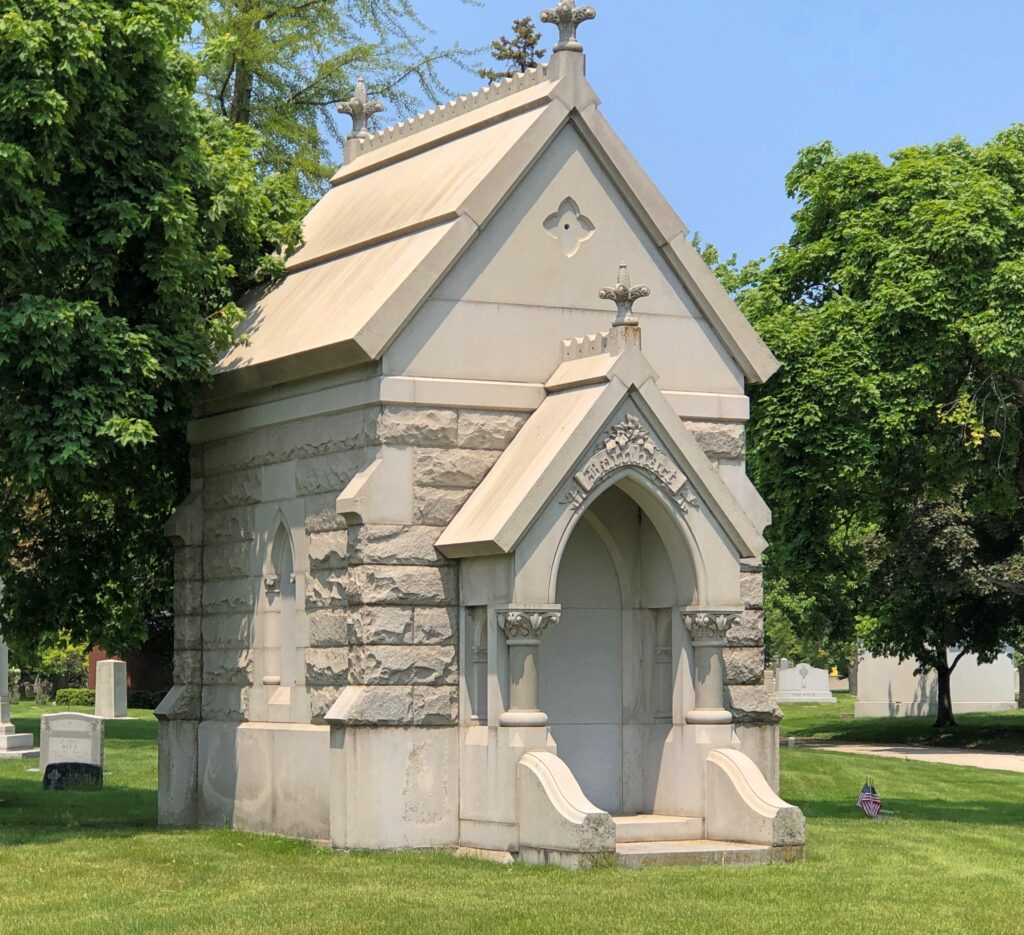
Hey, it’s Darius!
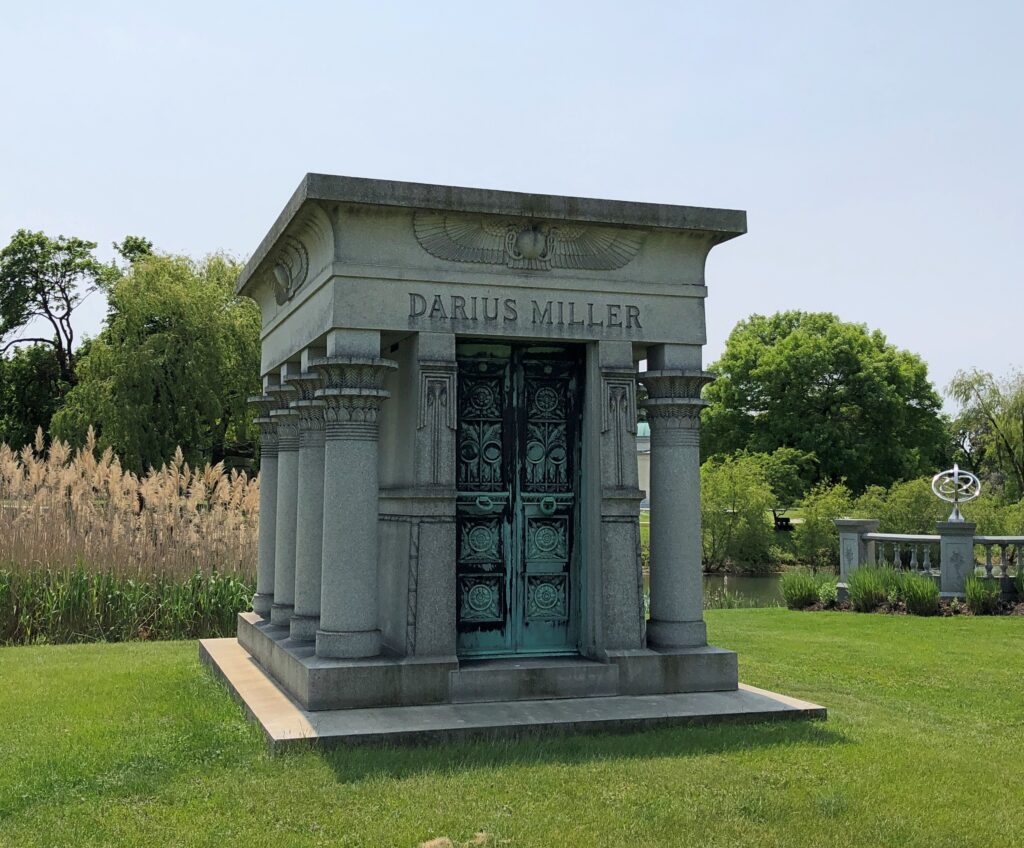
In his Egyptian-style tomb. One for the ages. As a baby name, Darius had a vogue just before and after the turn of the 21st century, when as many as 0.06 percent of babies born in the U.S. received that name. Mostly boys (as you’d think), but a few girls. It would have never occurred to us to append that name to either of our daughters during those years, which happened to be prime child-naming years for us.
I liked this memorial – a path to the water feature, shared by the Weese and Meyer families.
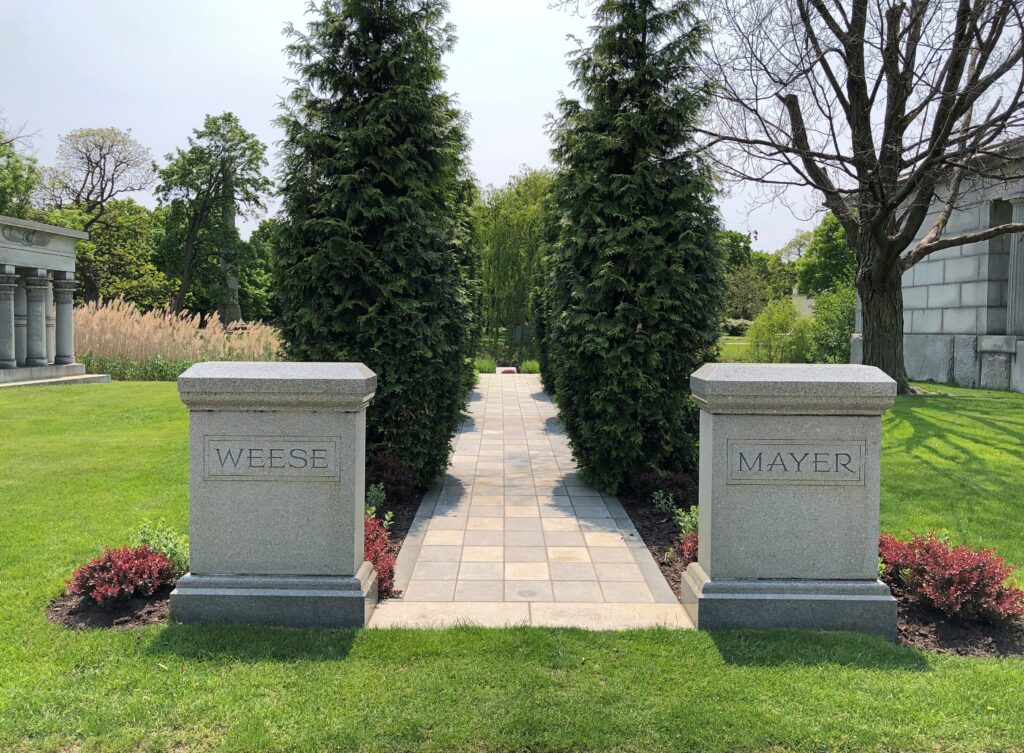
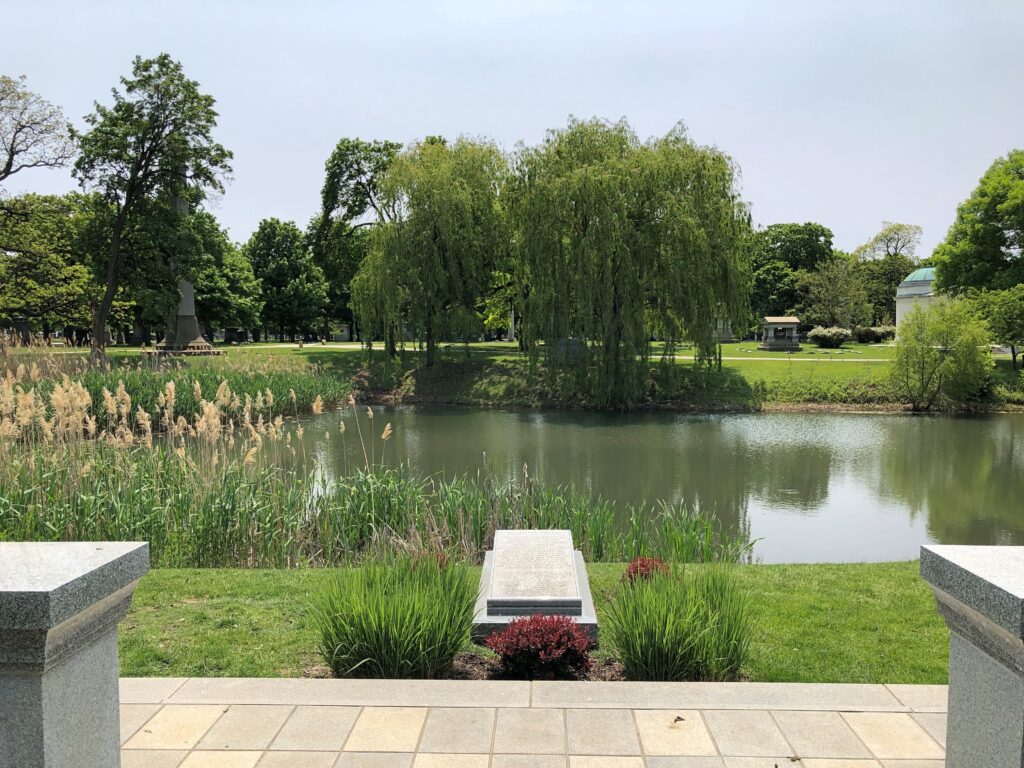
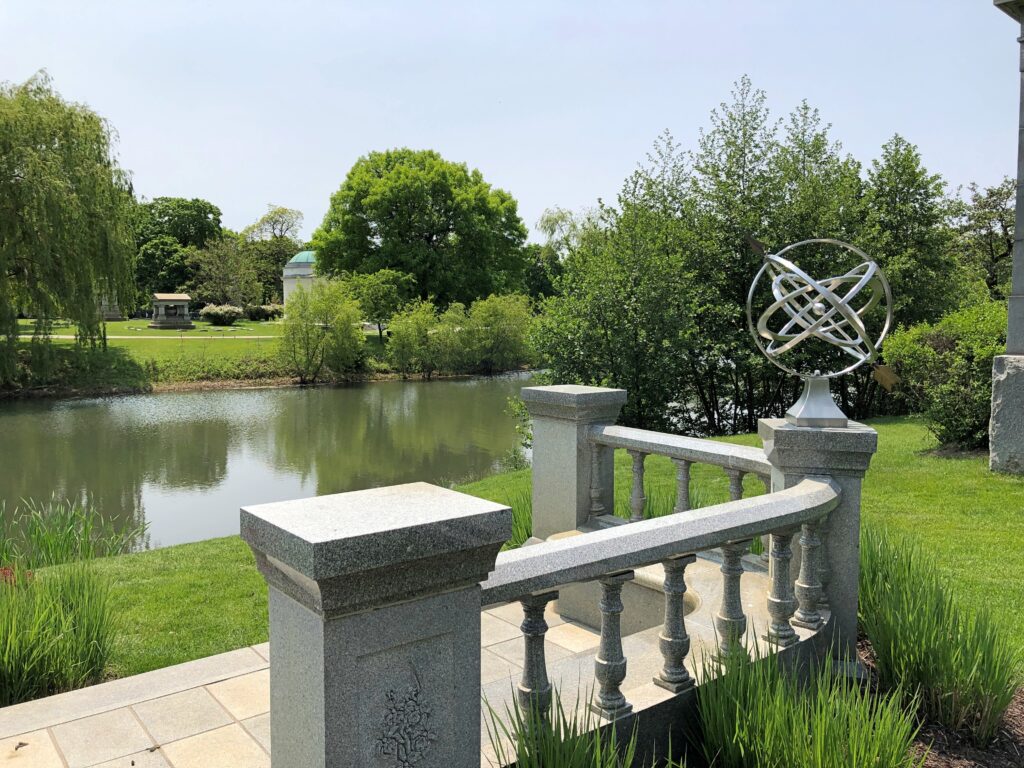
Mausoleums are well and good, but the main reason Rosehill is among the Chicago greats: a rich variety of memorials in a lush setting.
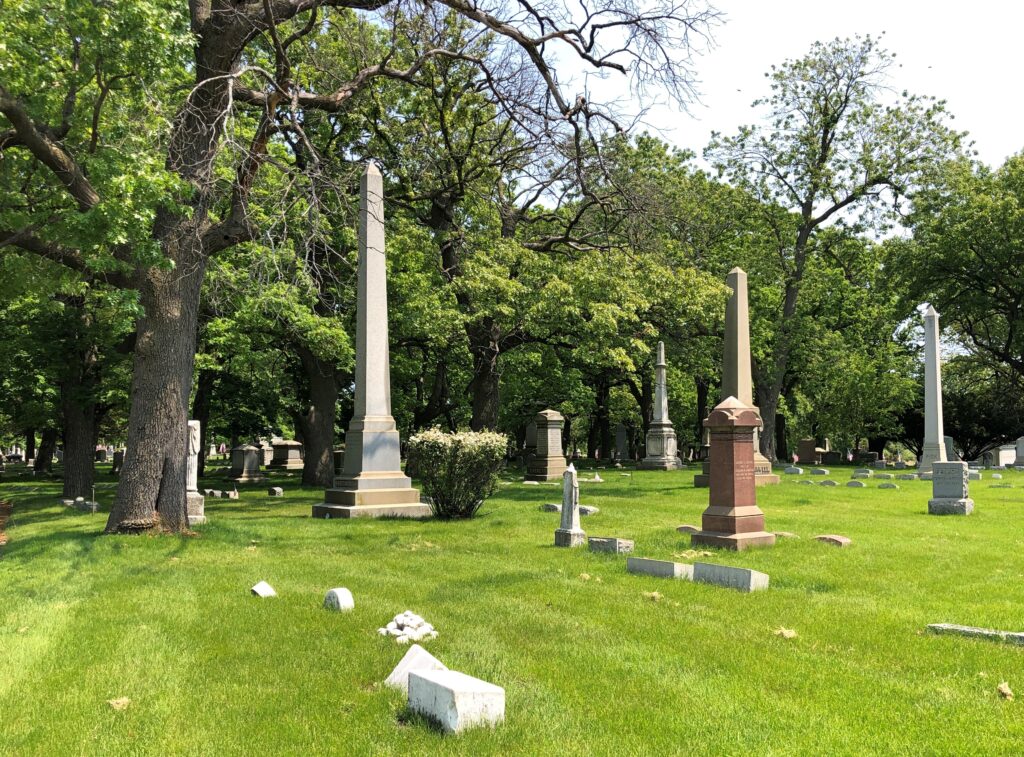
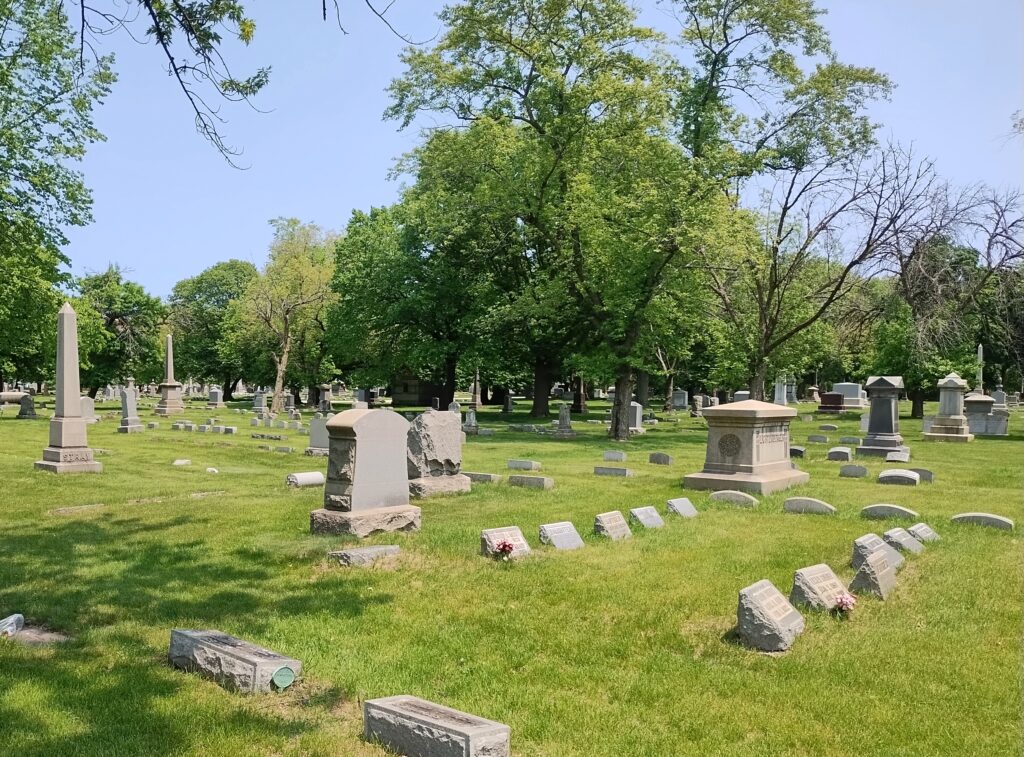

This is Francis Willard, founder of the WCTU.
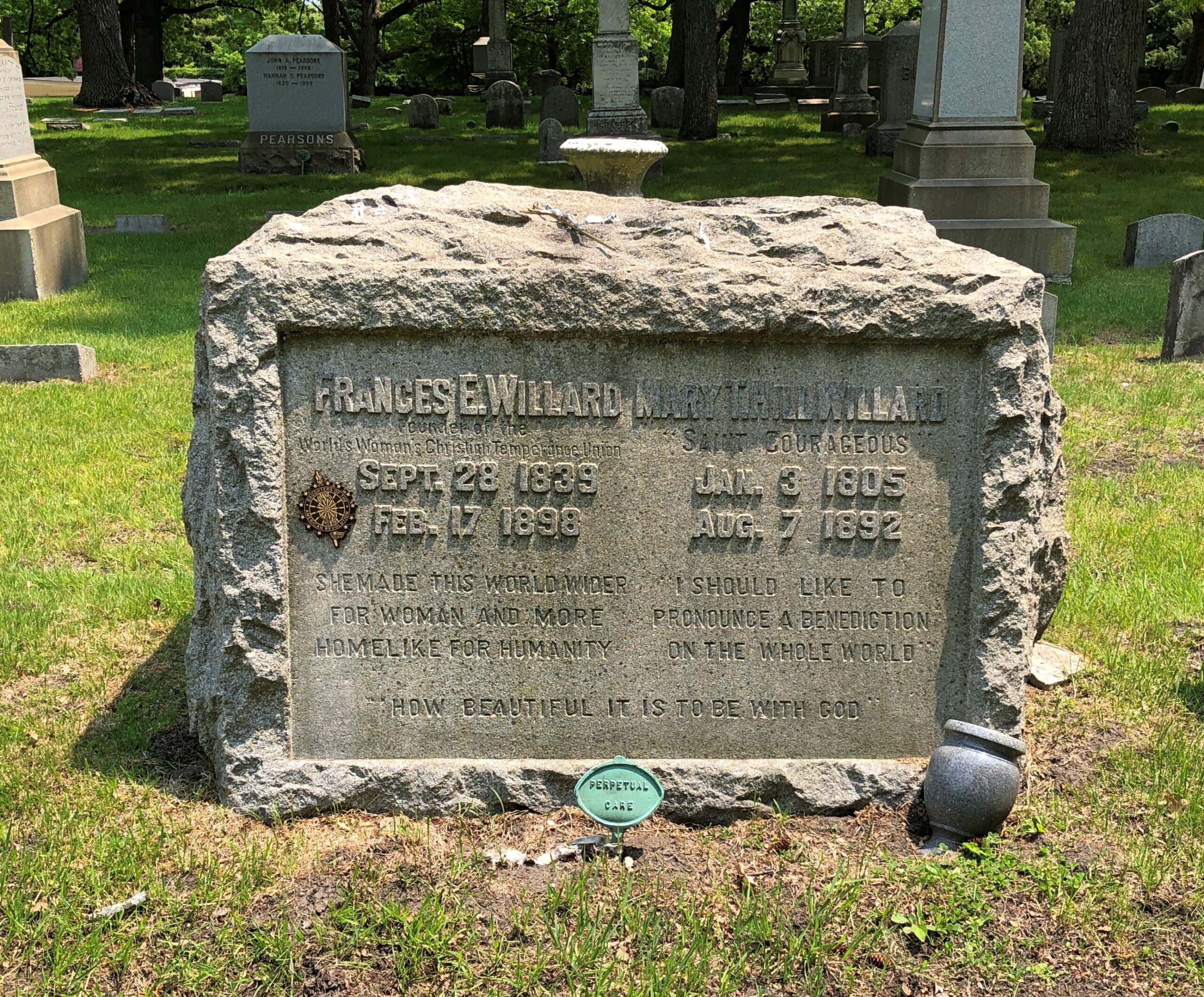
A wordy memorial, though I’m sure with fond intentions on the part of his family. Here is an obit. Sadly odd that for an expert in eldercare, he only lived to be 66. Not terrifically old, in my current opinion.
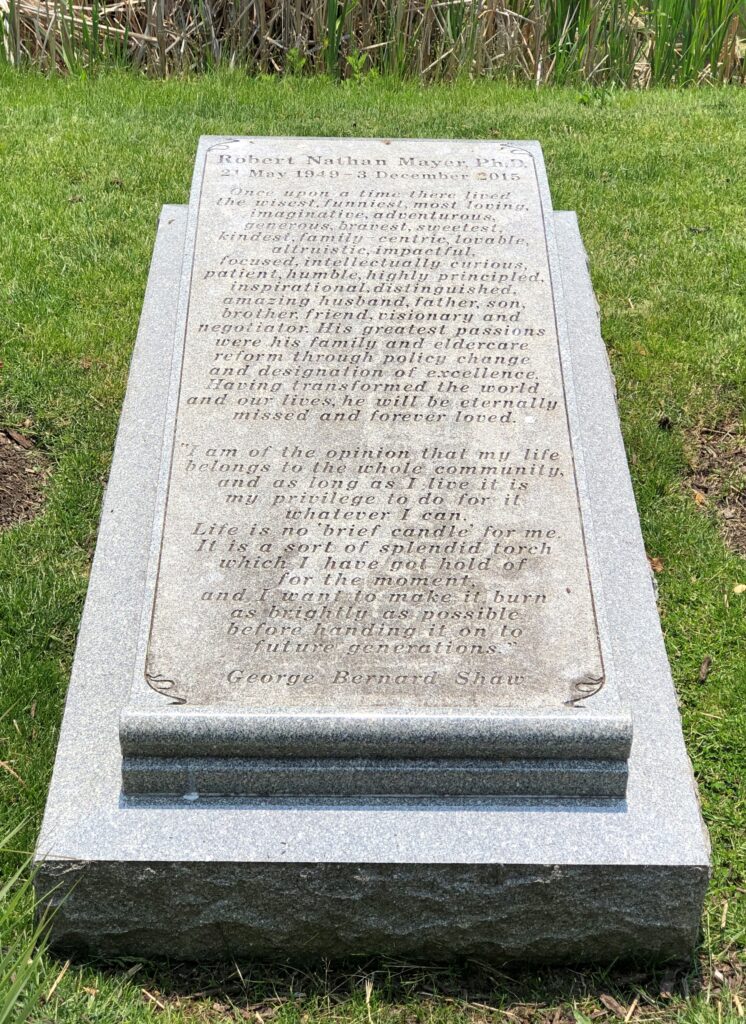
Most permanent residents were not notable in life, something almost everyone could say at any point in history. What remains are stones old and worn or merely simple. The most affecting ones, in some ways.

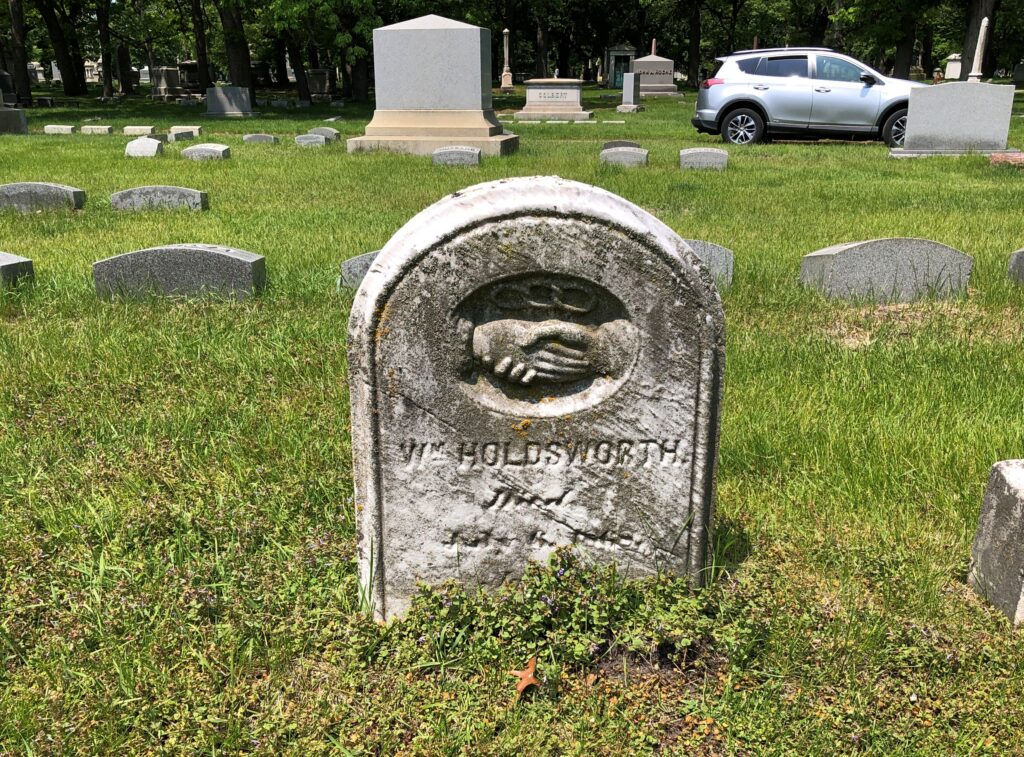
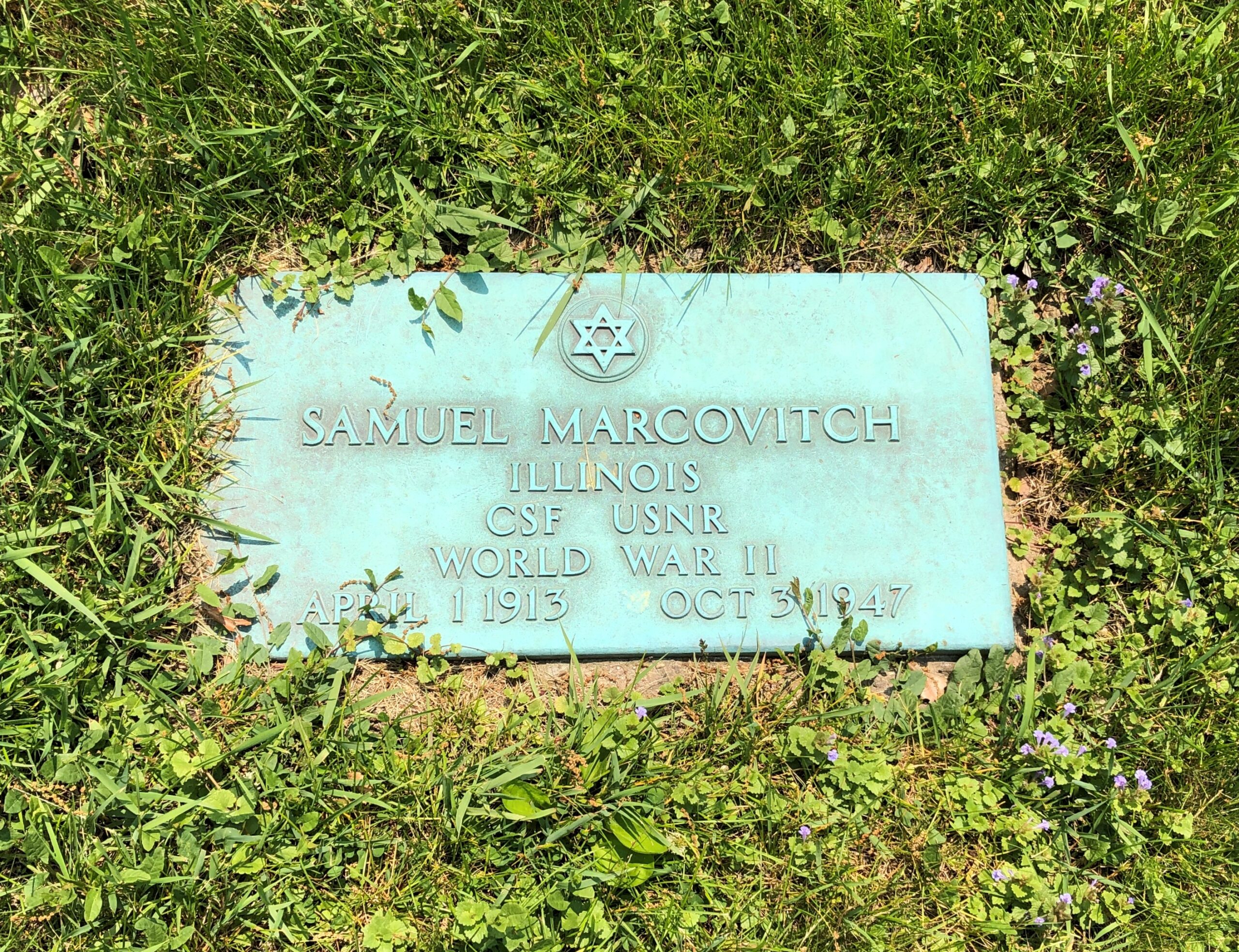
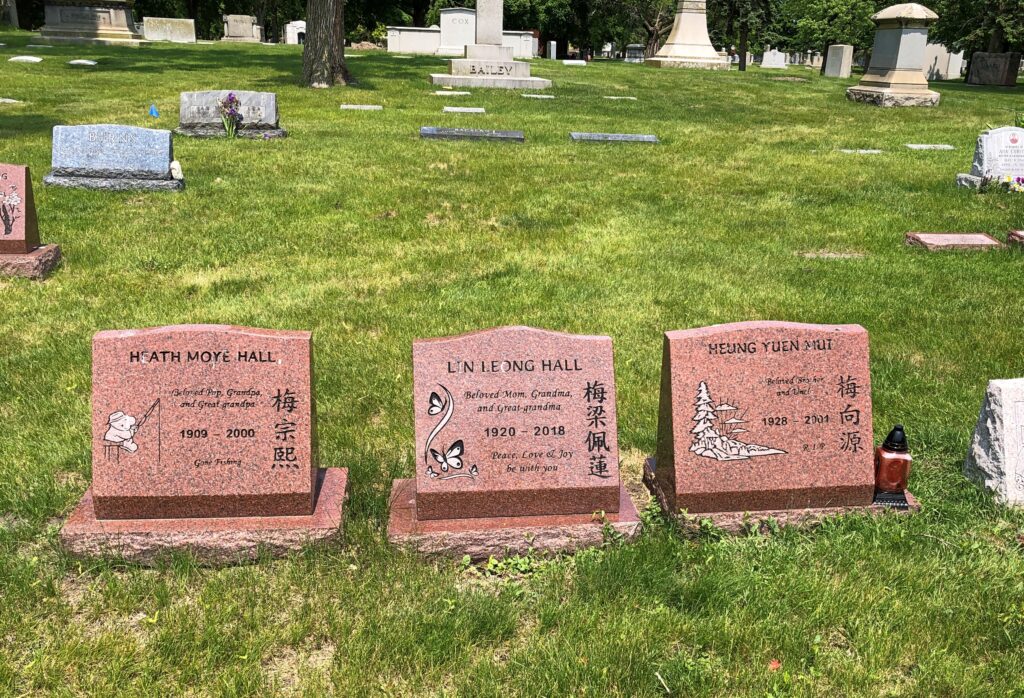
For the affluent who don’t want a mausoleum, there’s always a bronze. Good to give living artists some work, if you or your heirs are going to spend money that way.
Charles J. Hull (d. 1889).
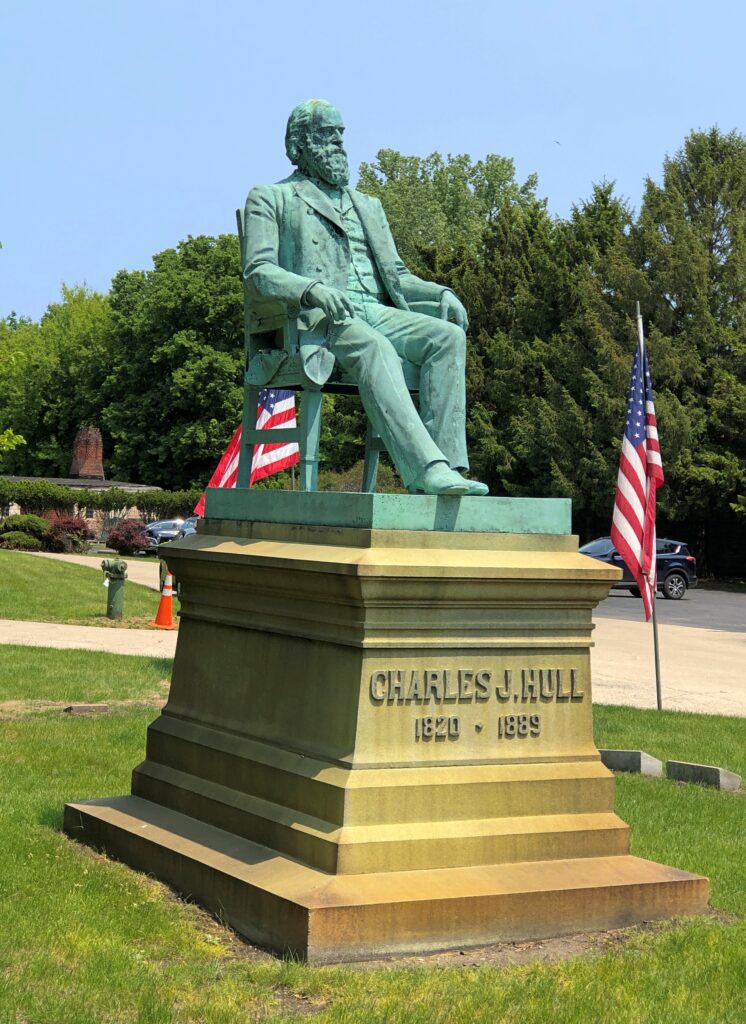
I had to look him up. As this article says, an unusual sort of man. Even for the 19th century, when odd men aplenty could be found in the young Republic. Eventually he made his fortune in Chicago real estate and was a major philanthropist, but I enjoyed more reading about his young life. As a teenager – a term no one would have used at the time – he ran an unlicensed tavern in Ohio for three years. That came to a bad end, and he not only became a teetotaler afterward, he eventually was a temperance activist. Not that I’d want to have lived then, but I feel a sneaking admiration for the lax rules of the time.
